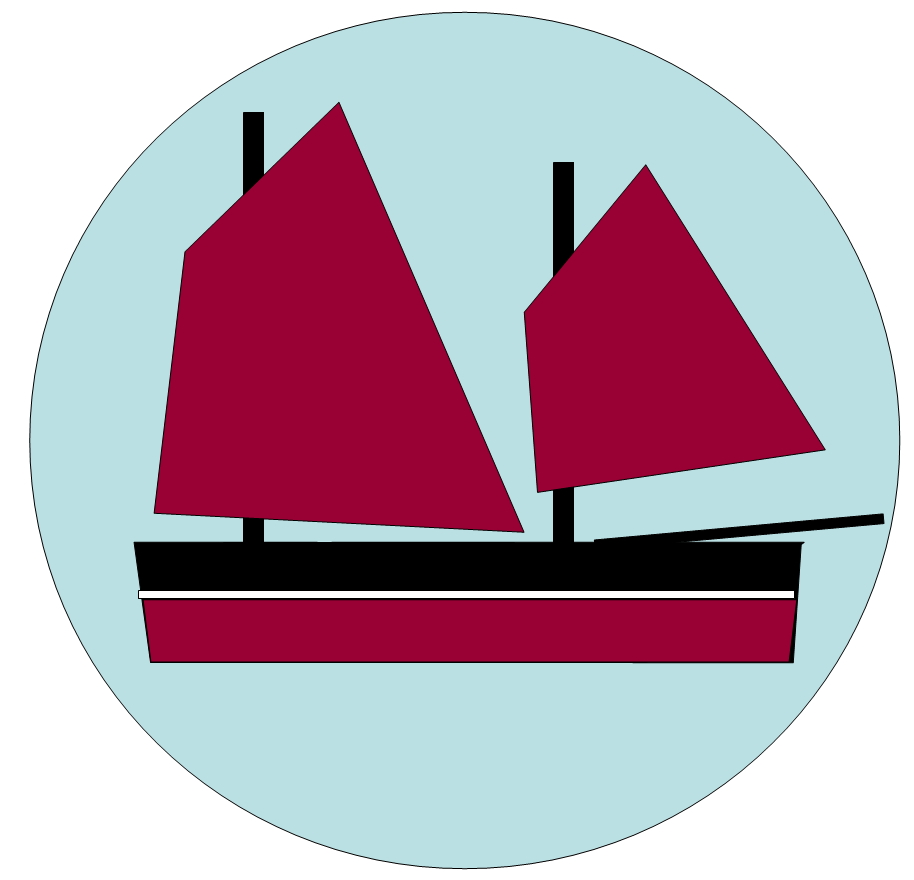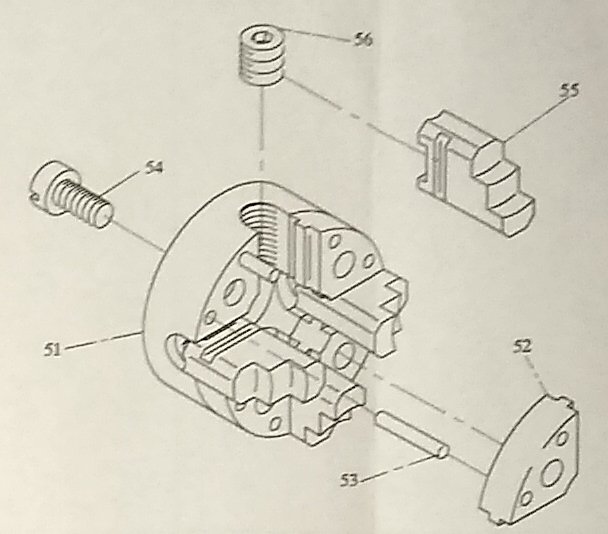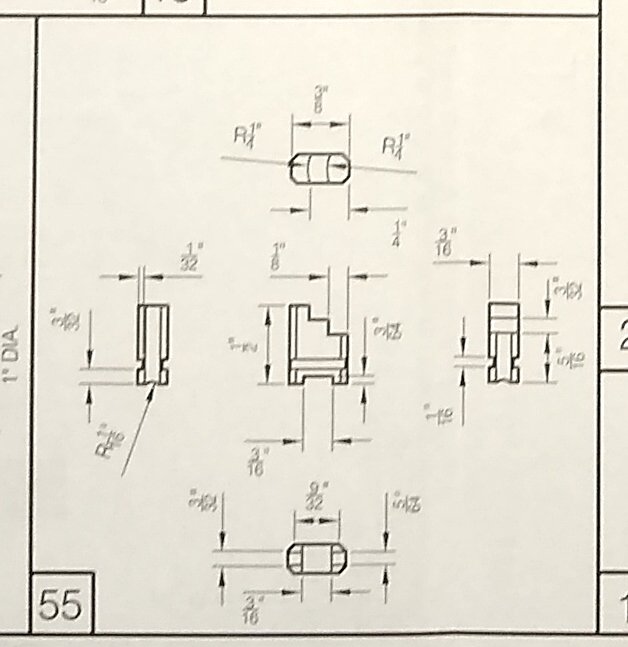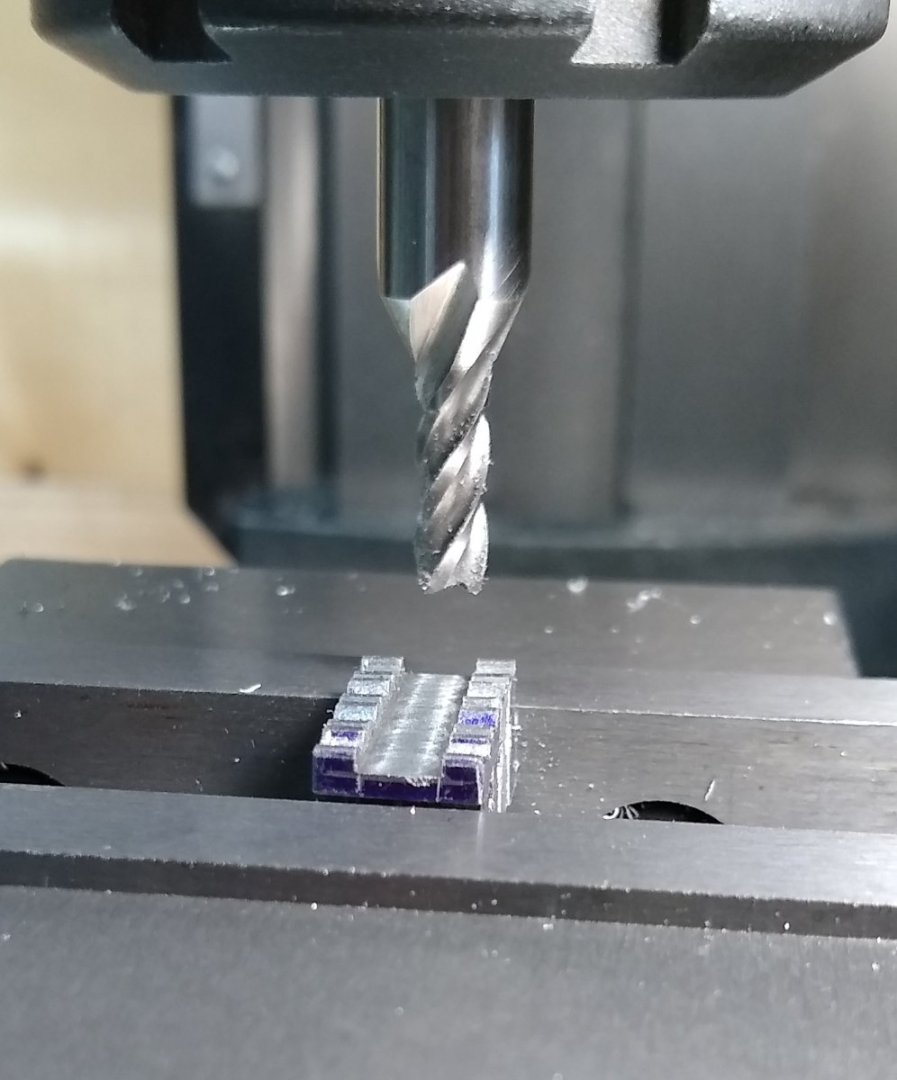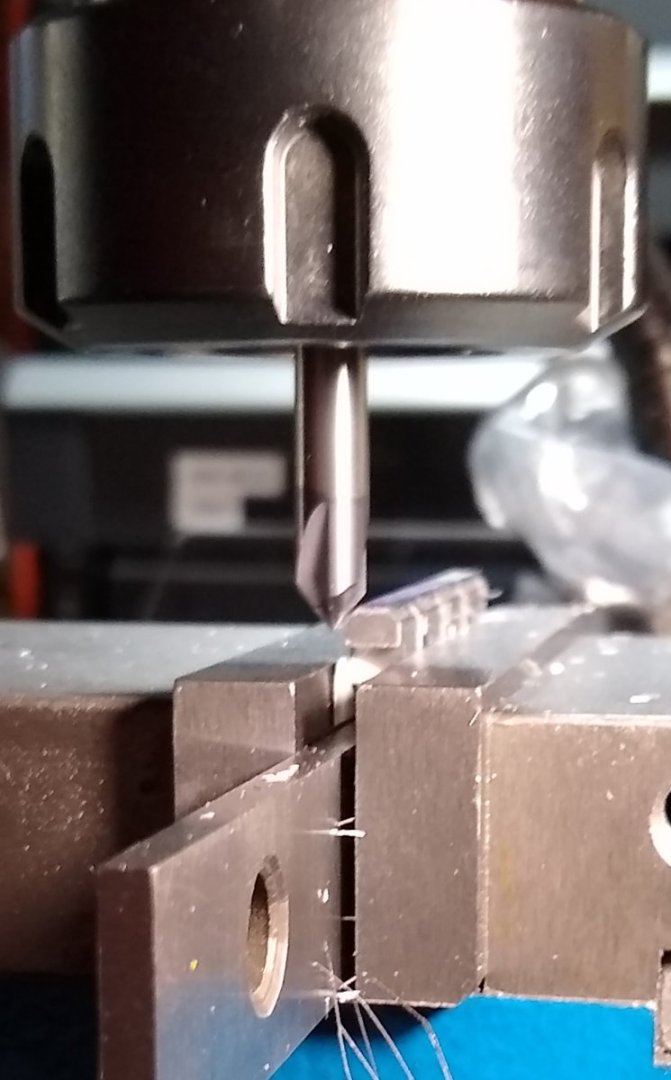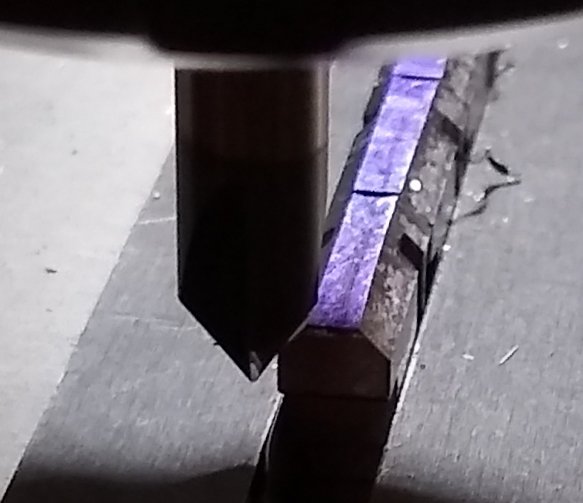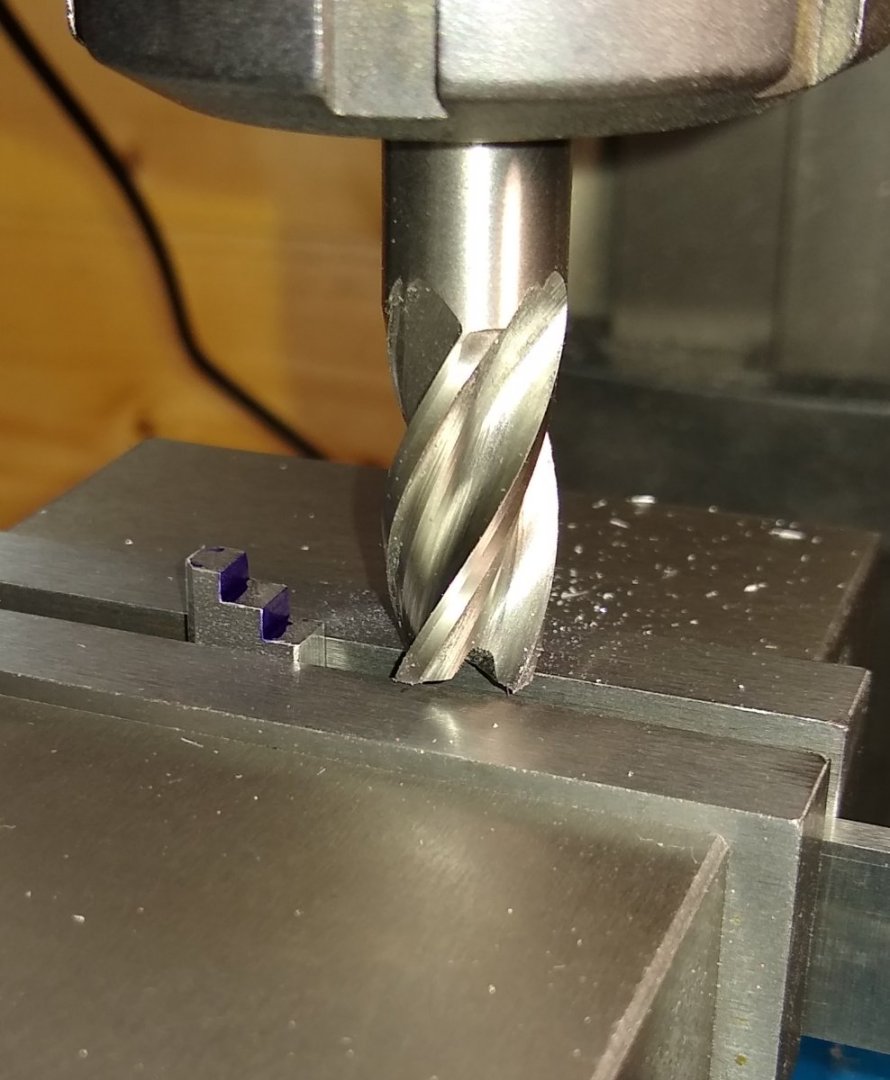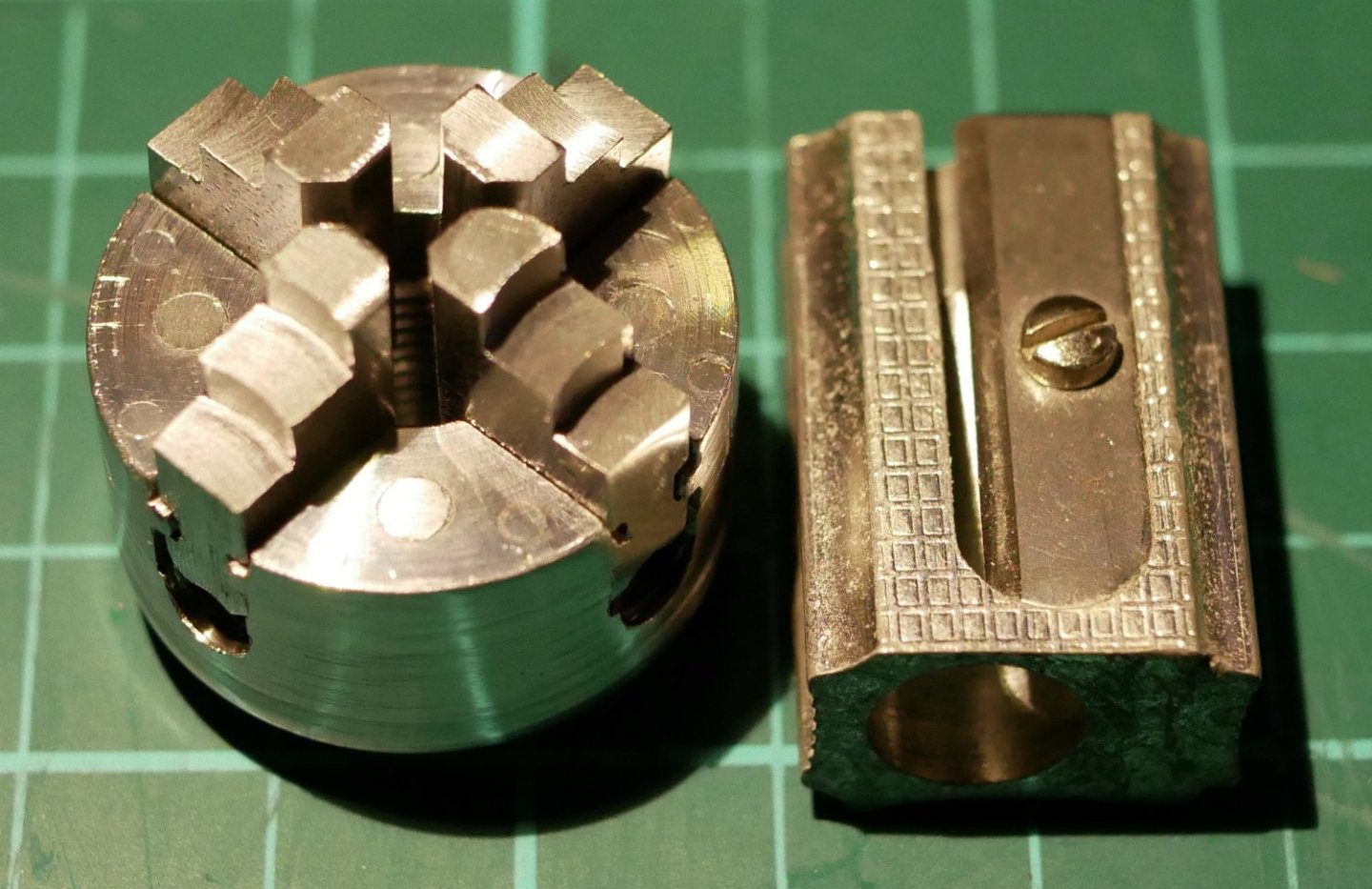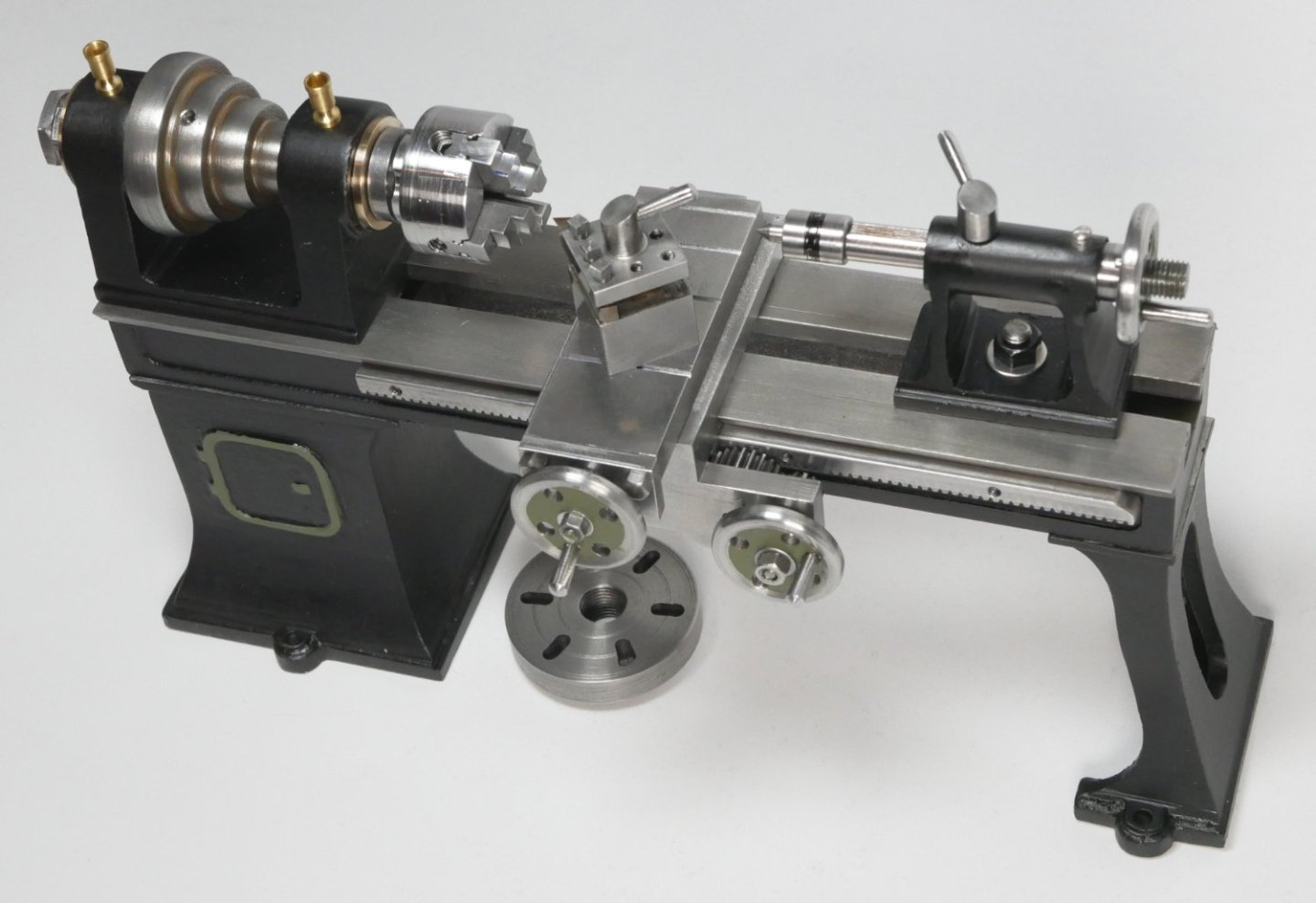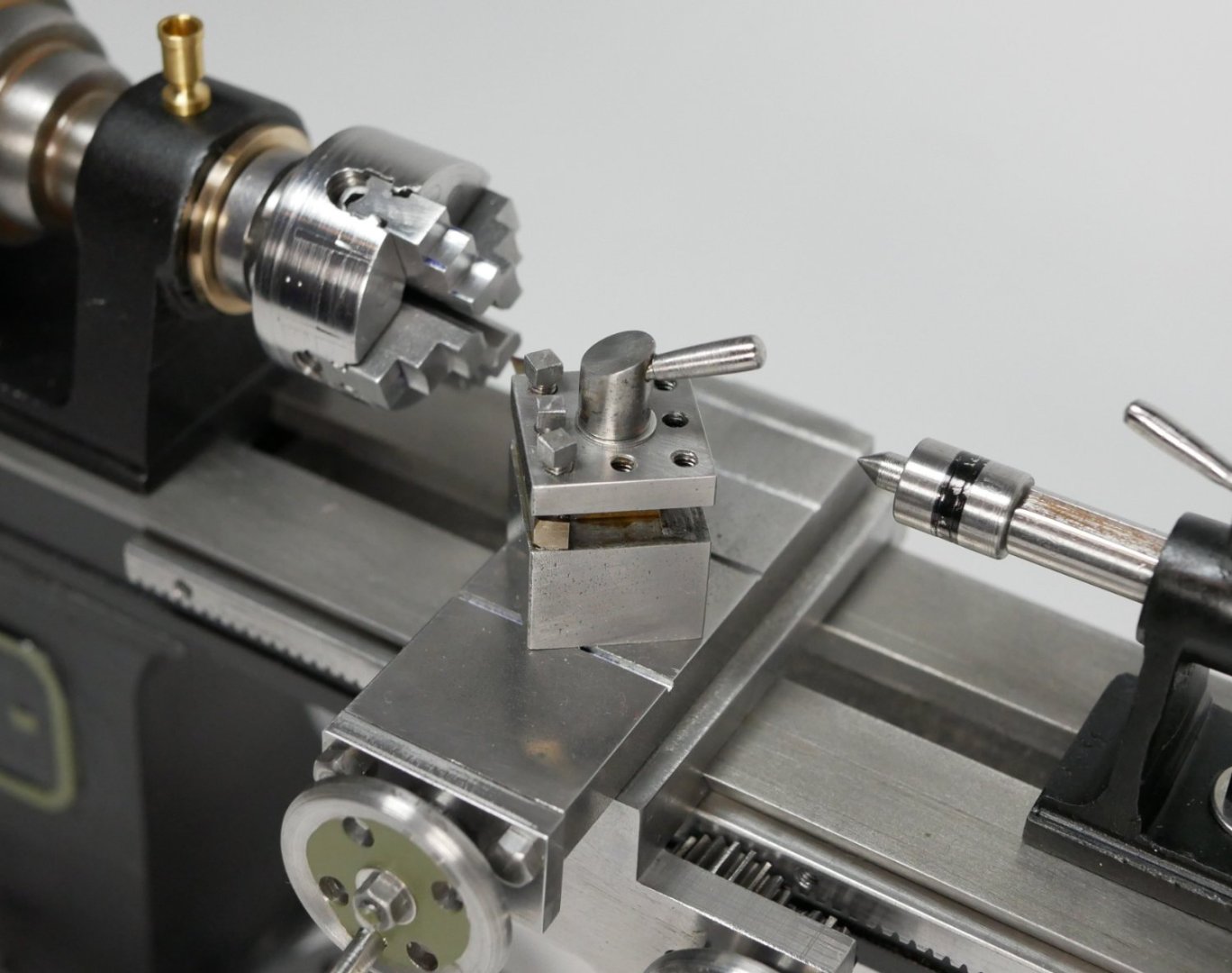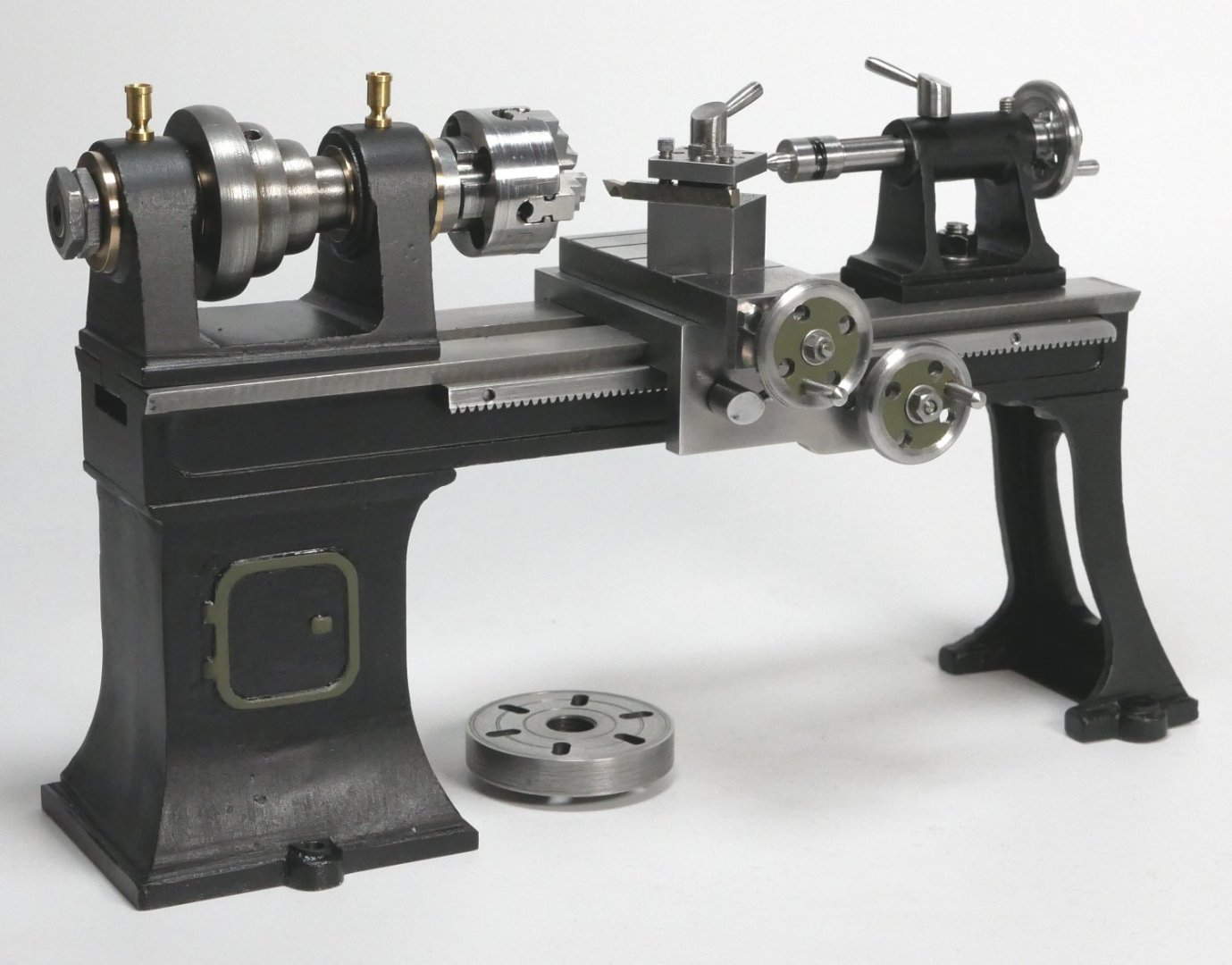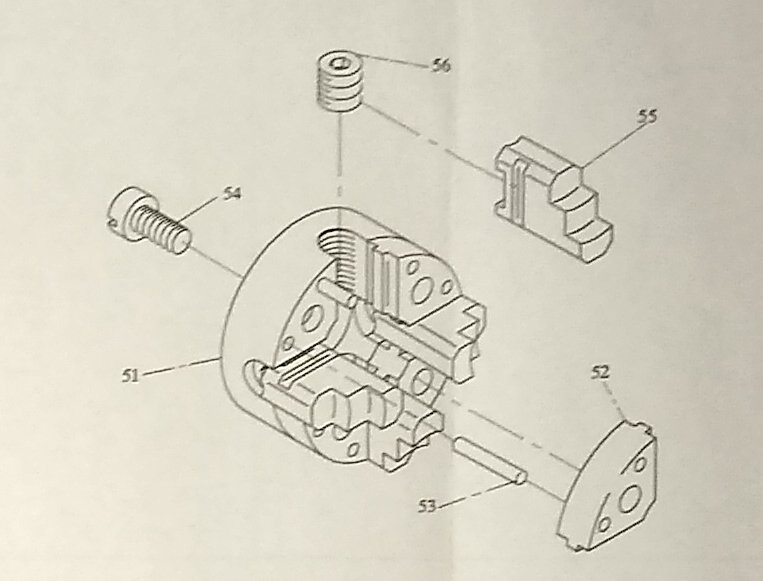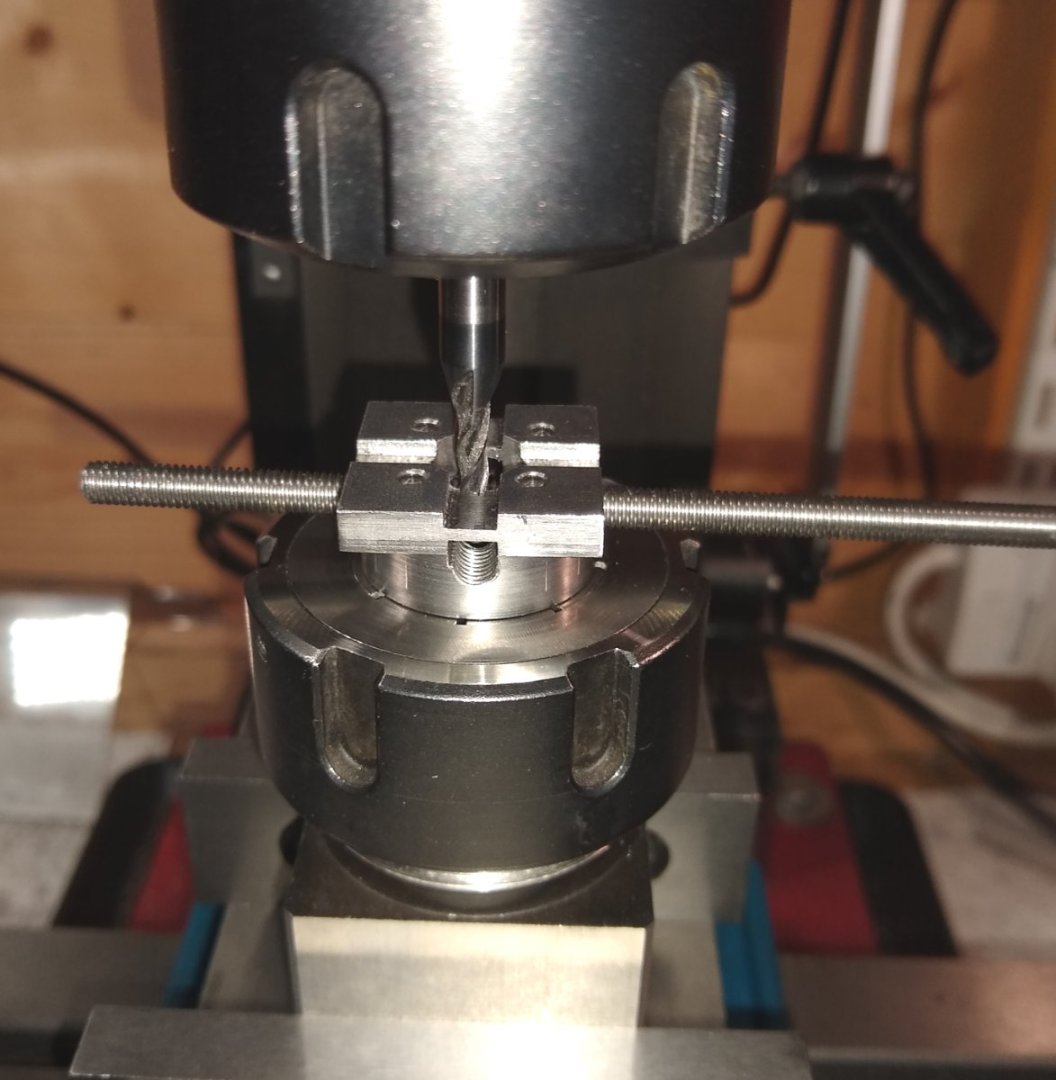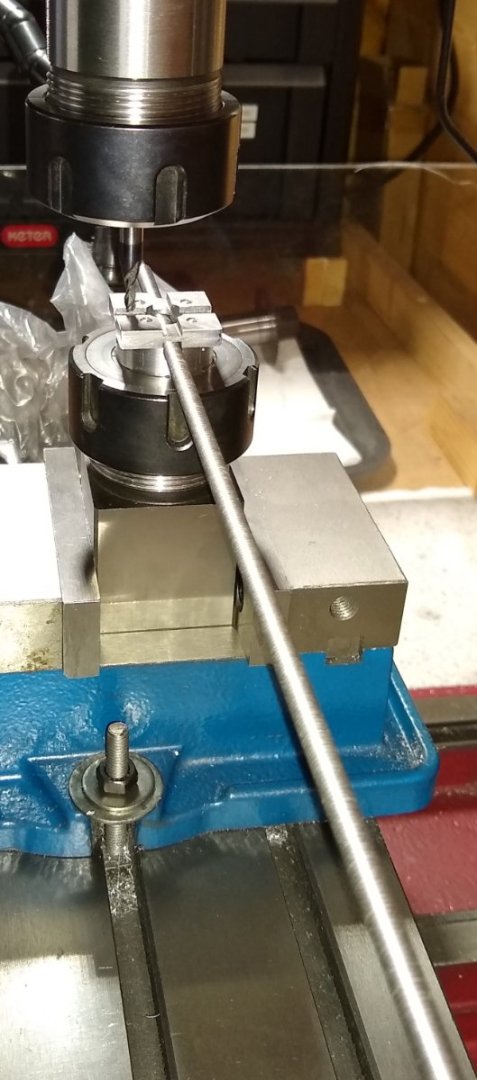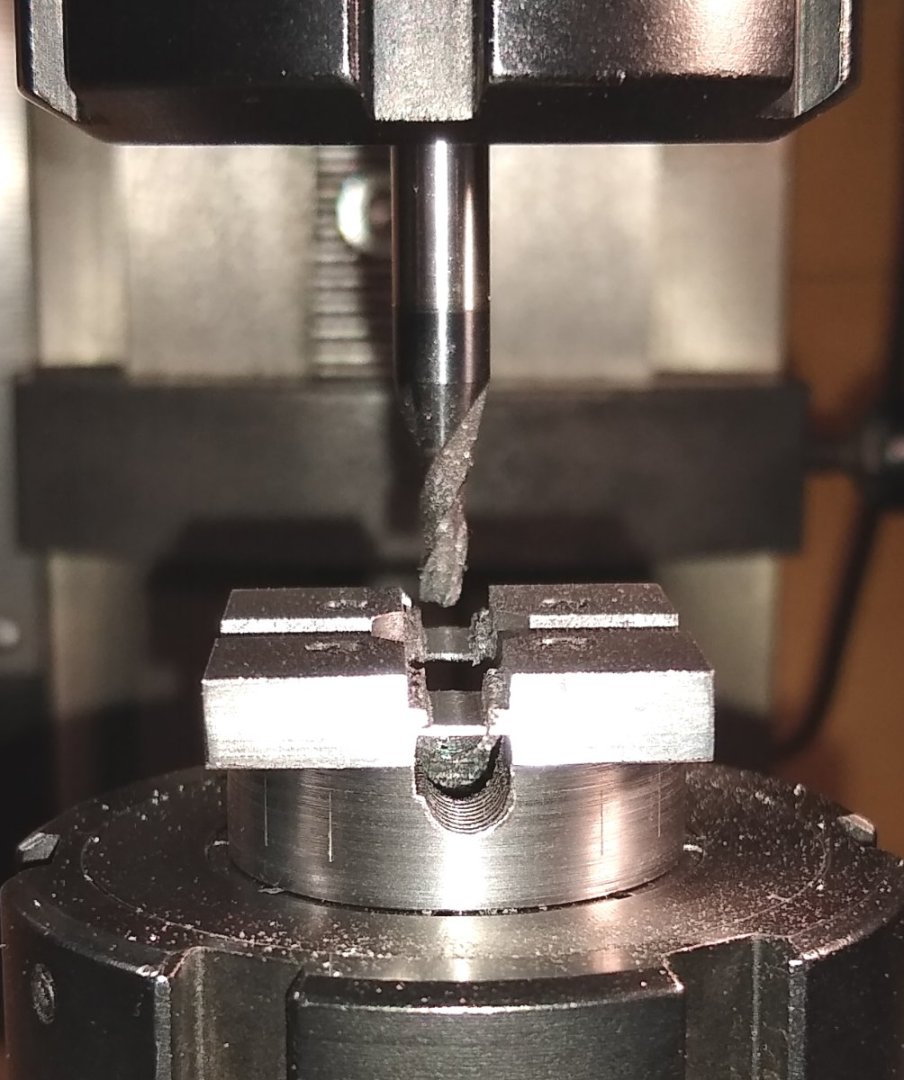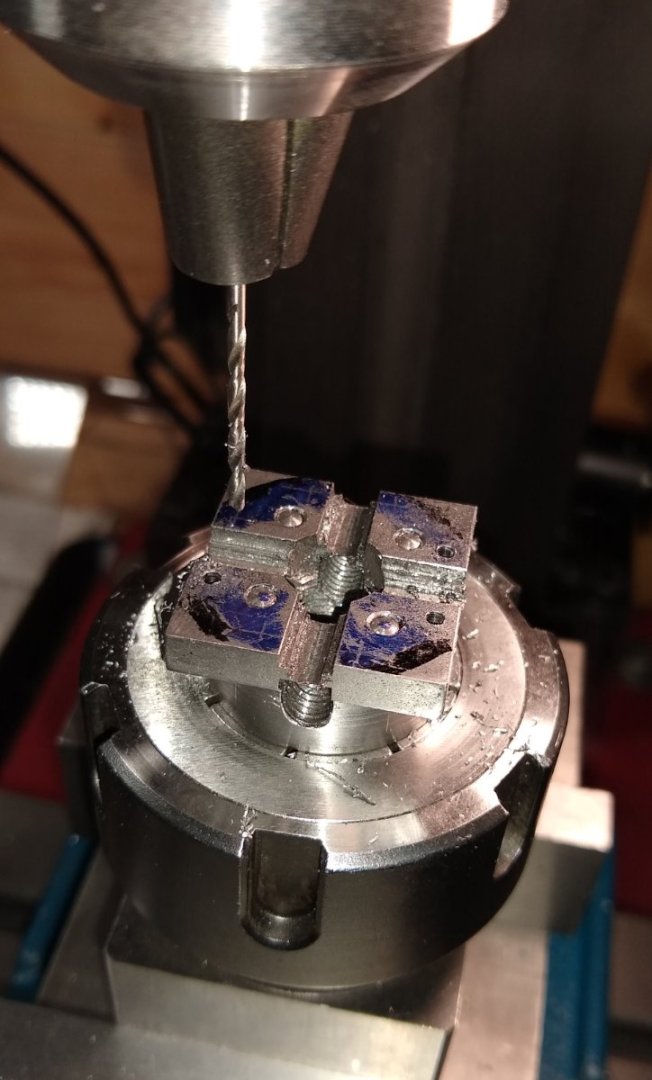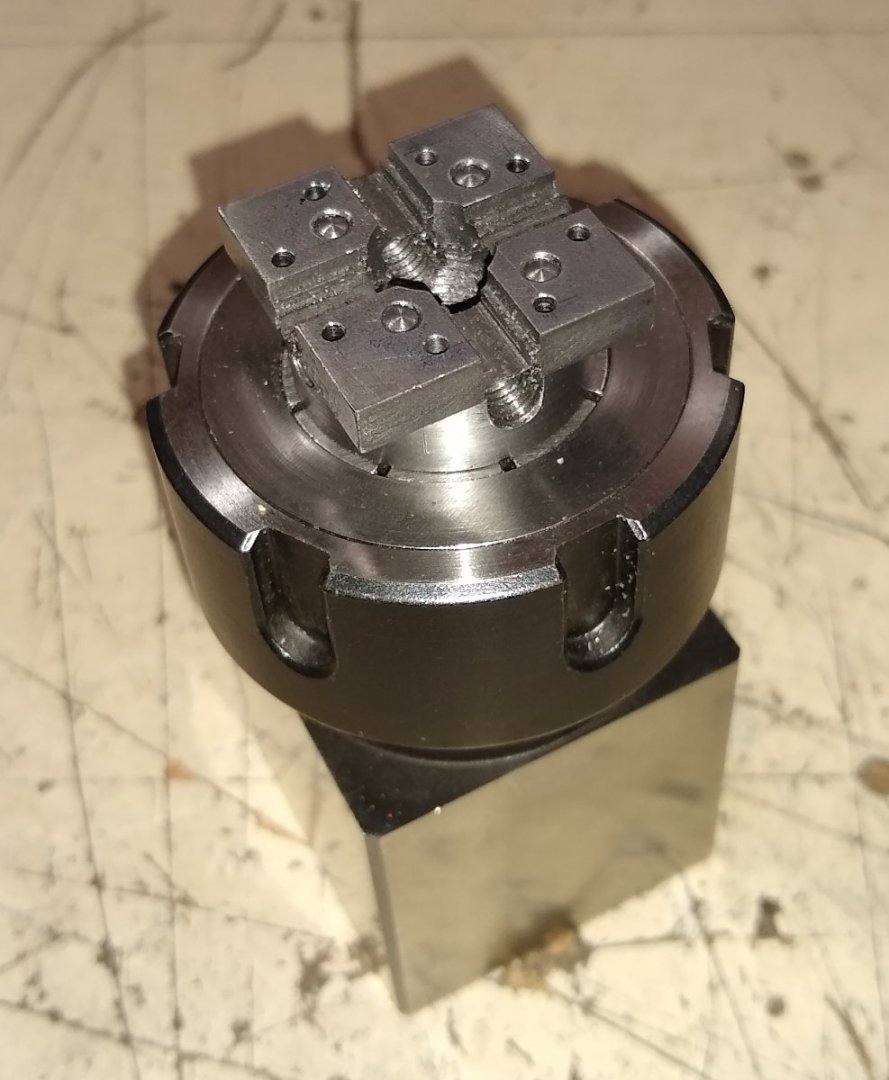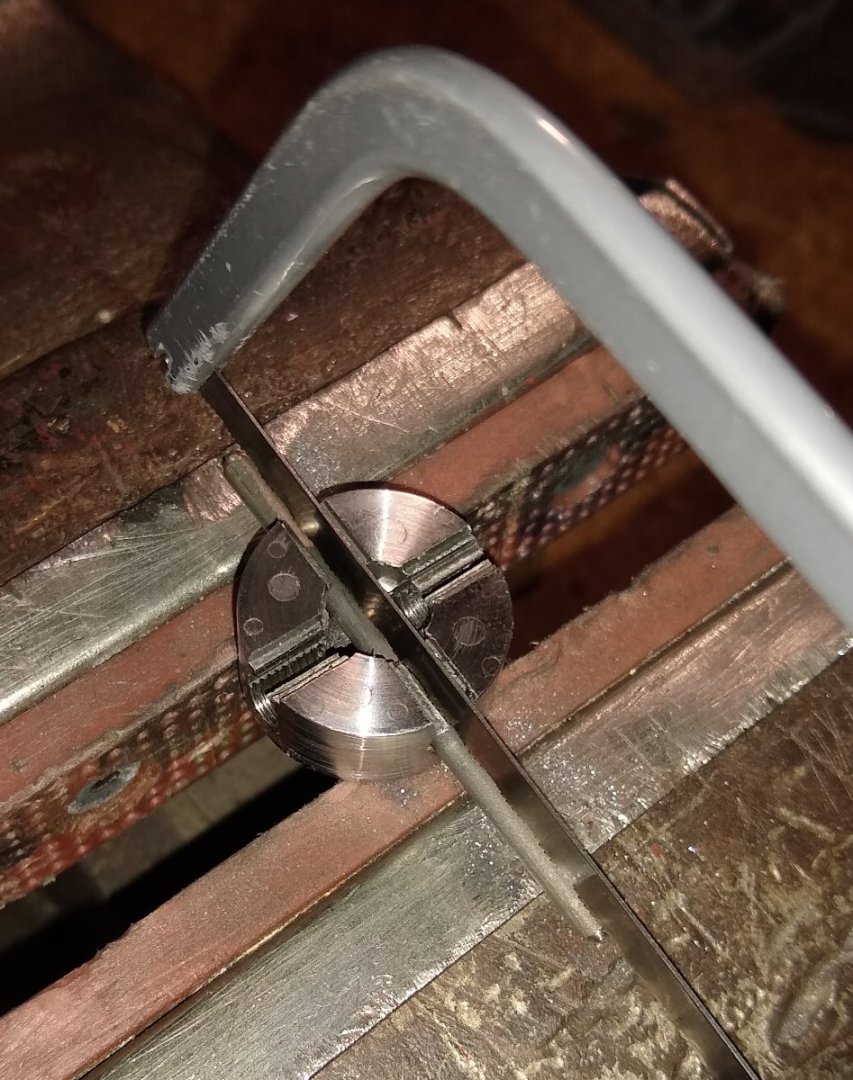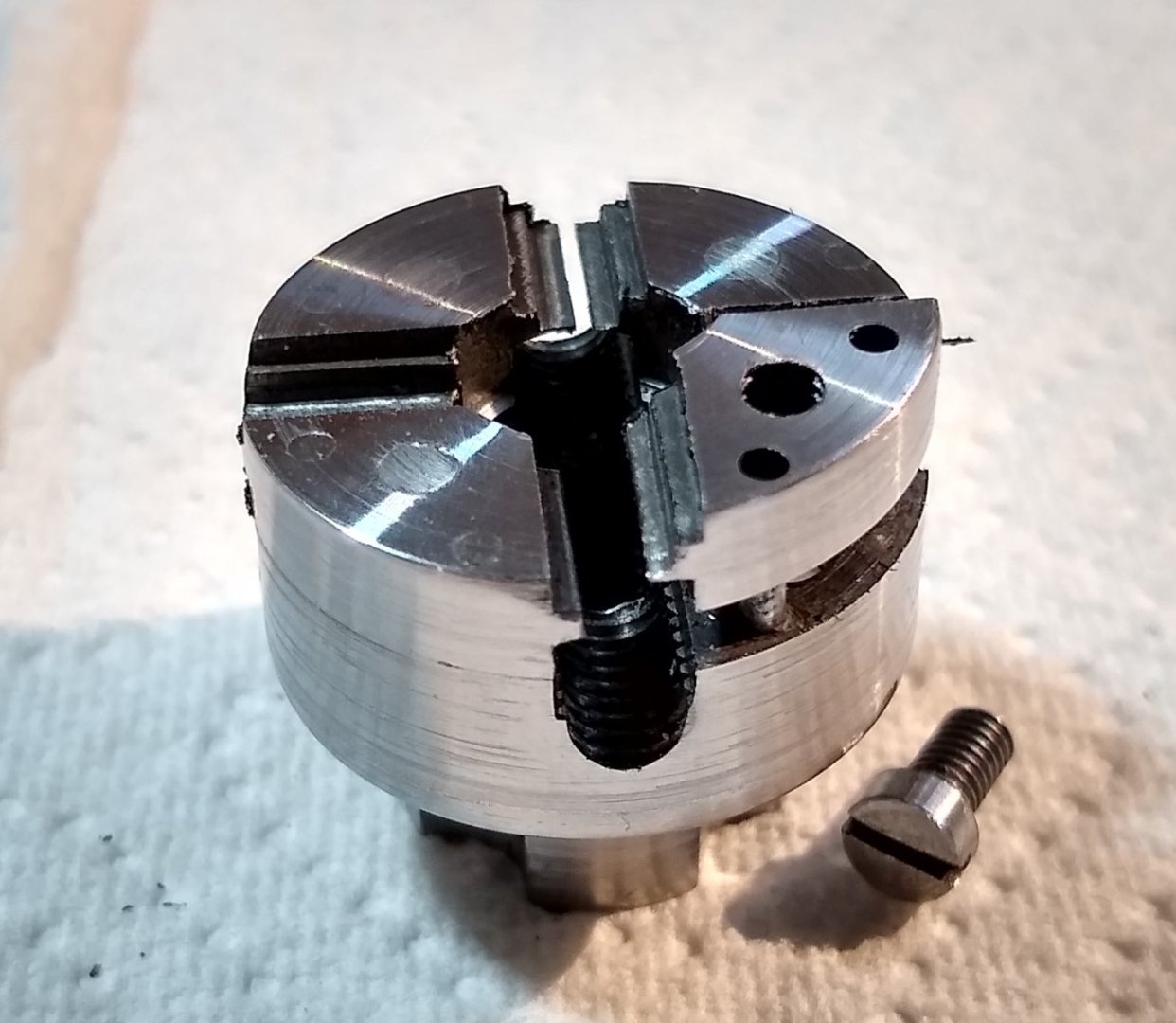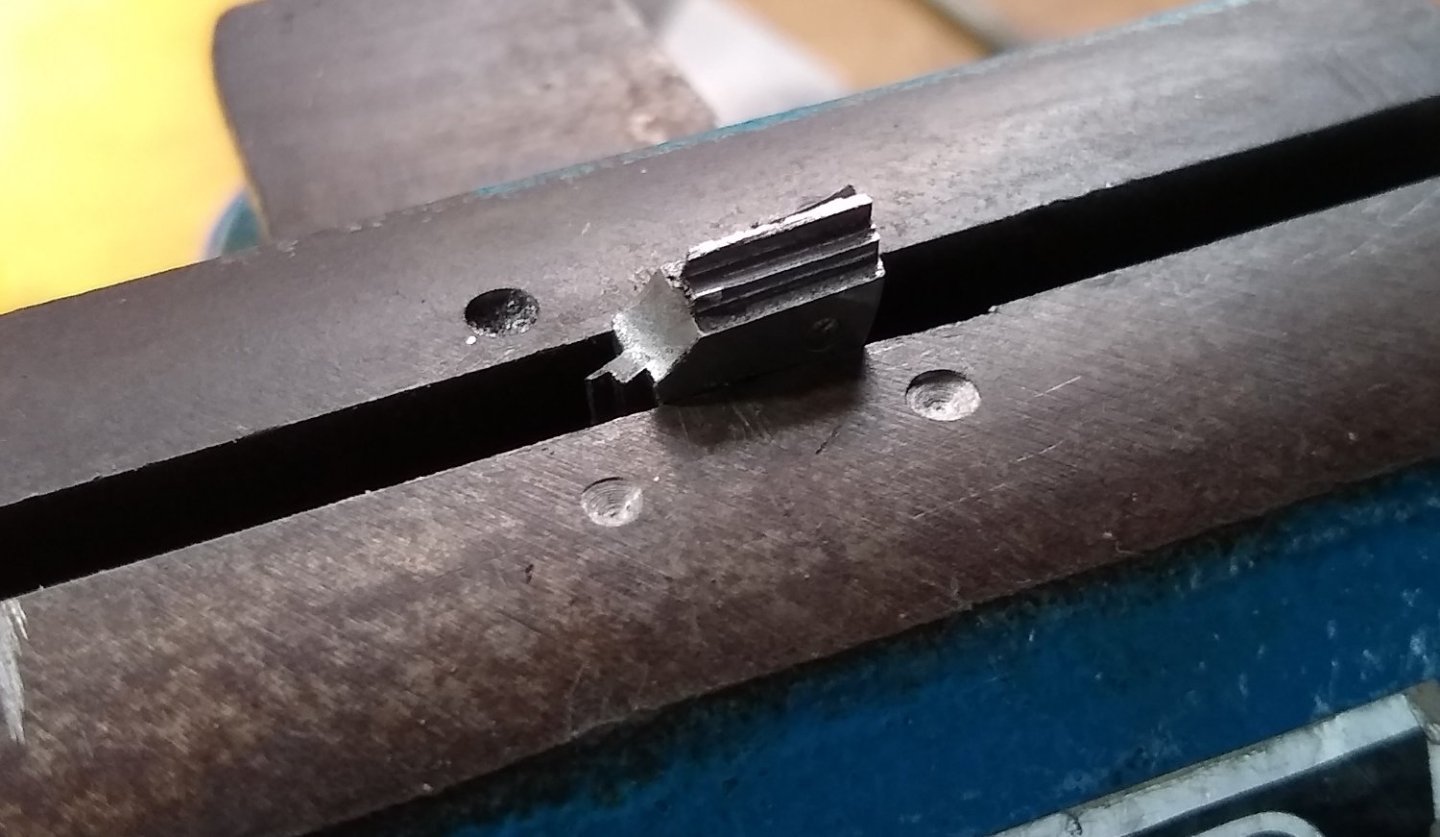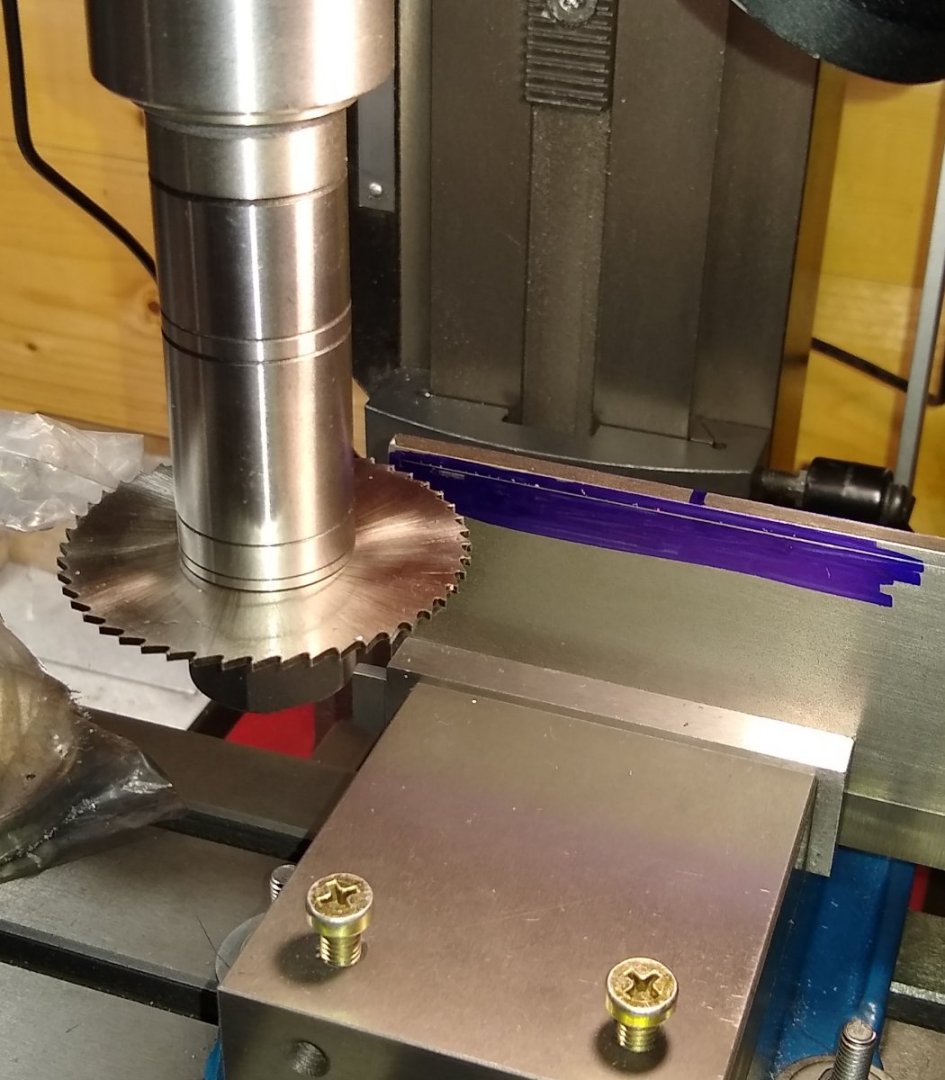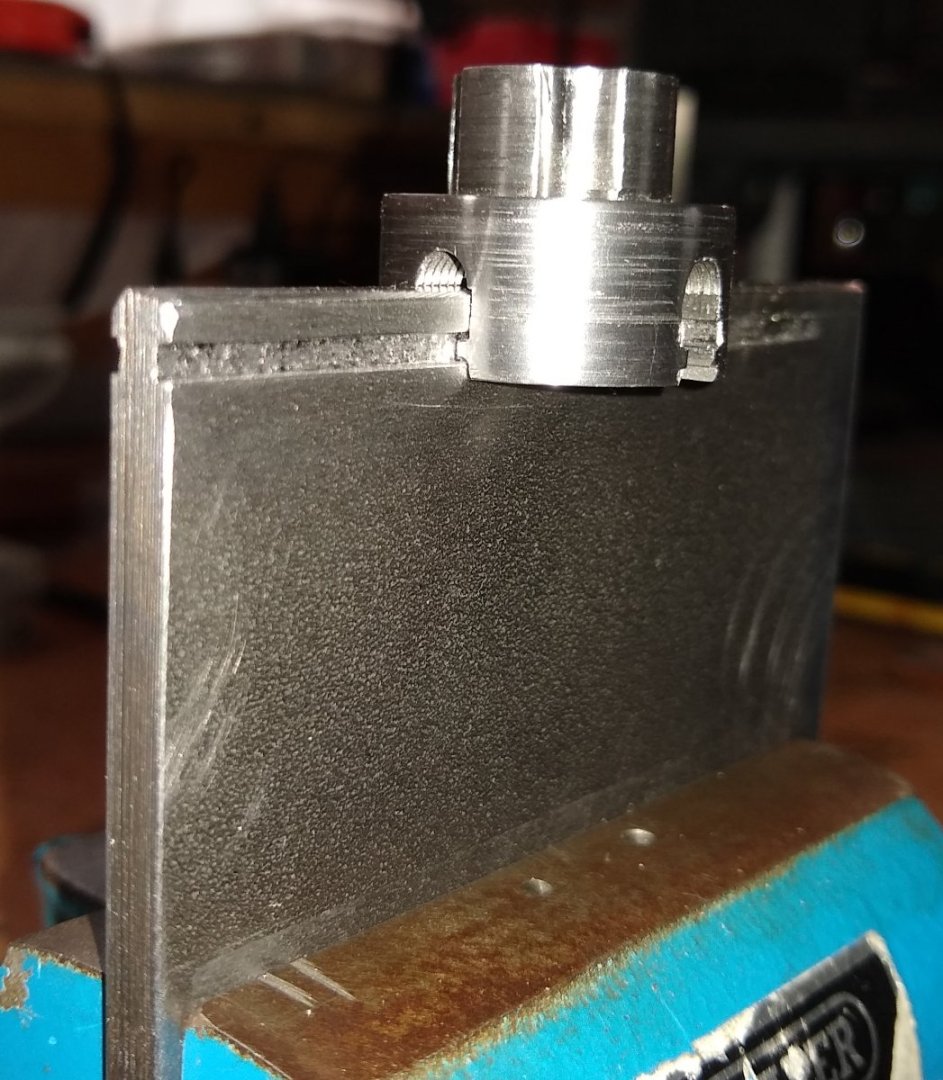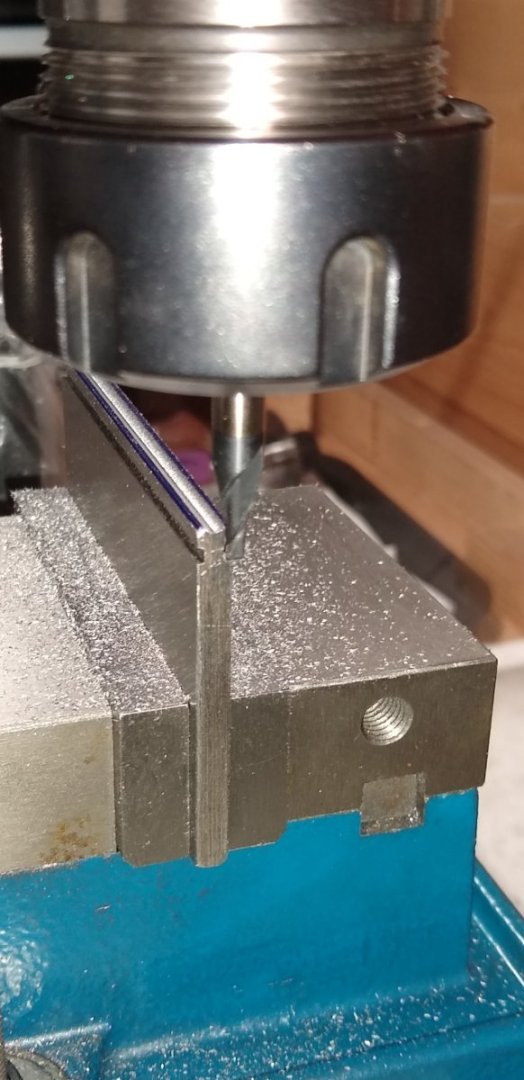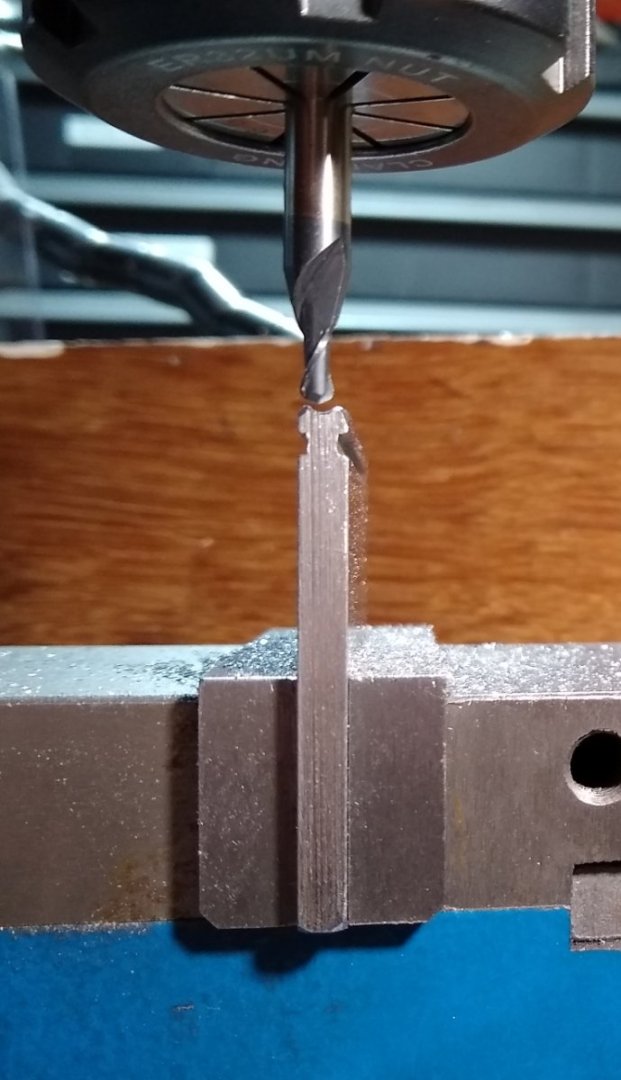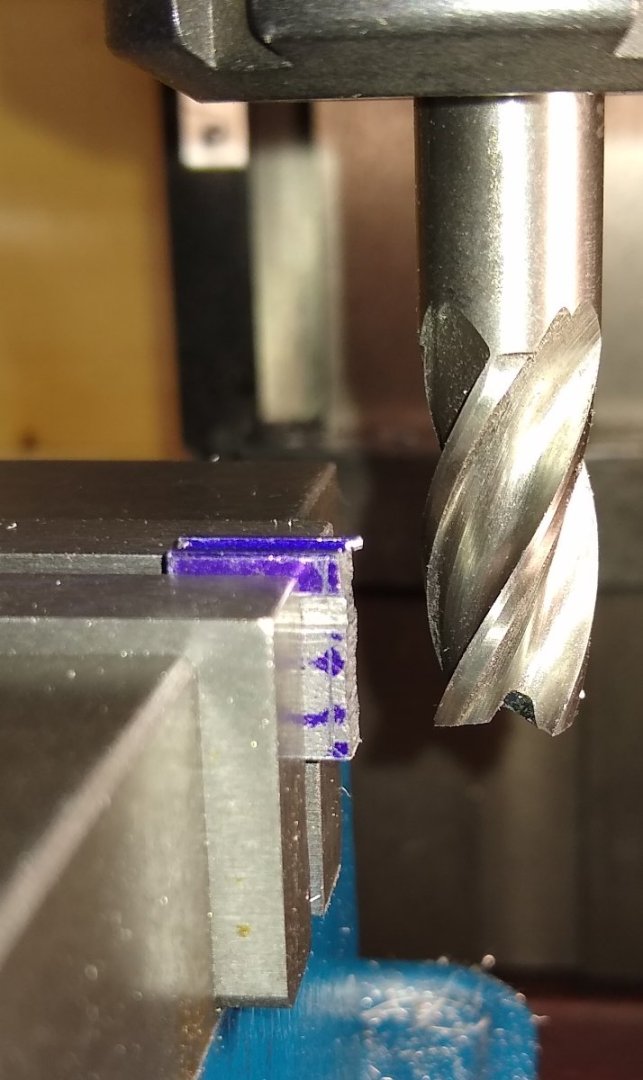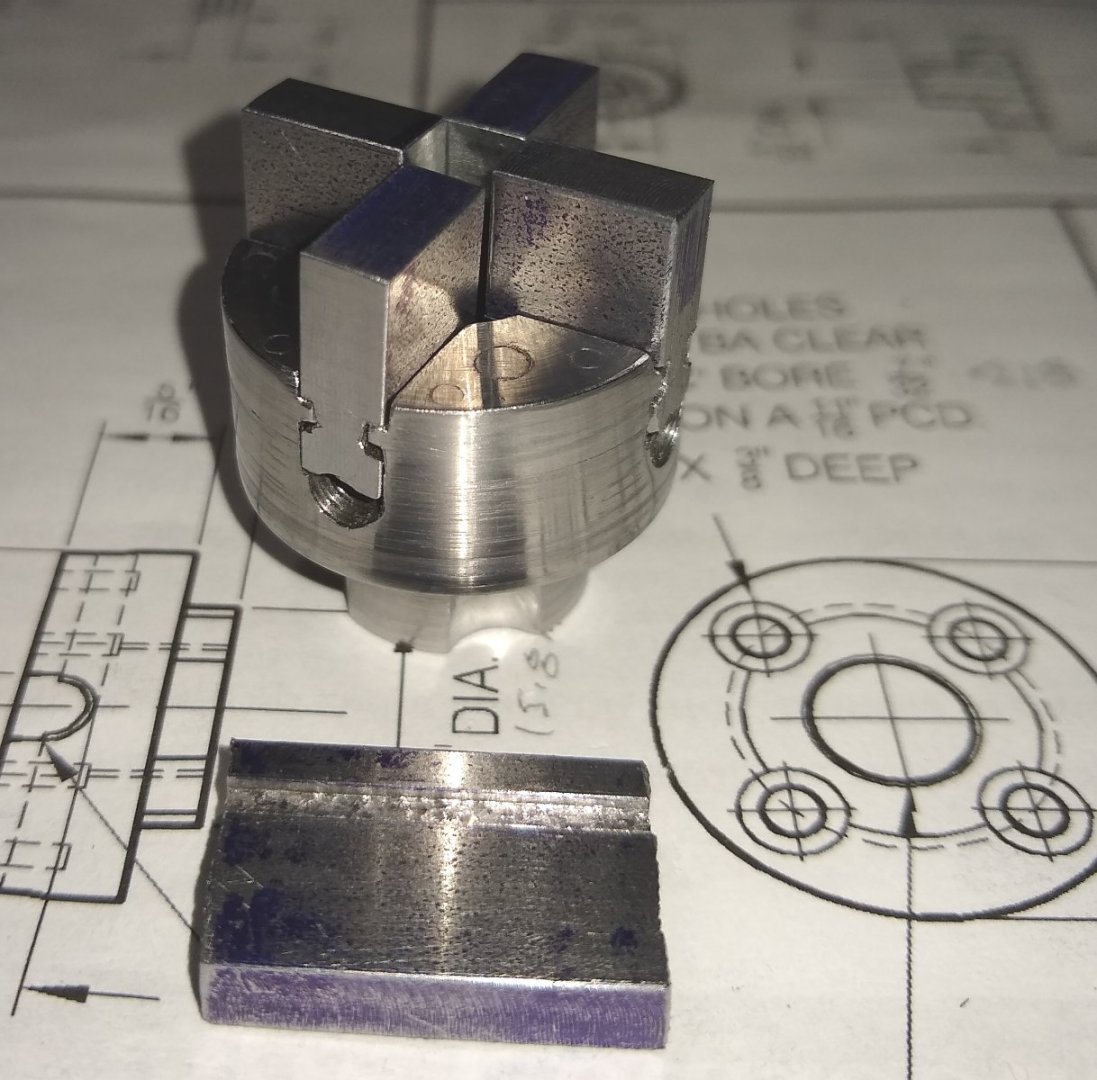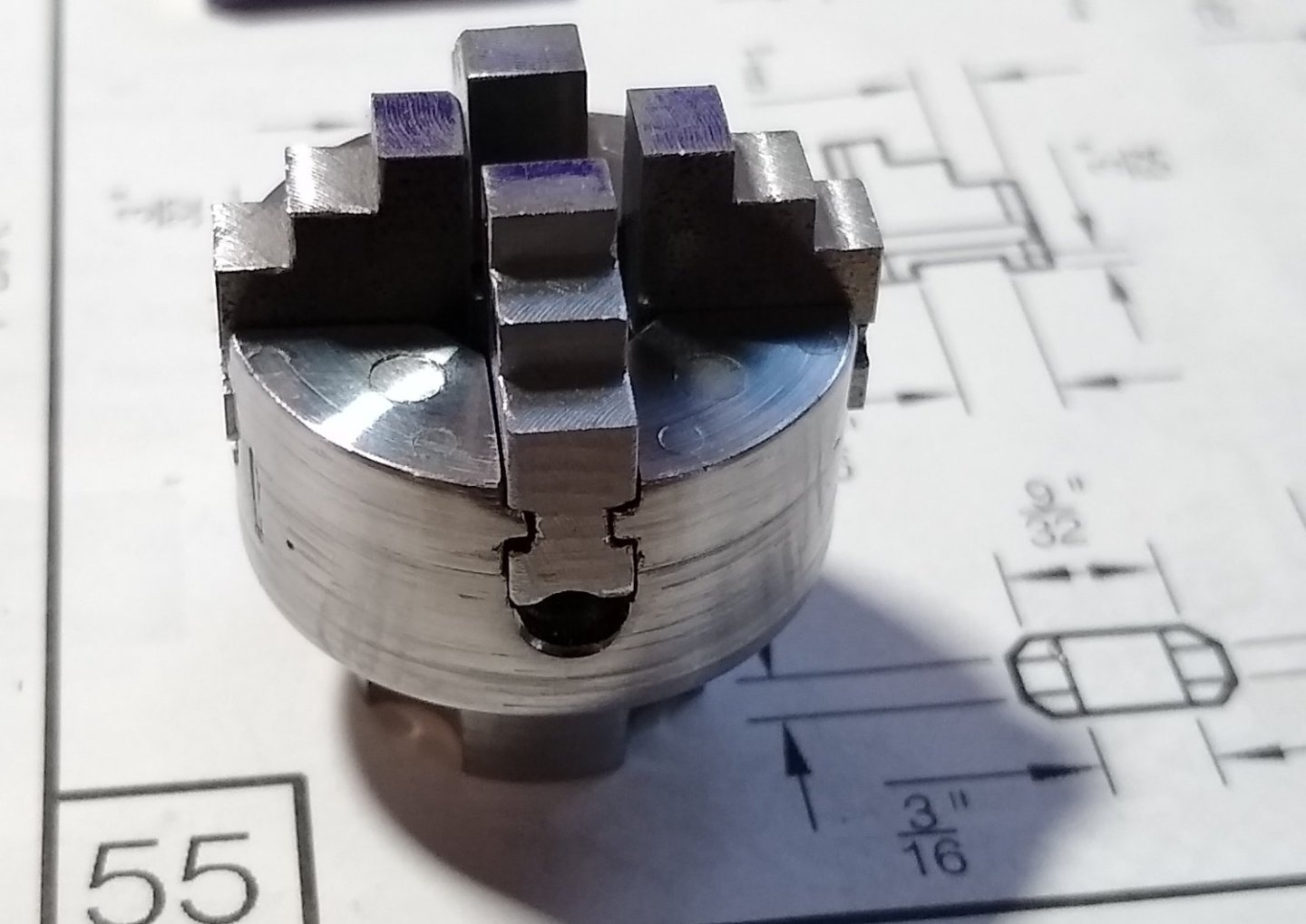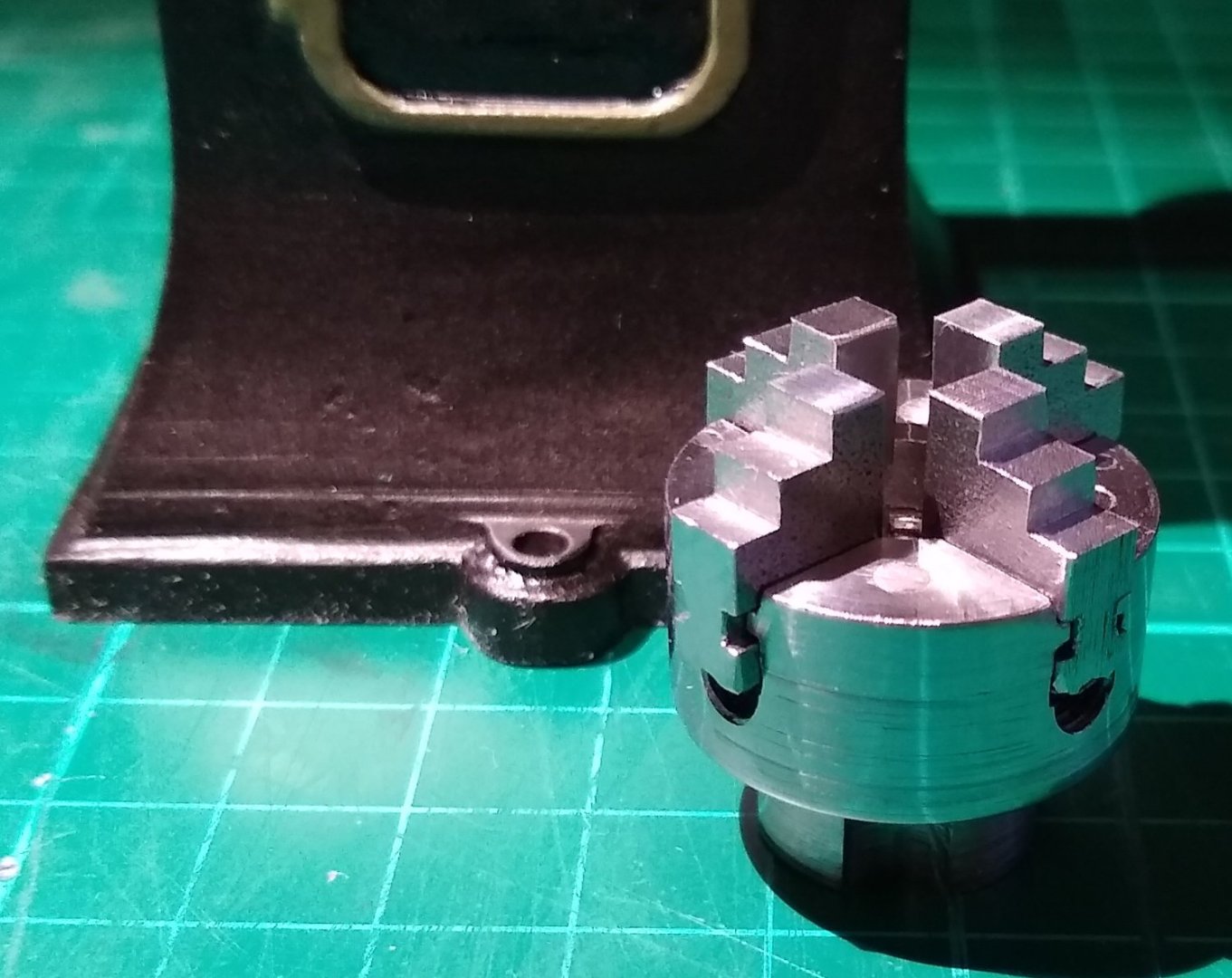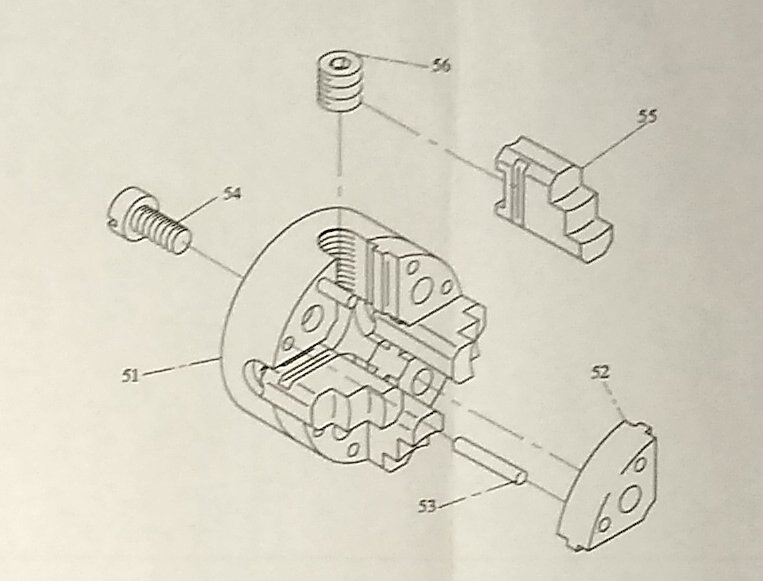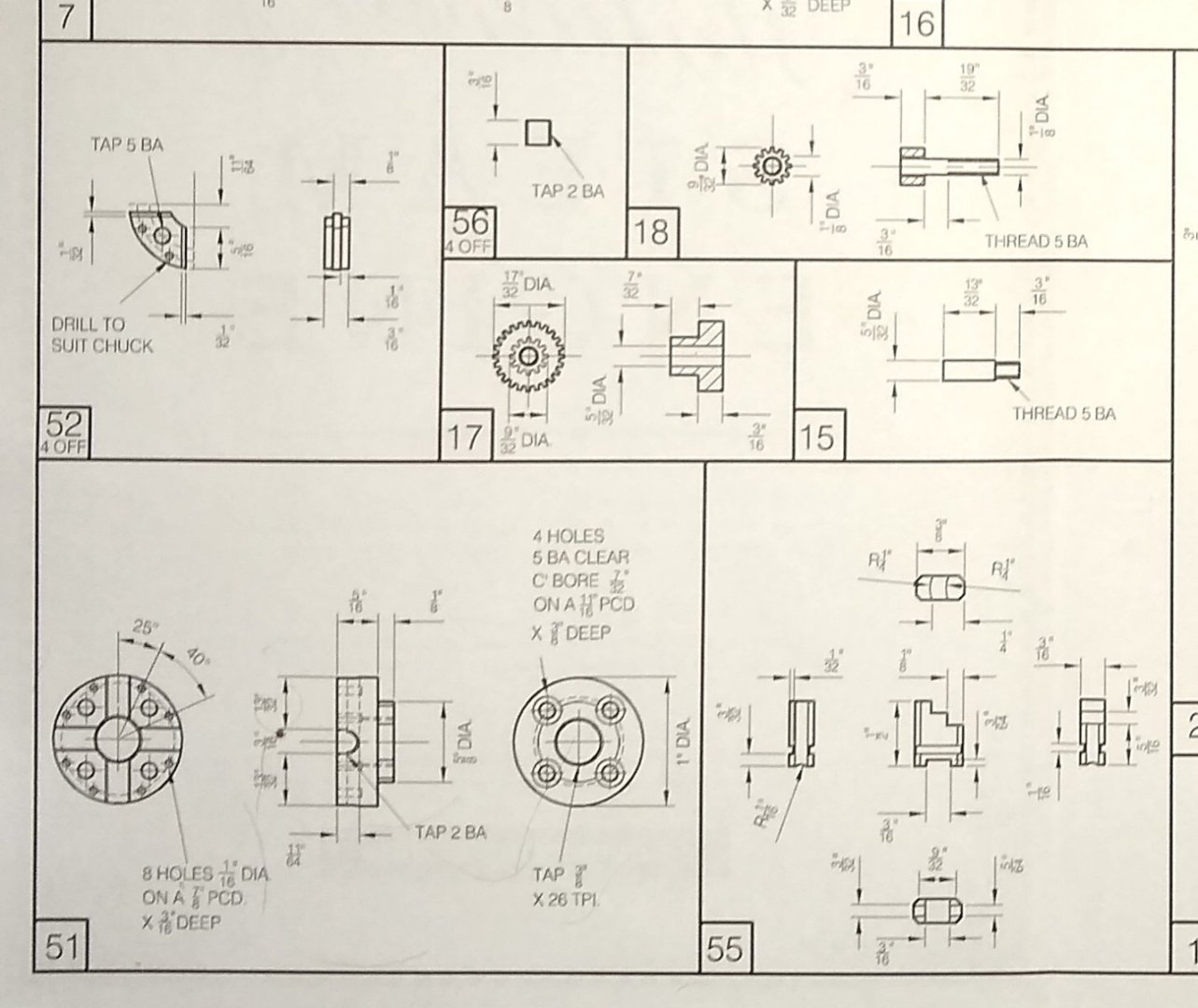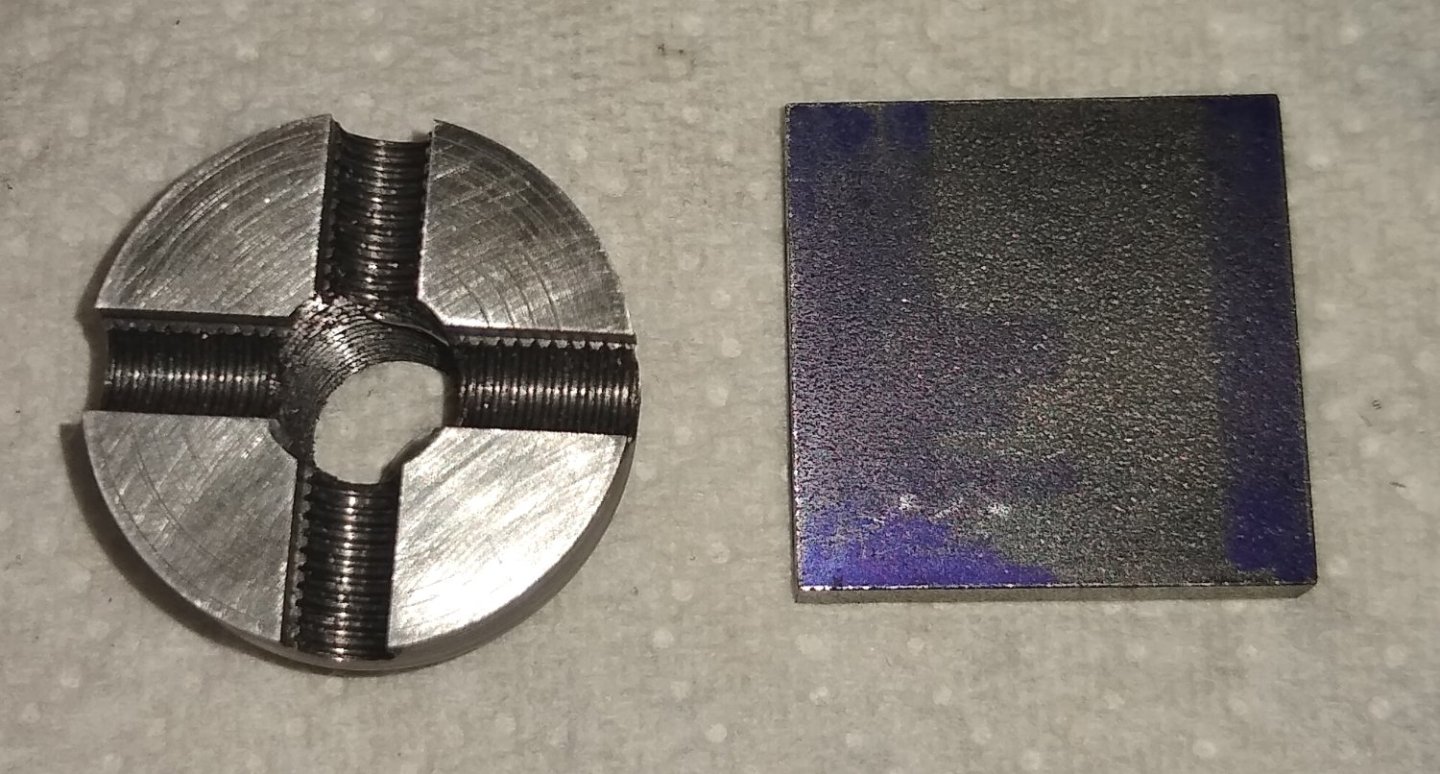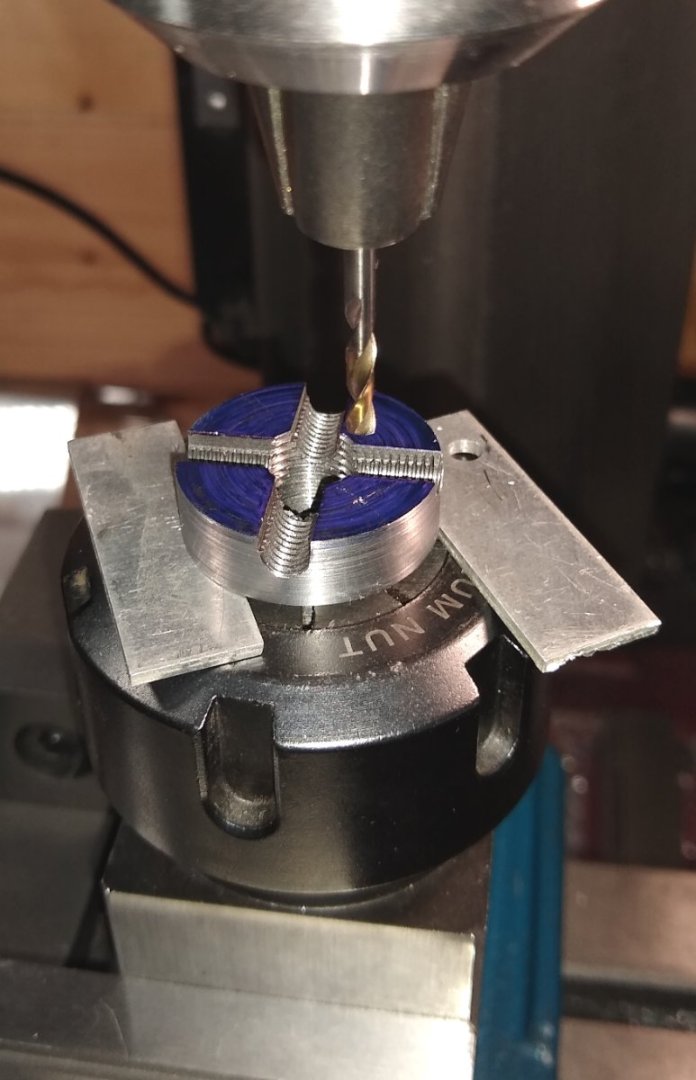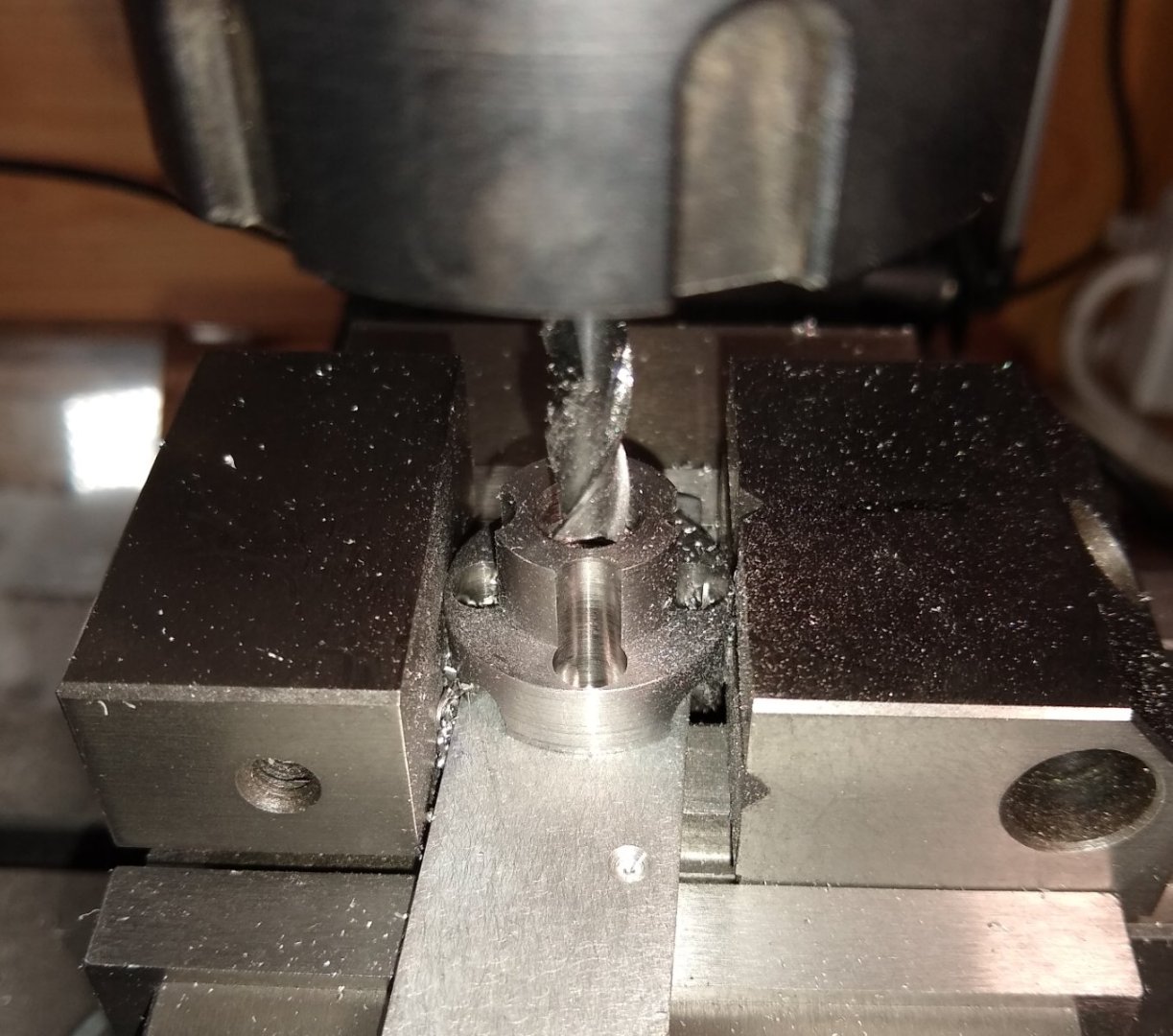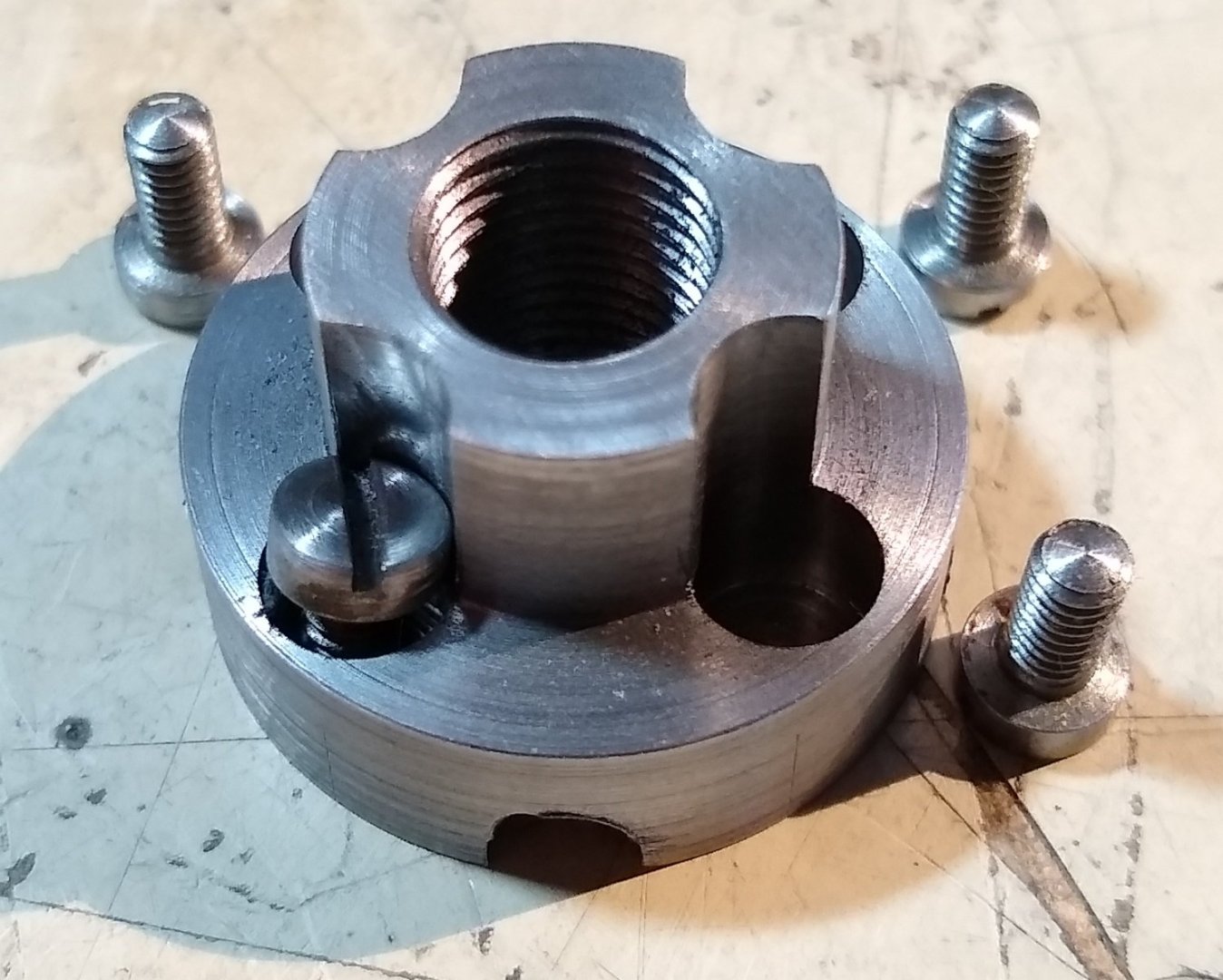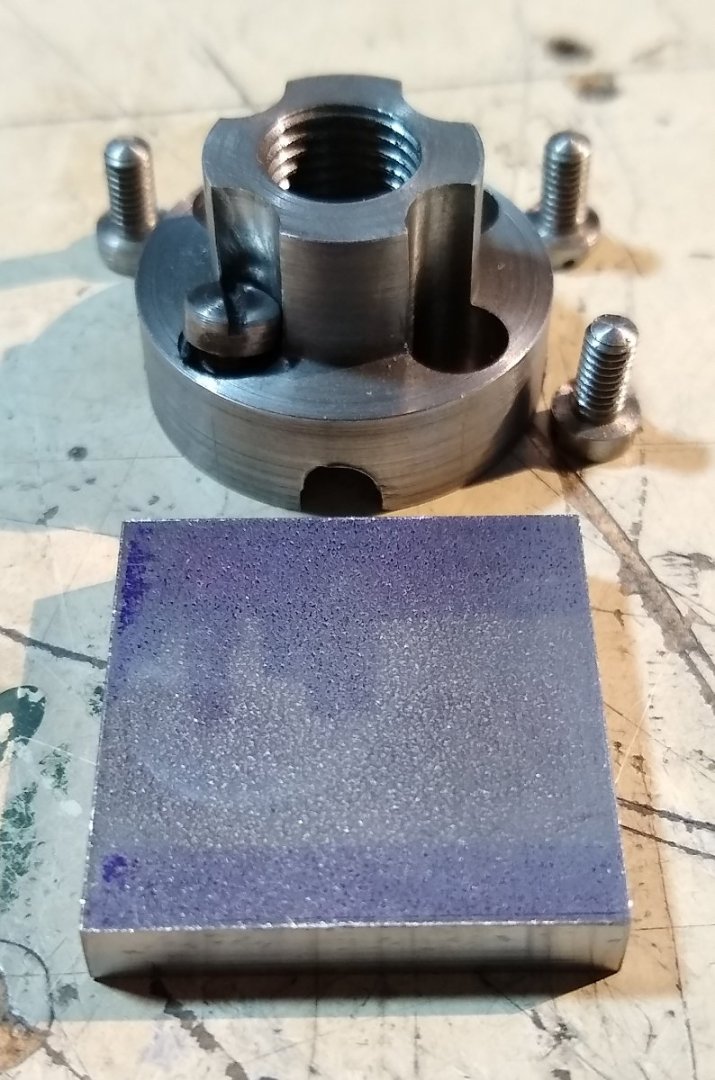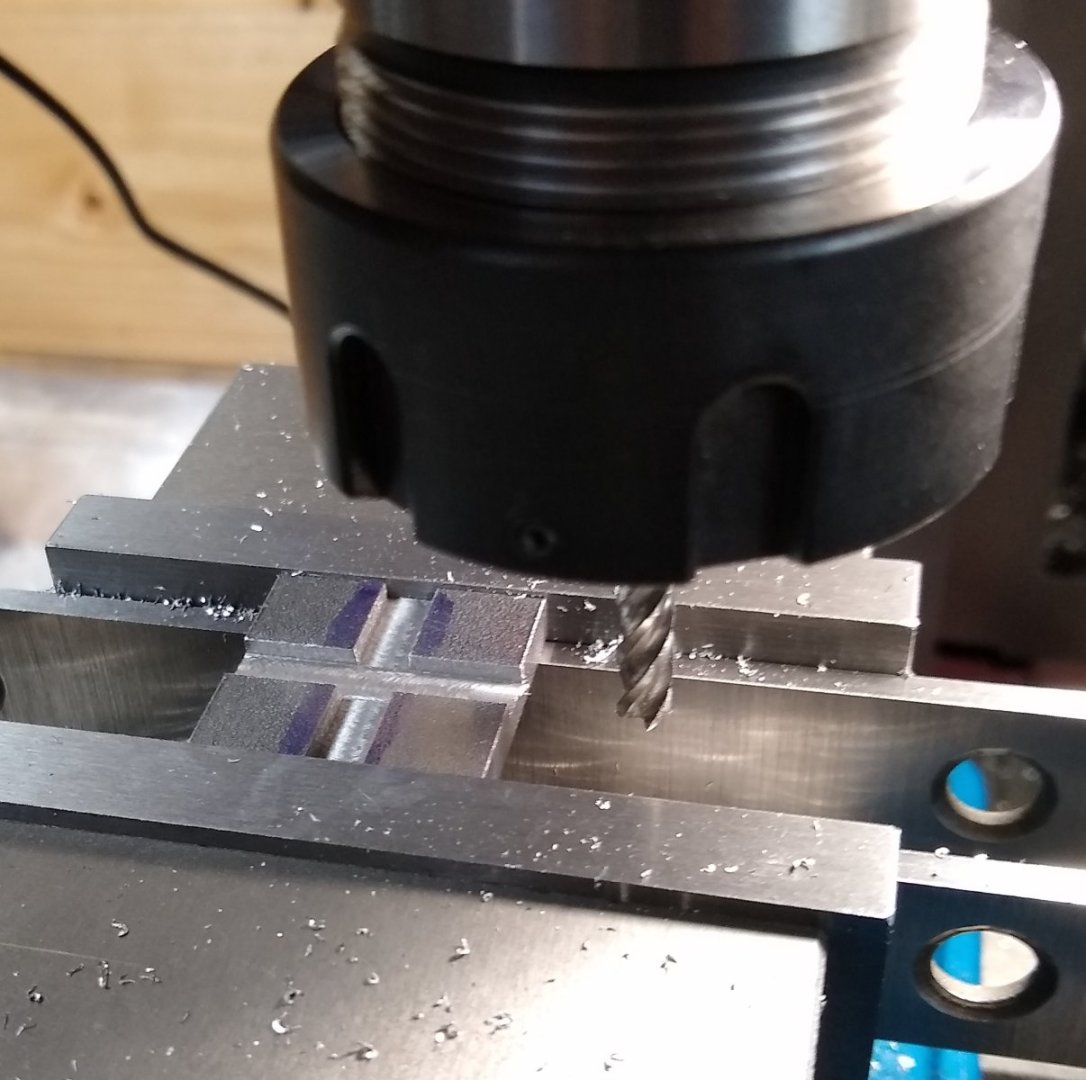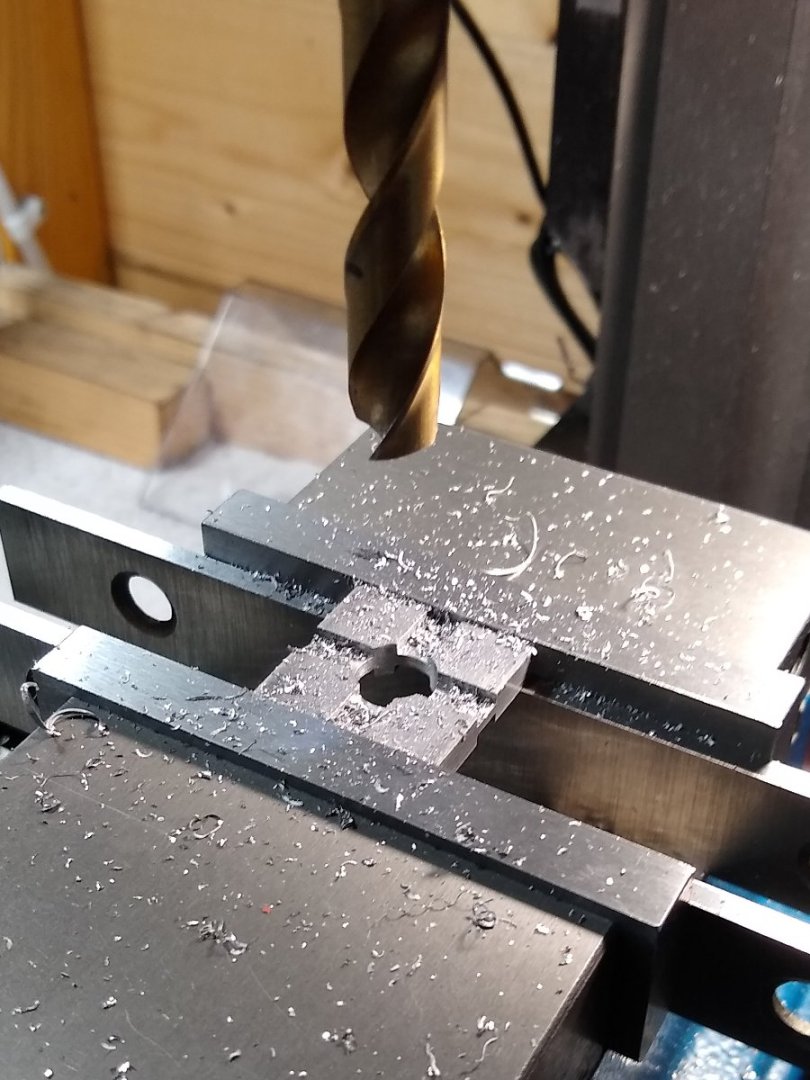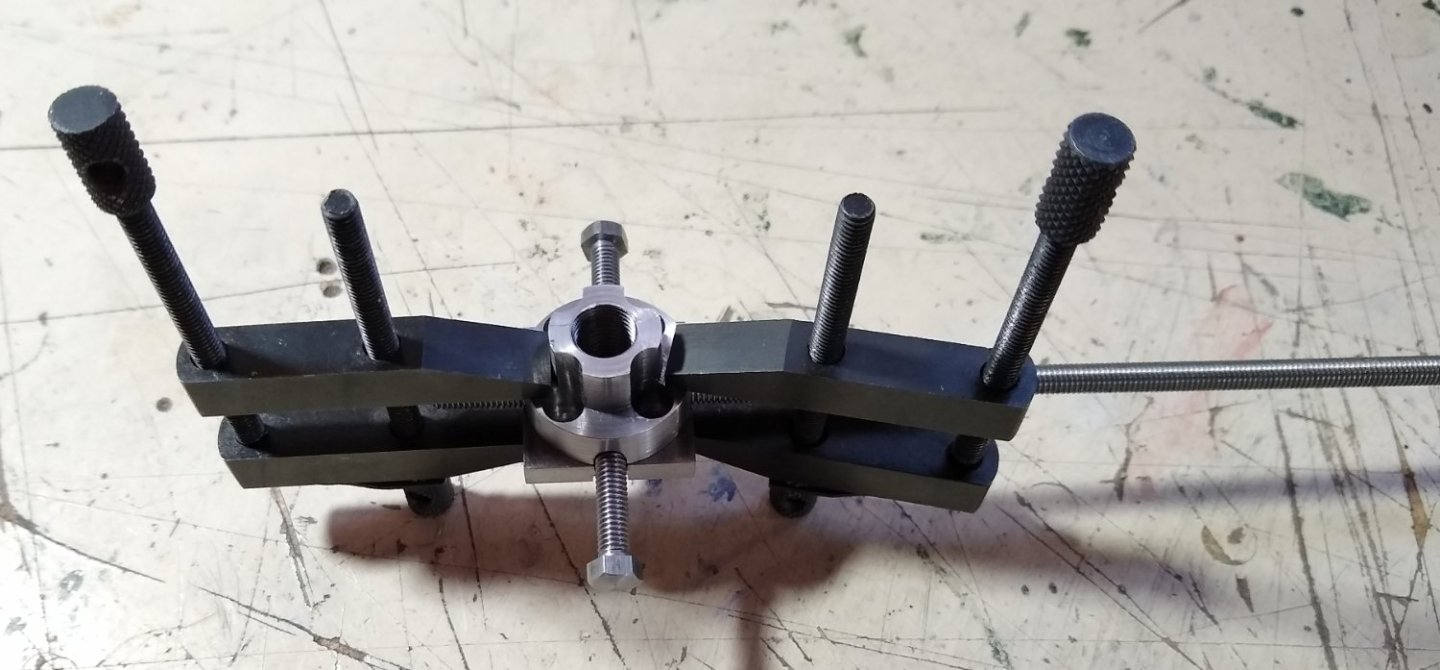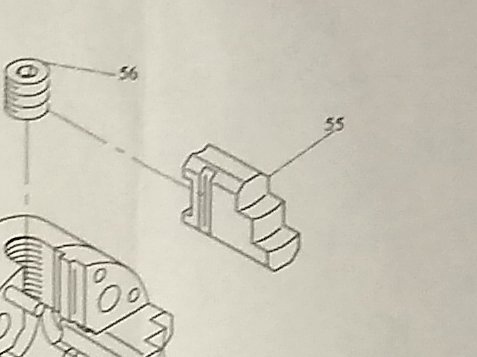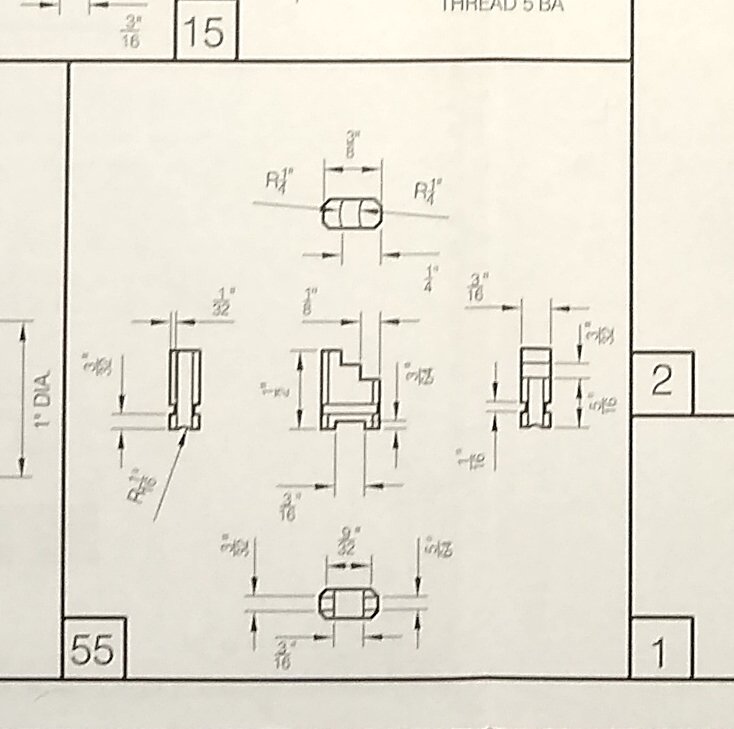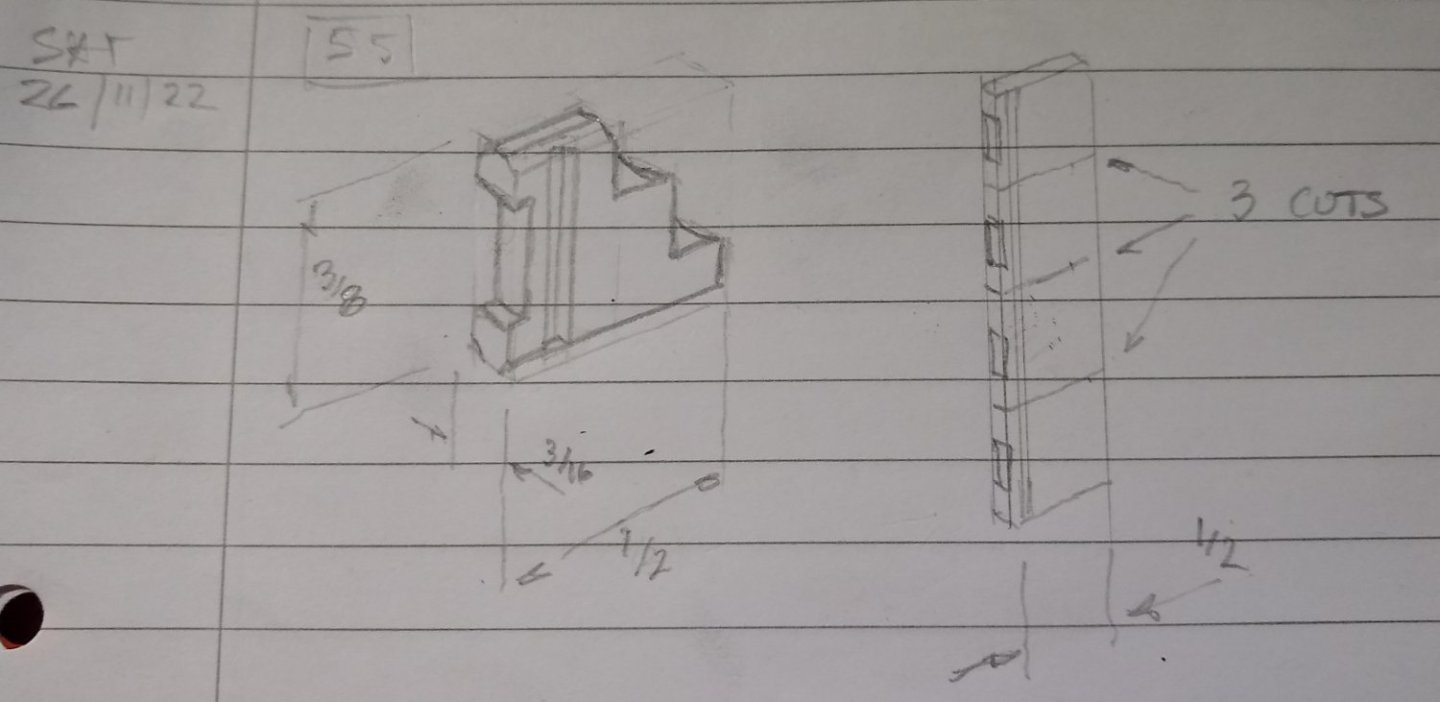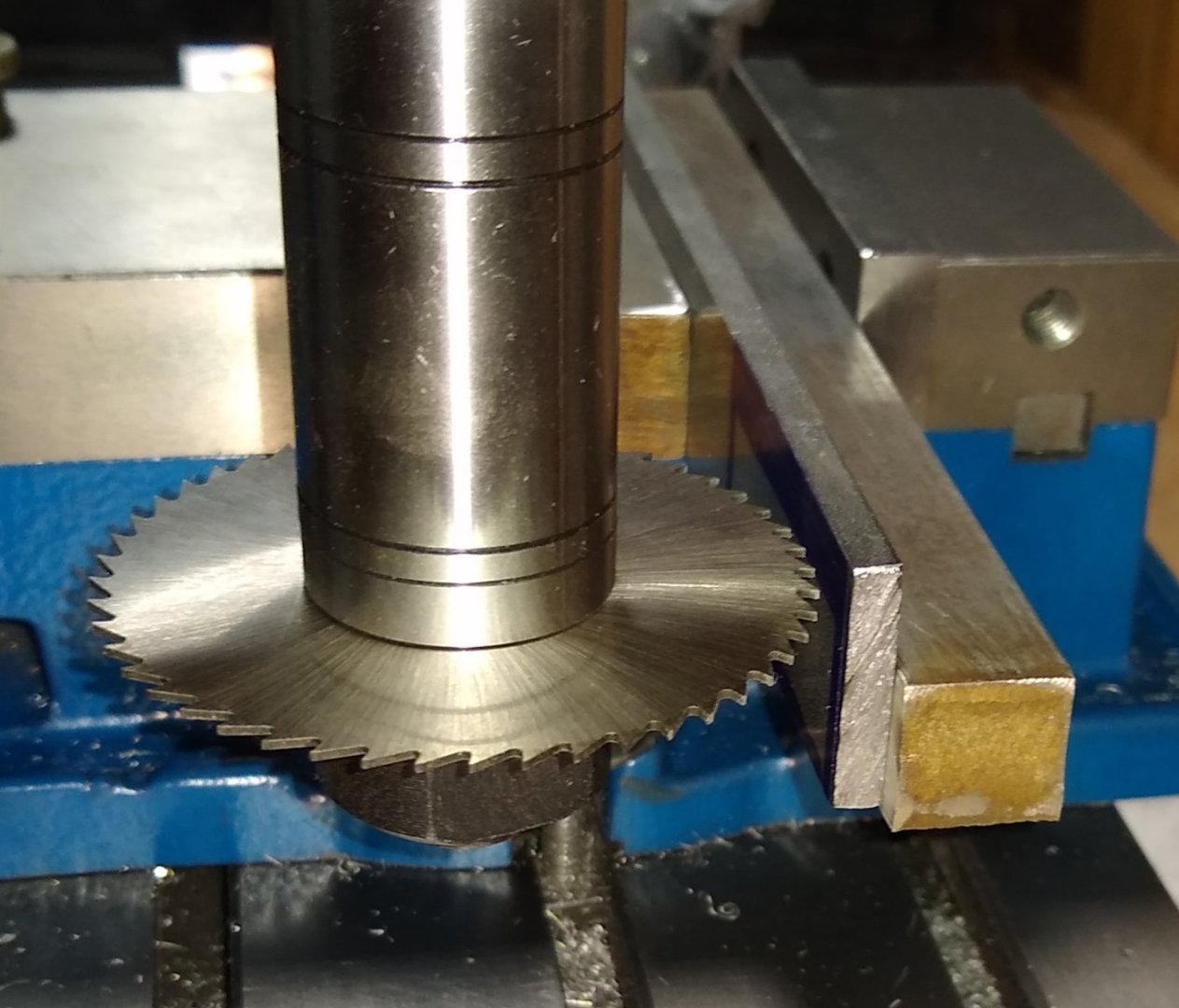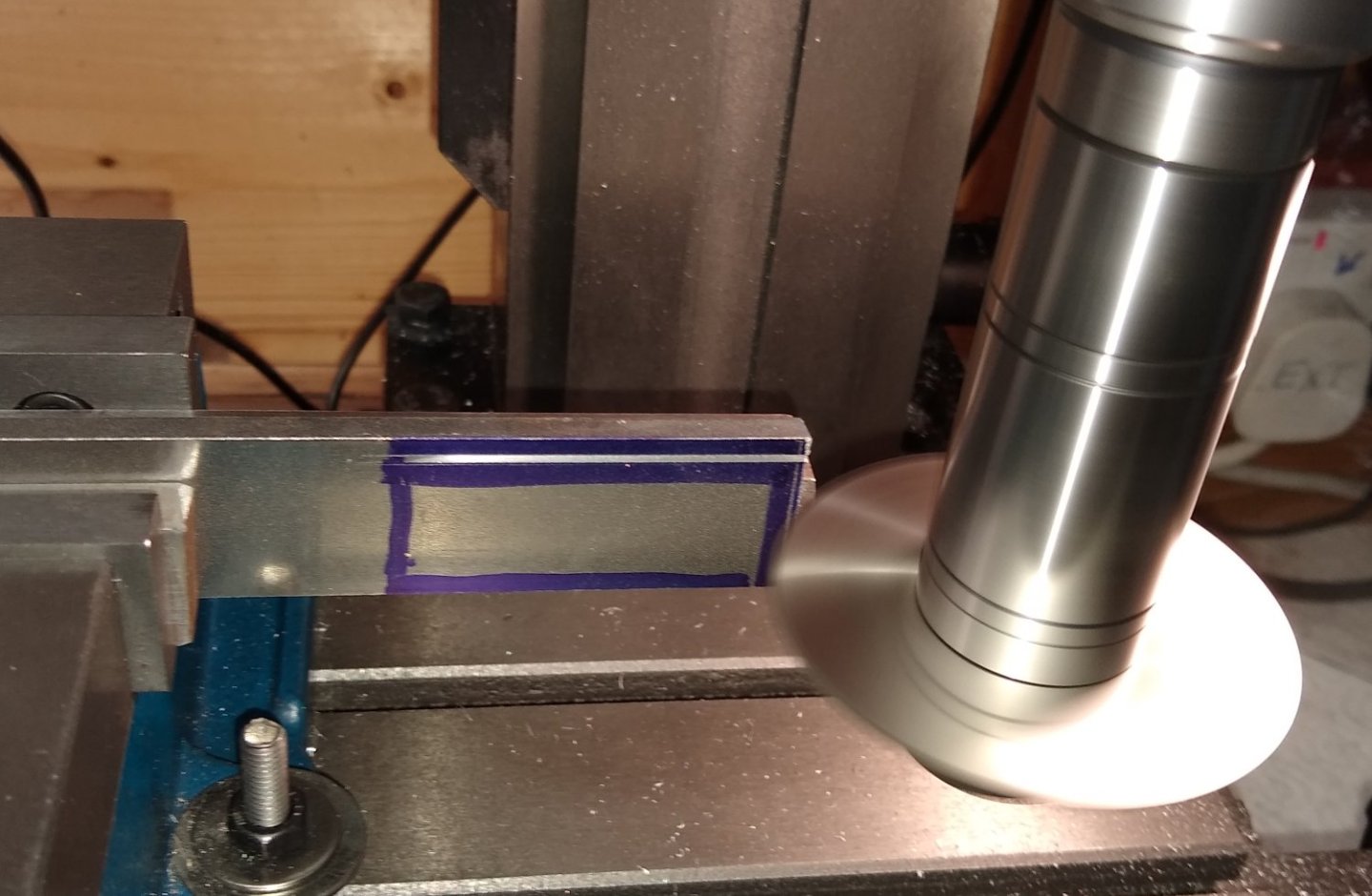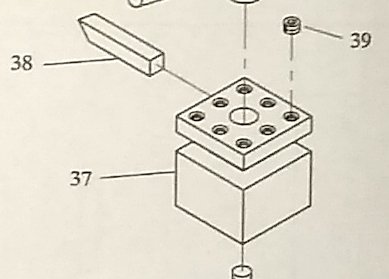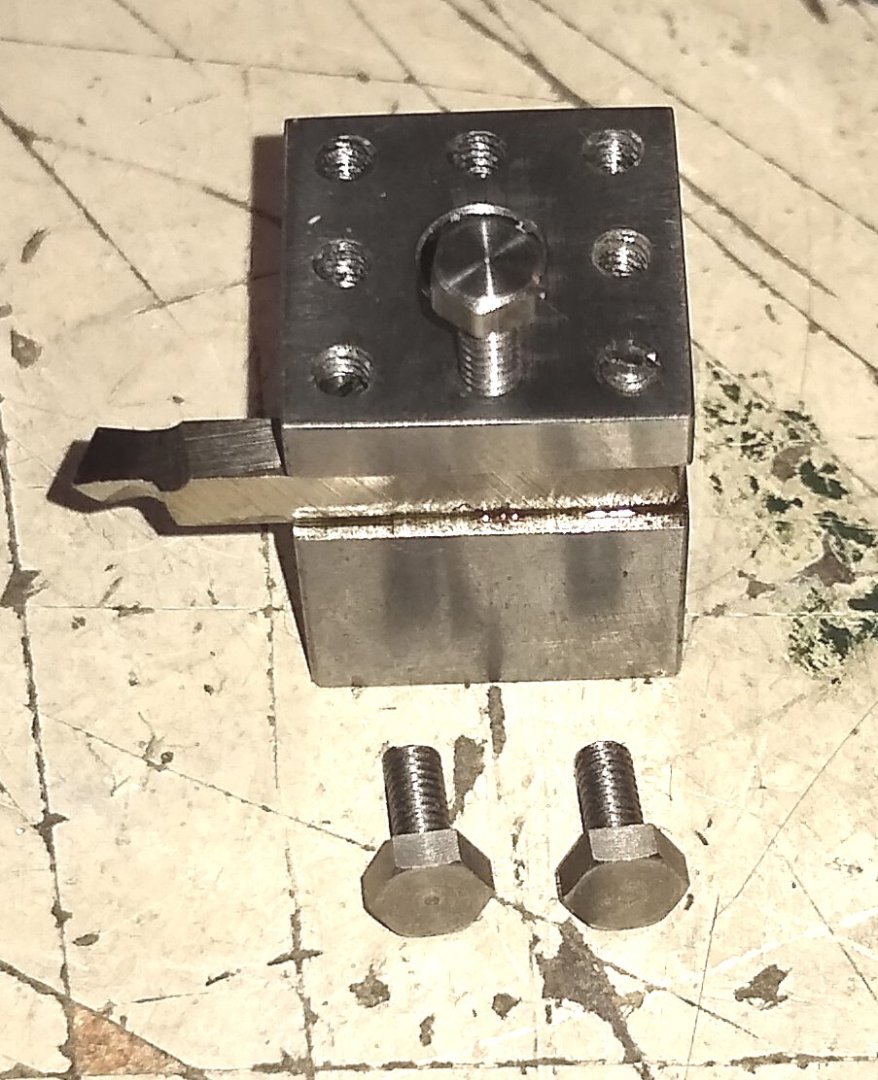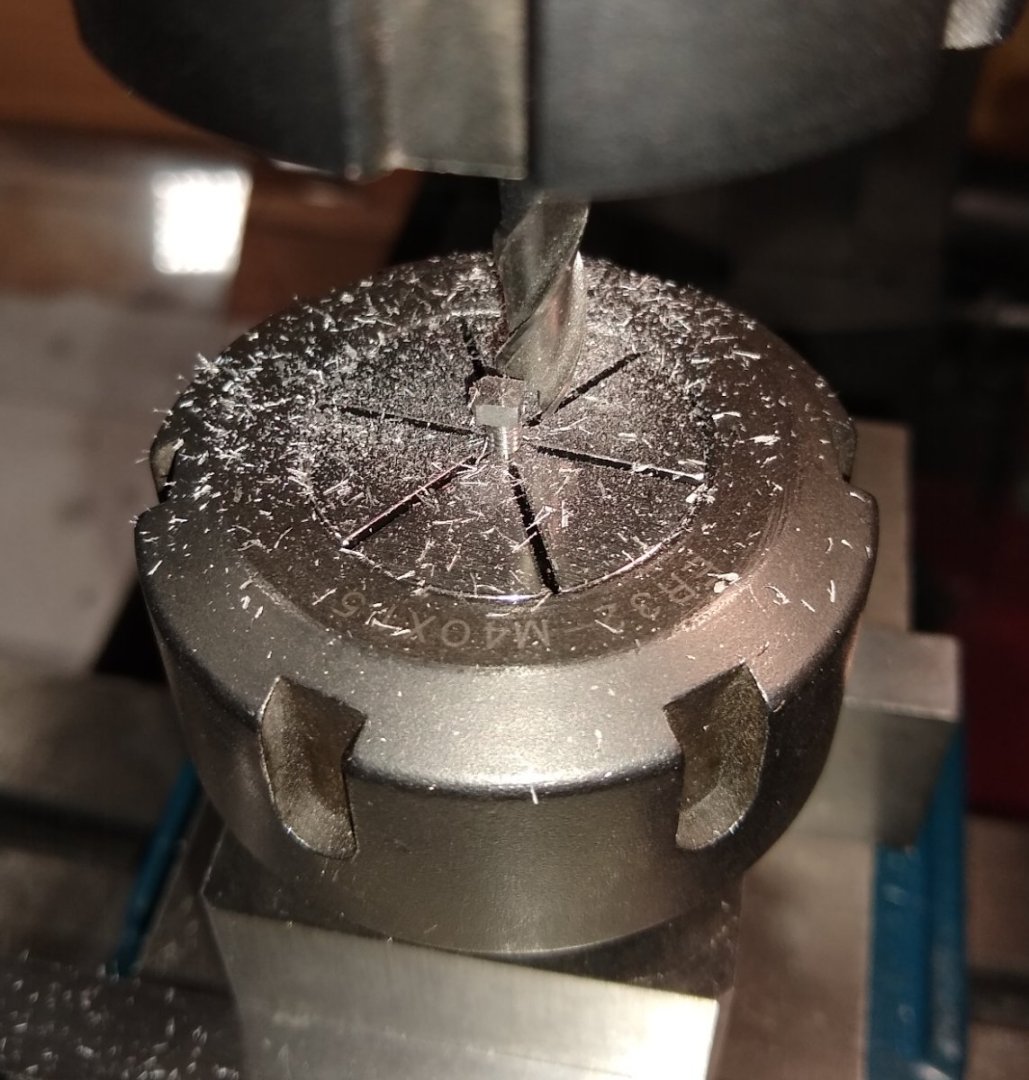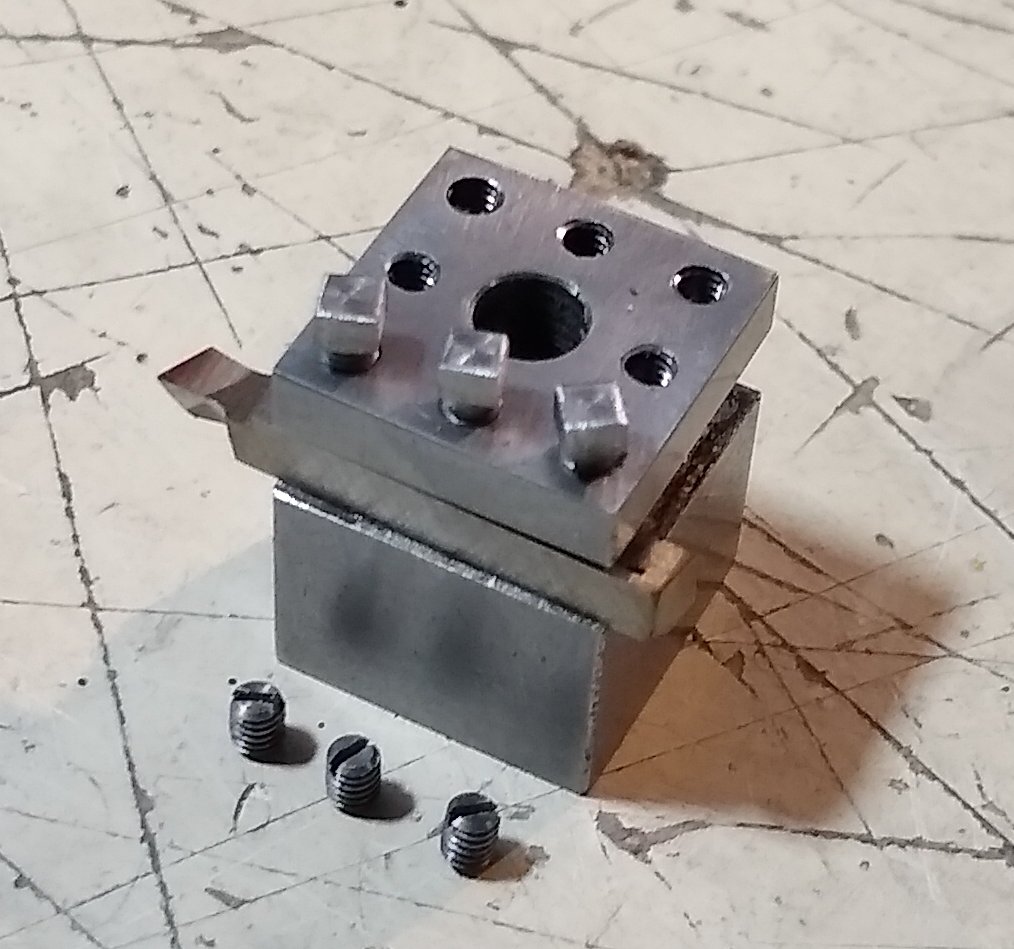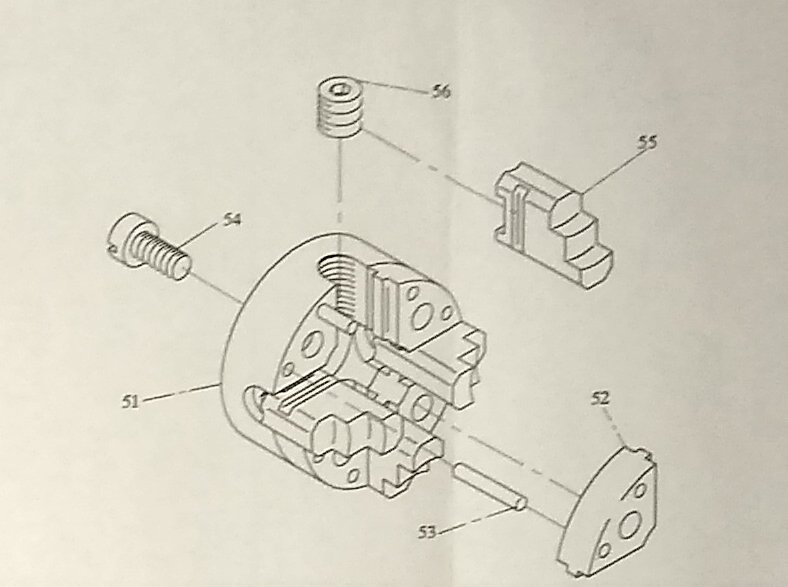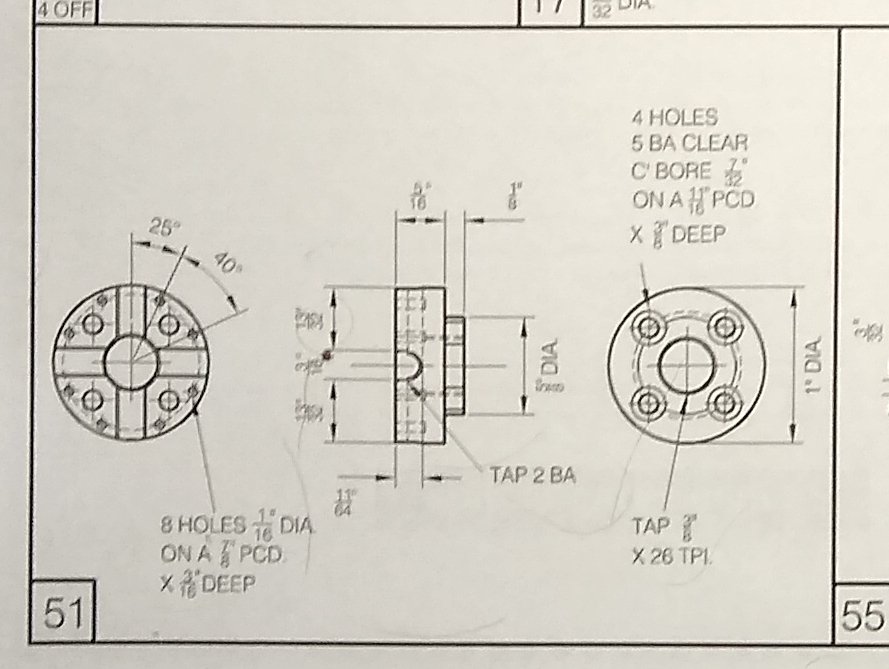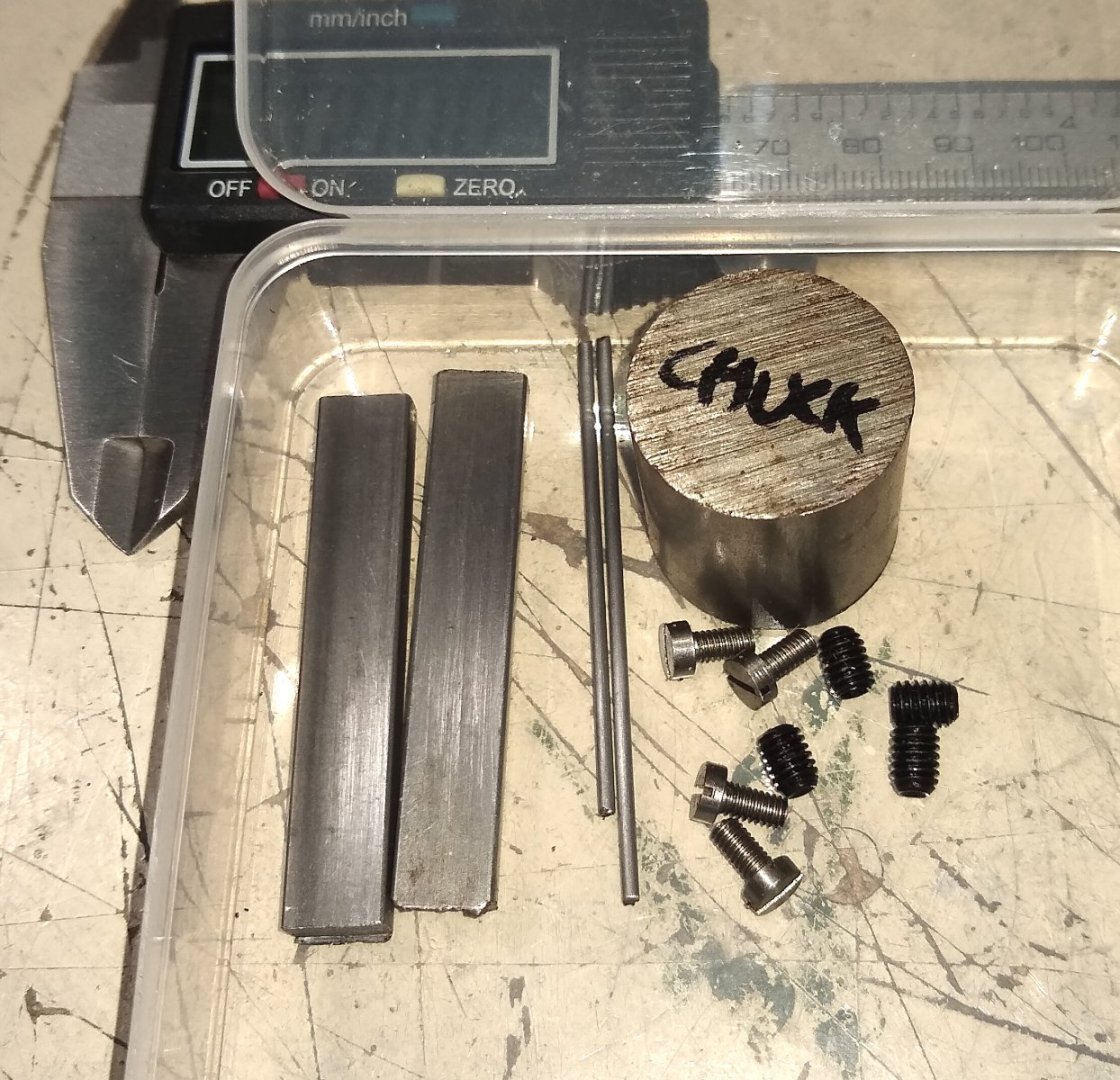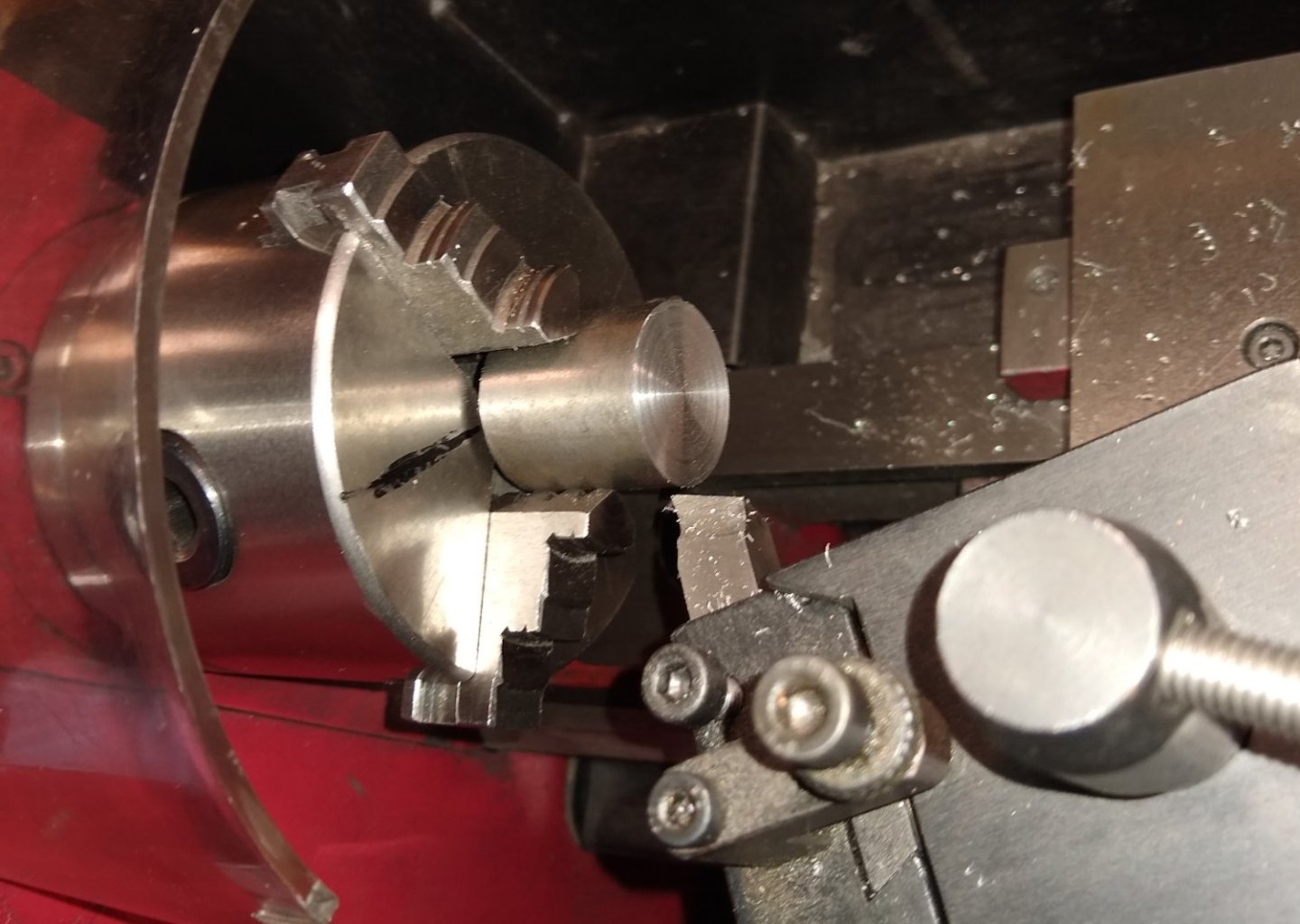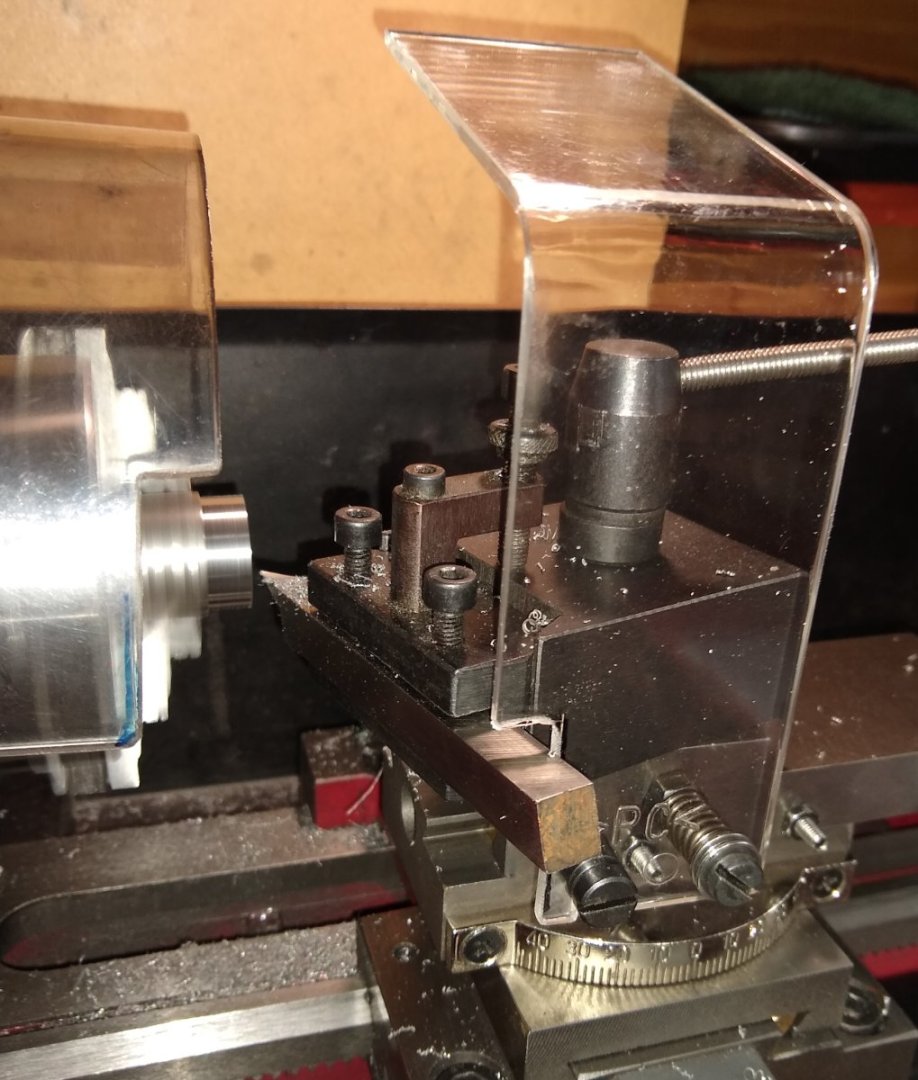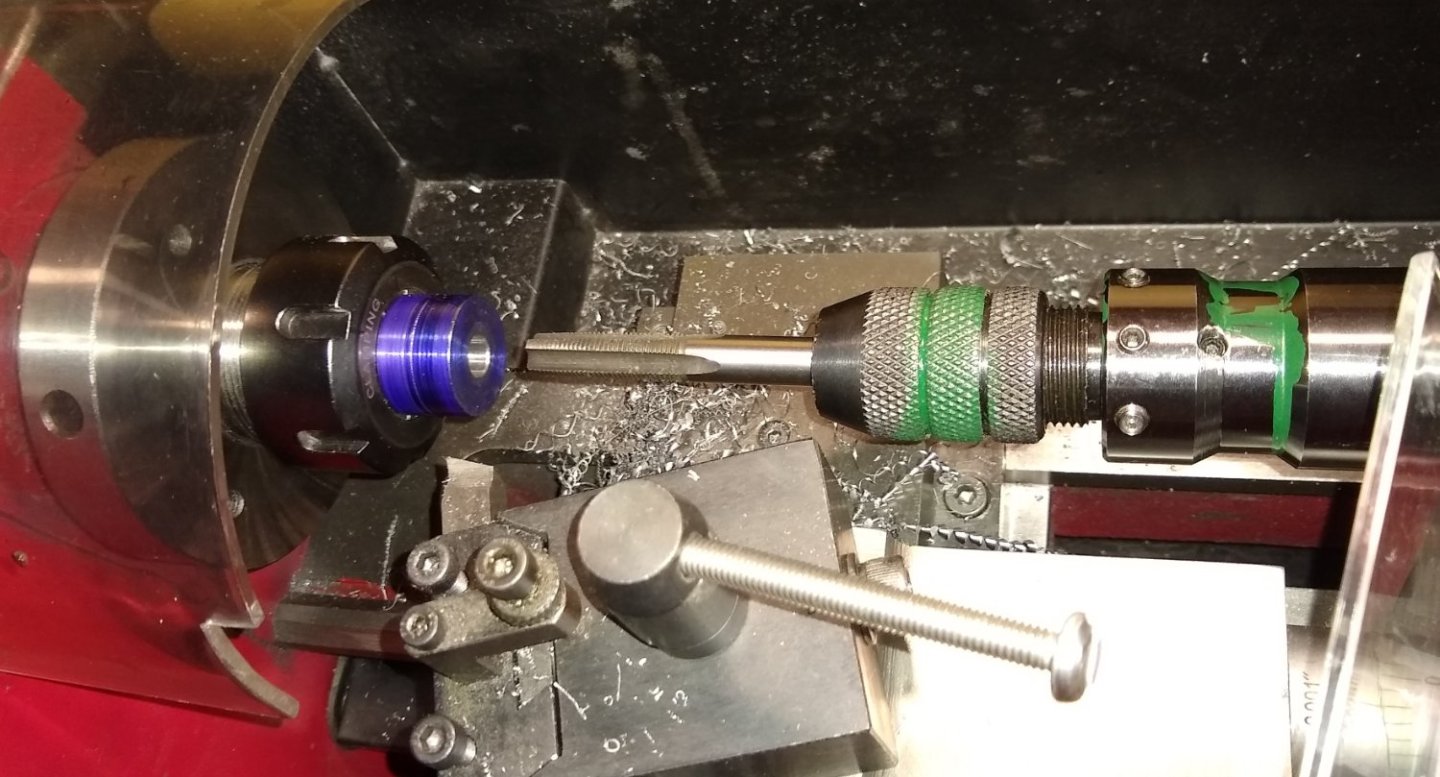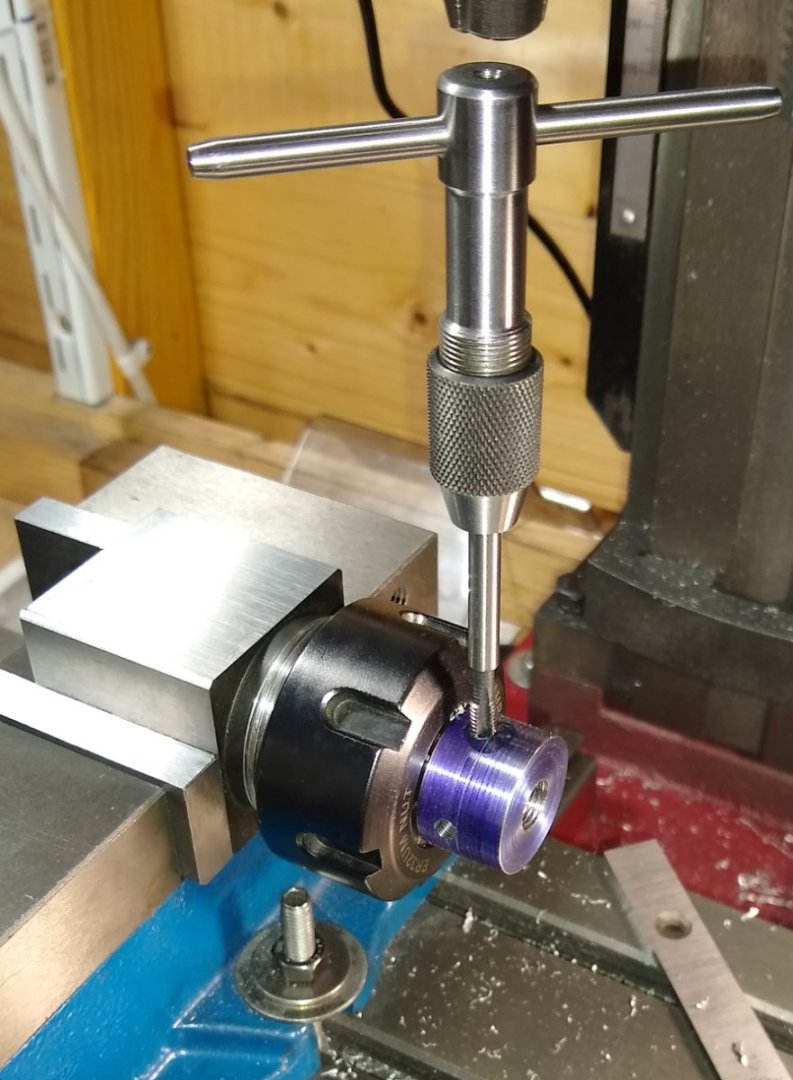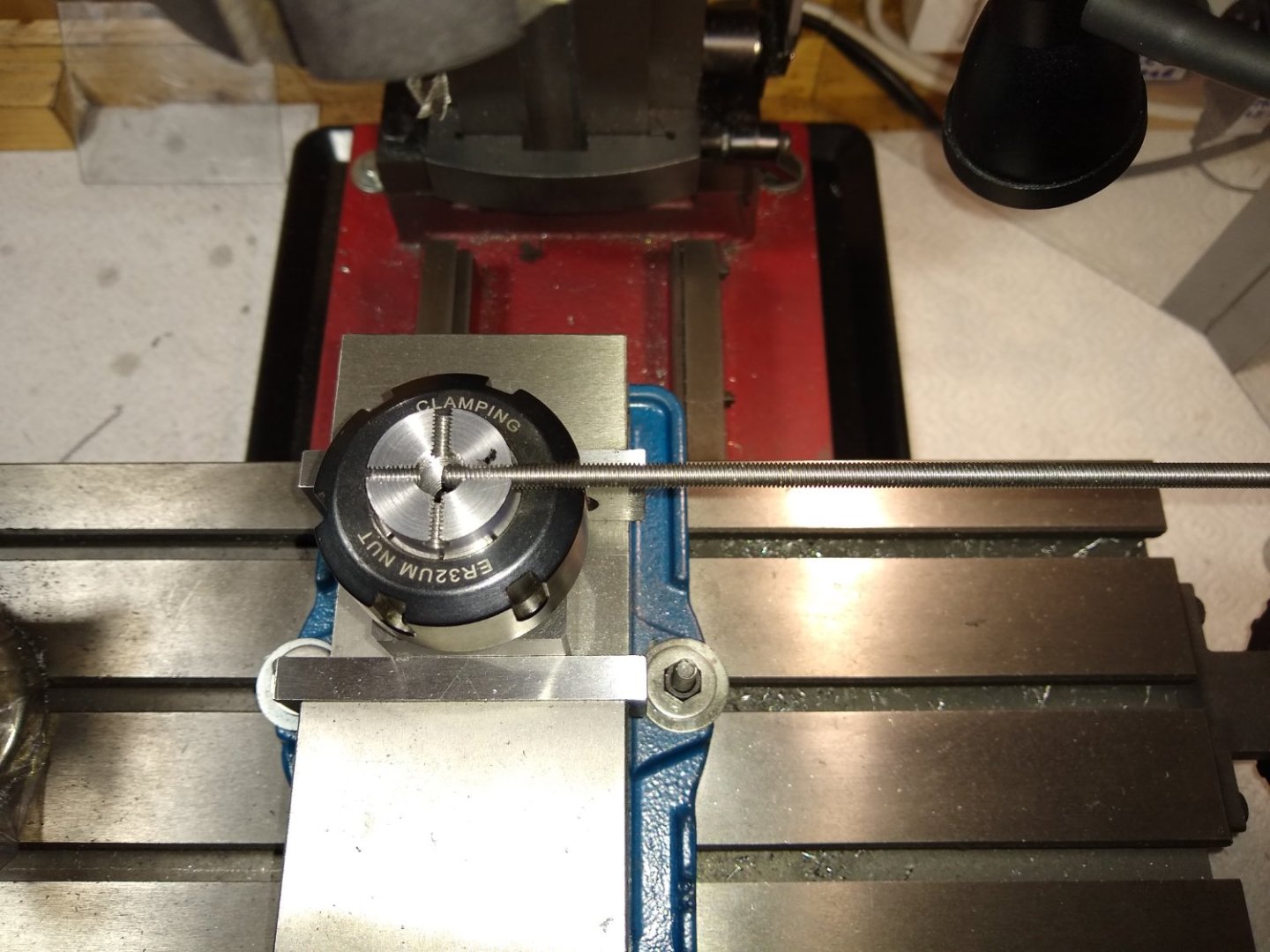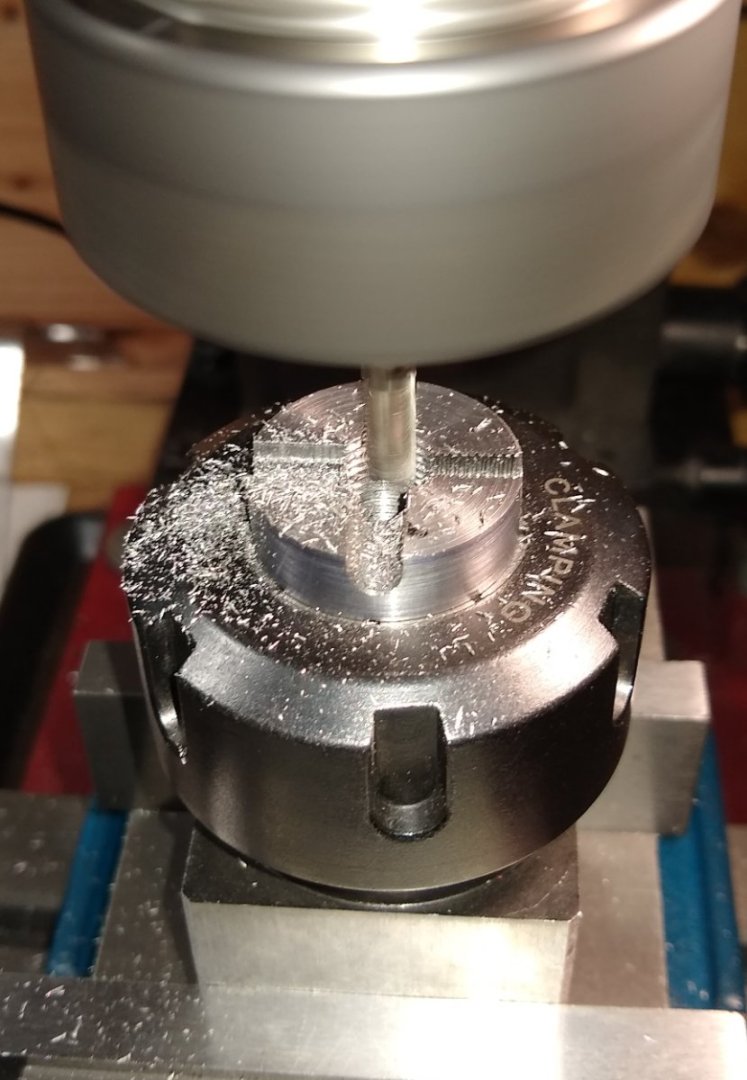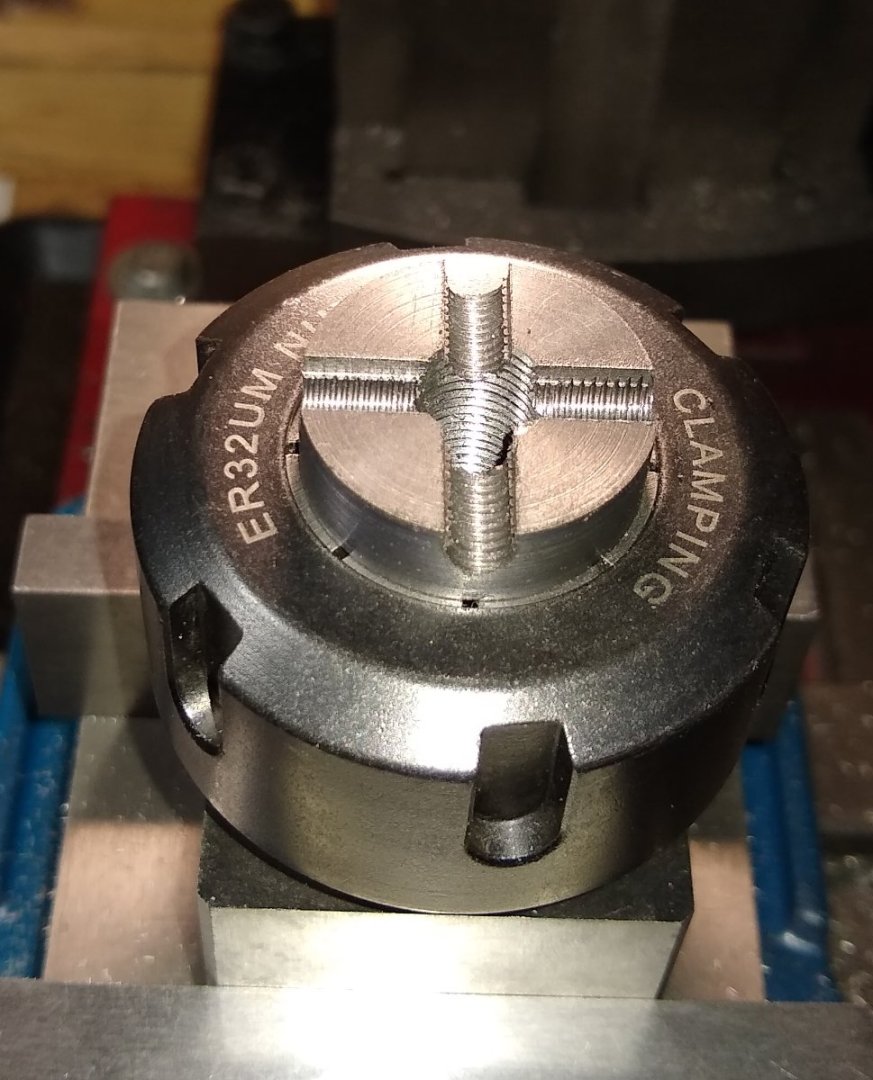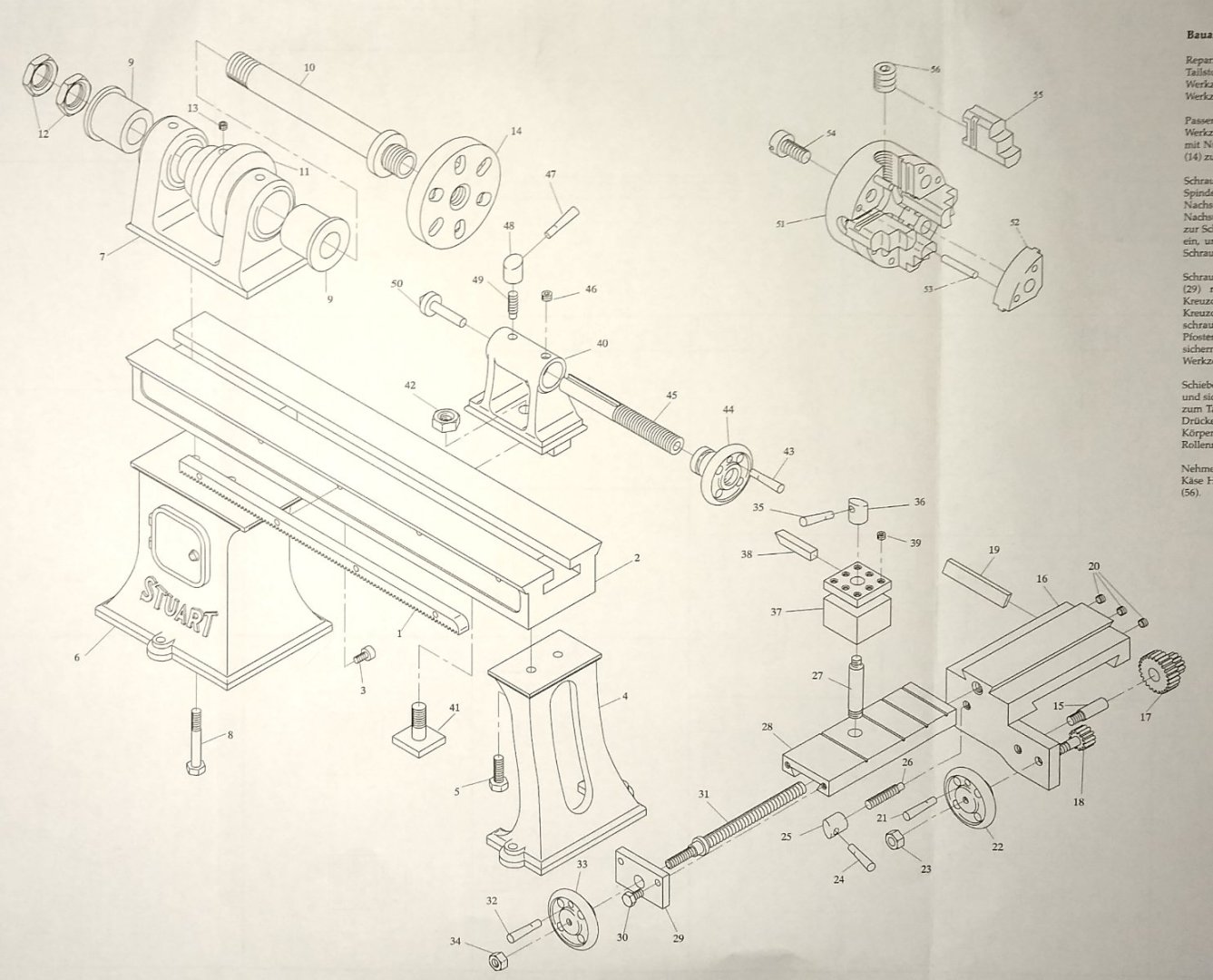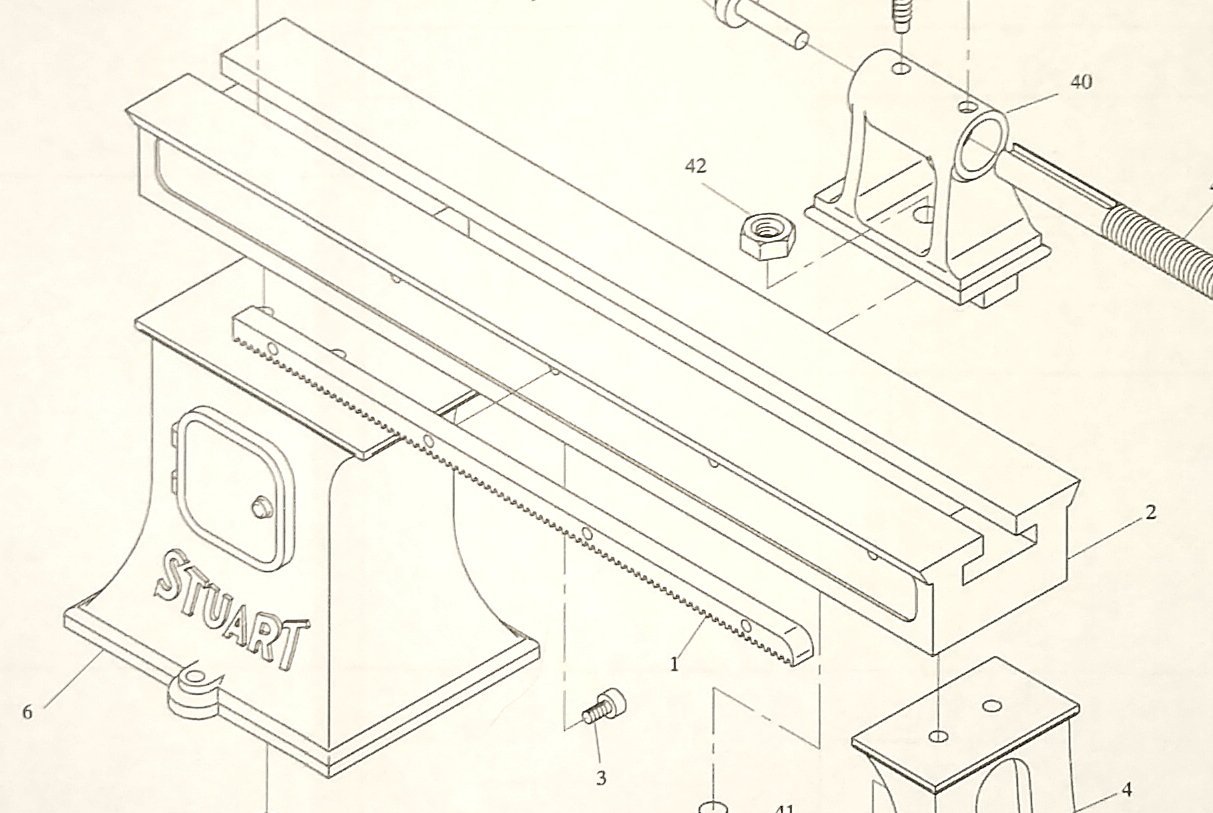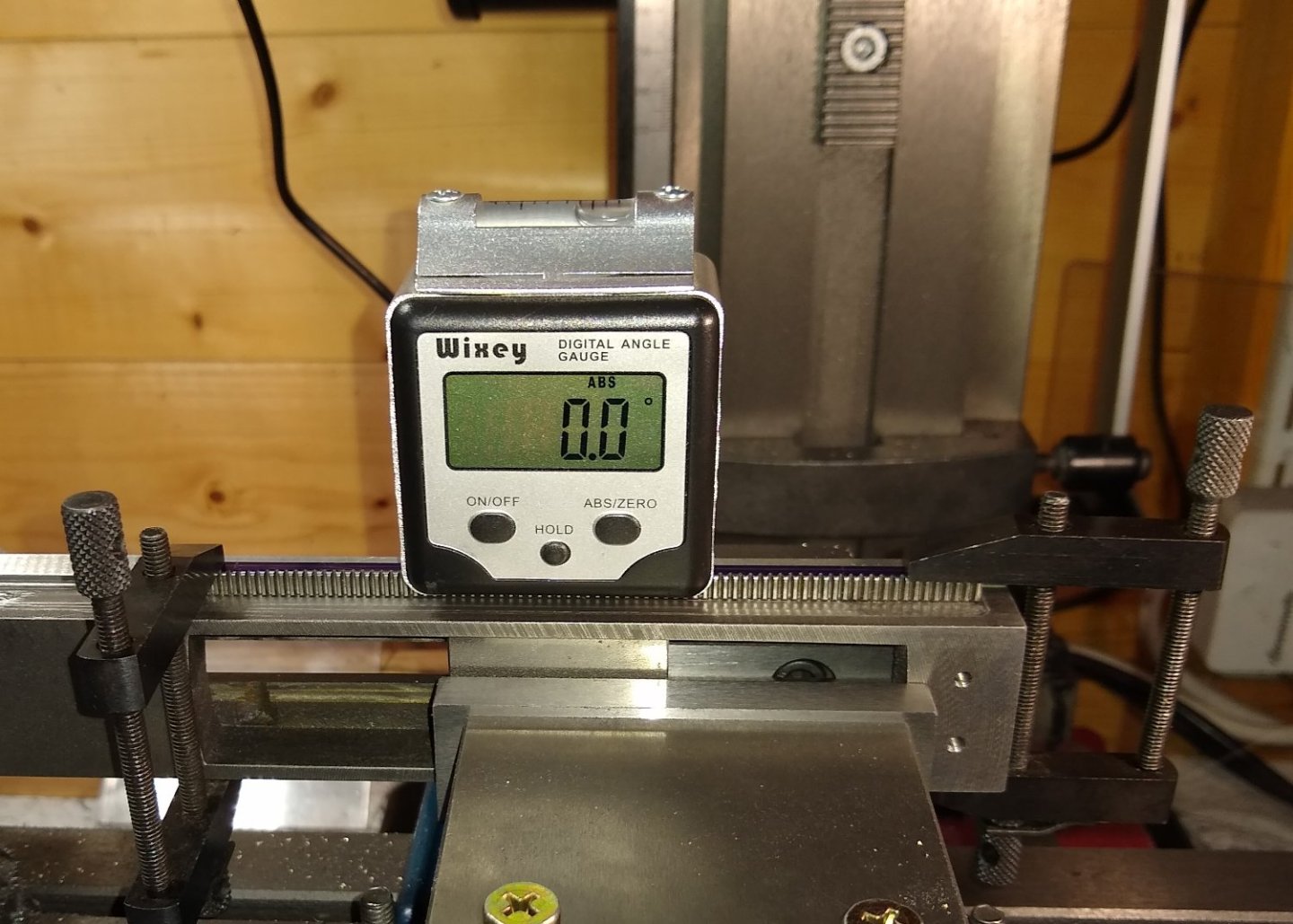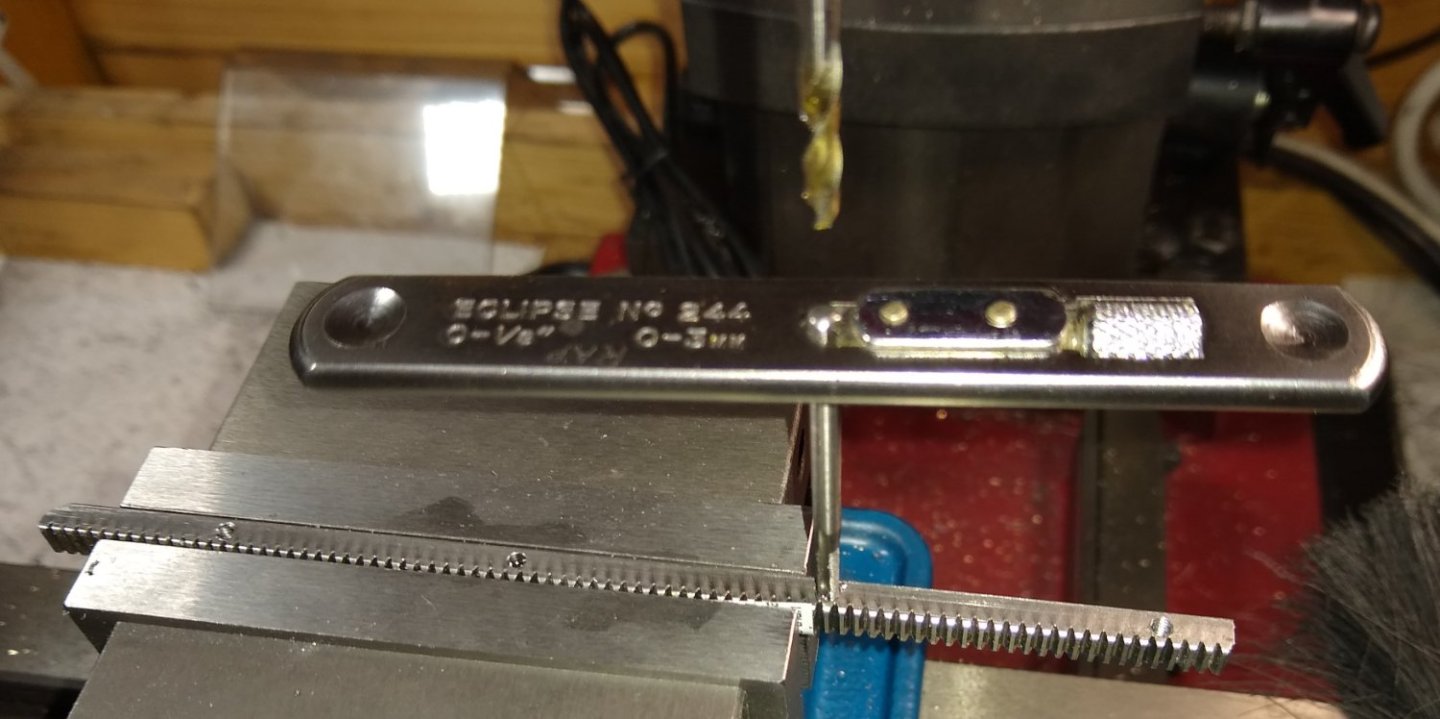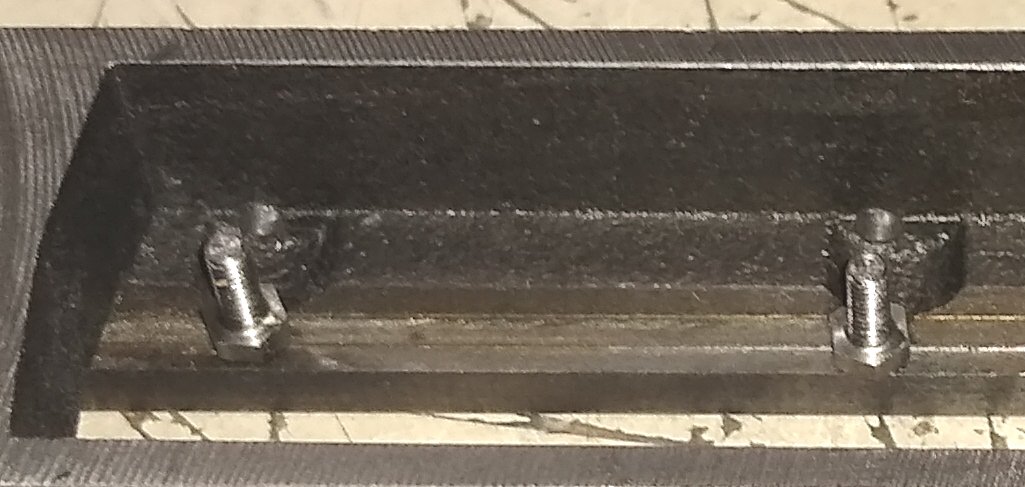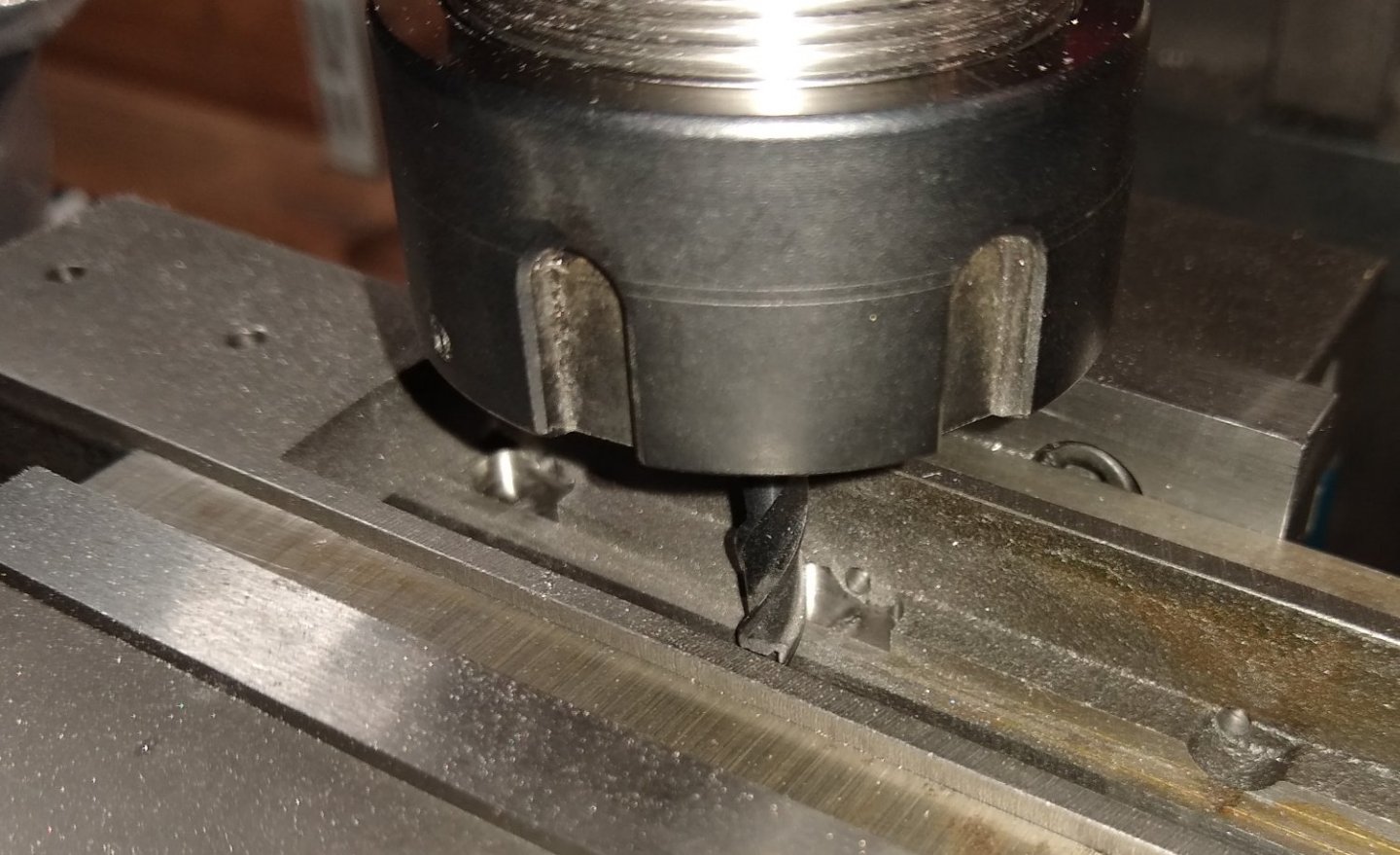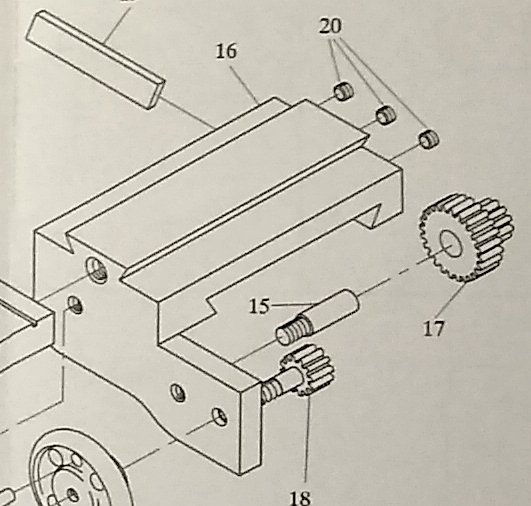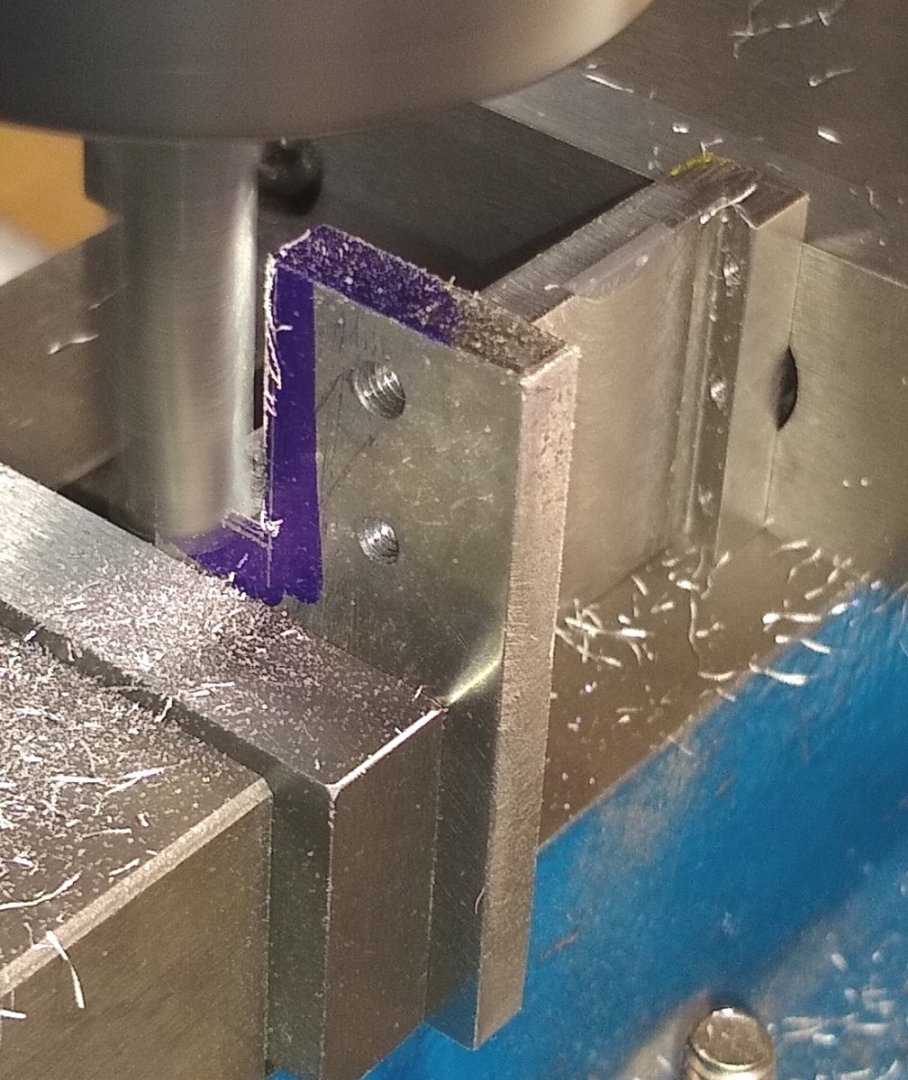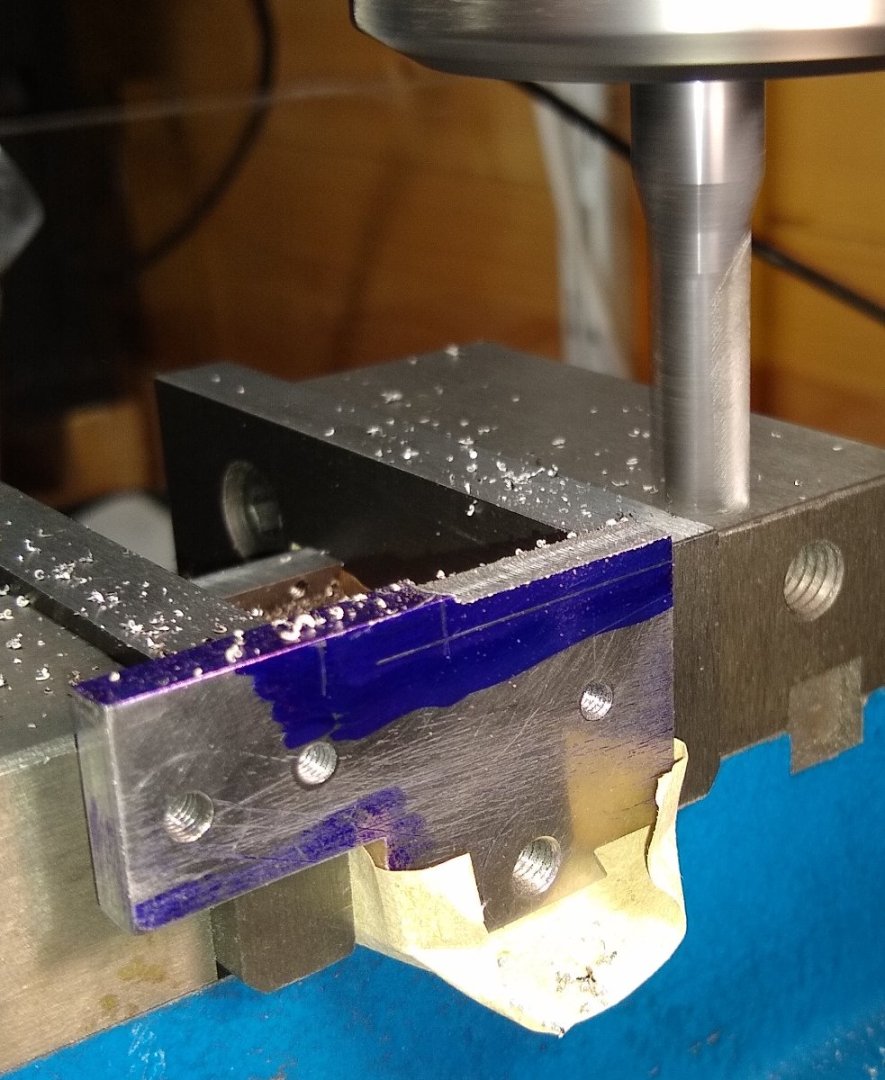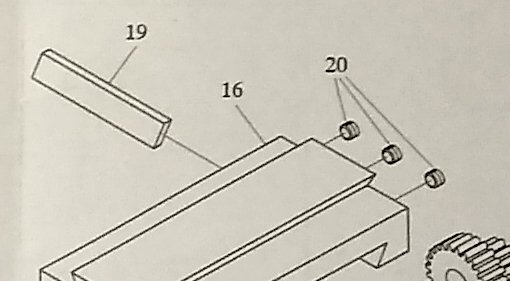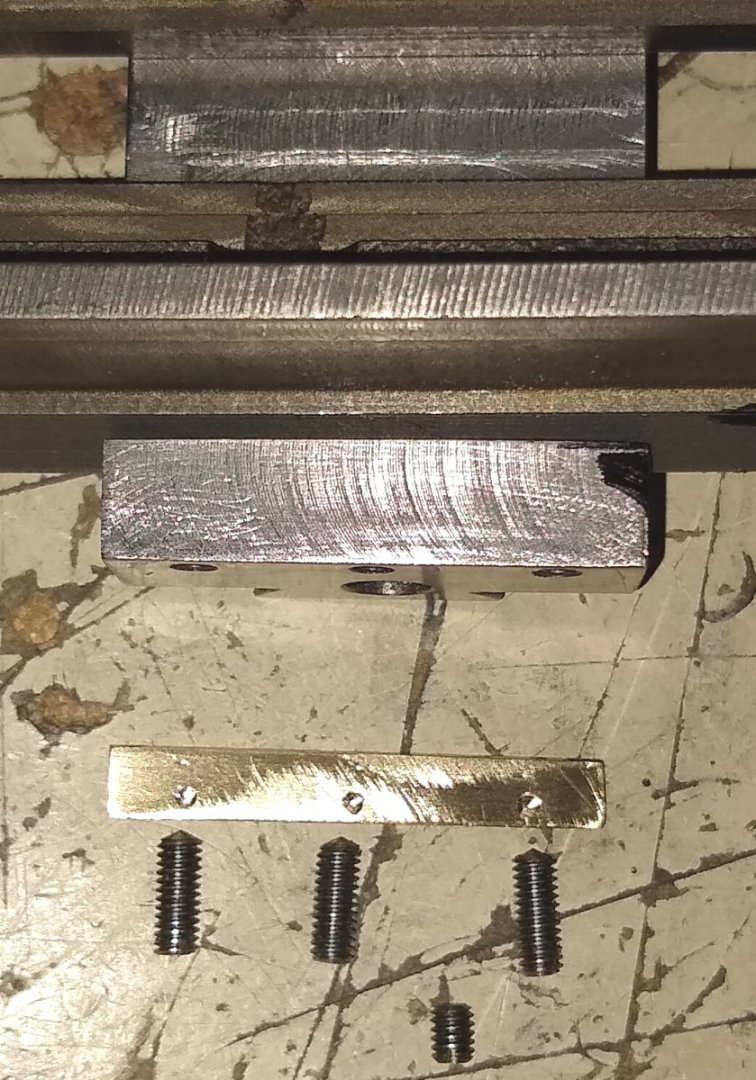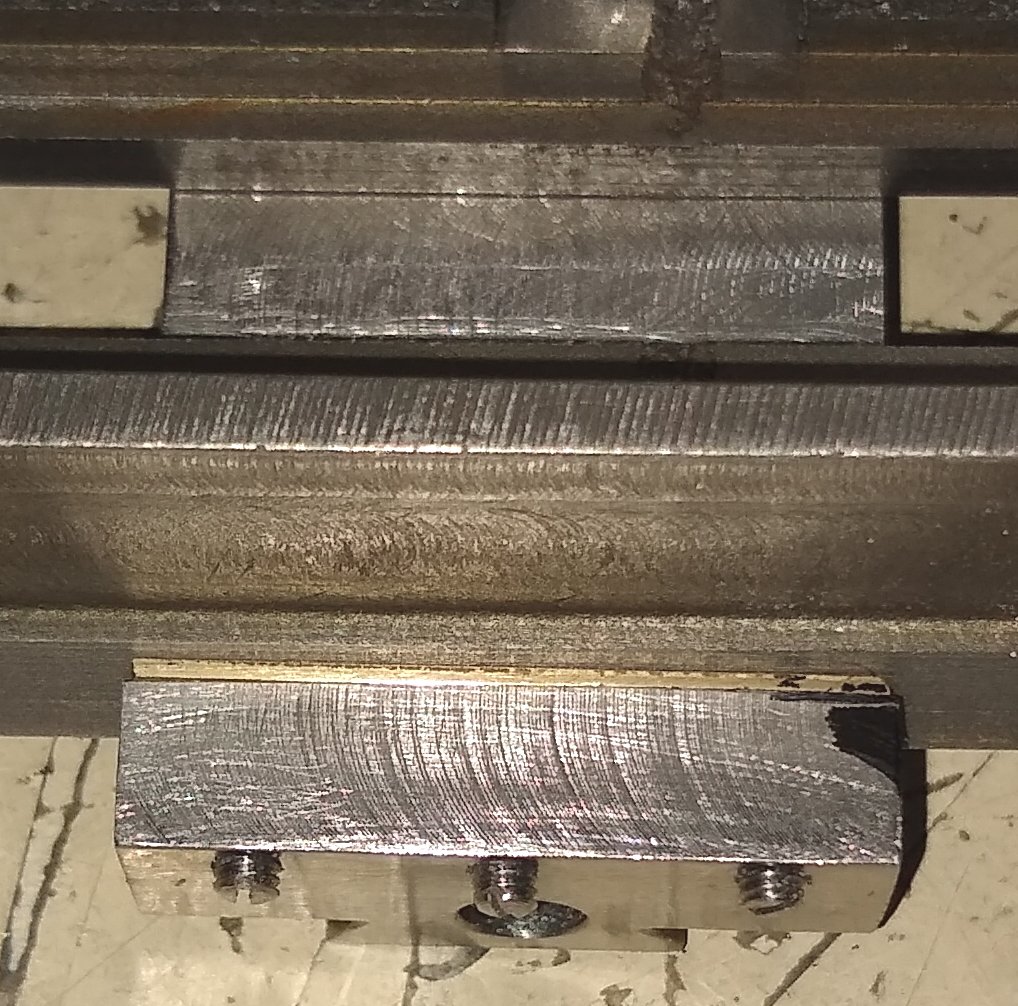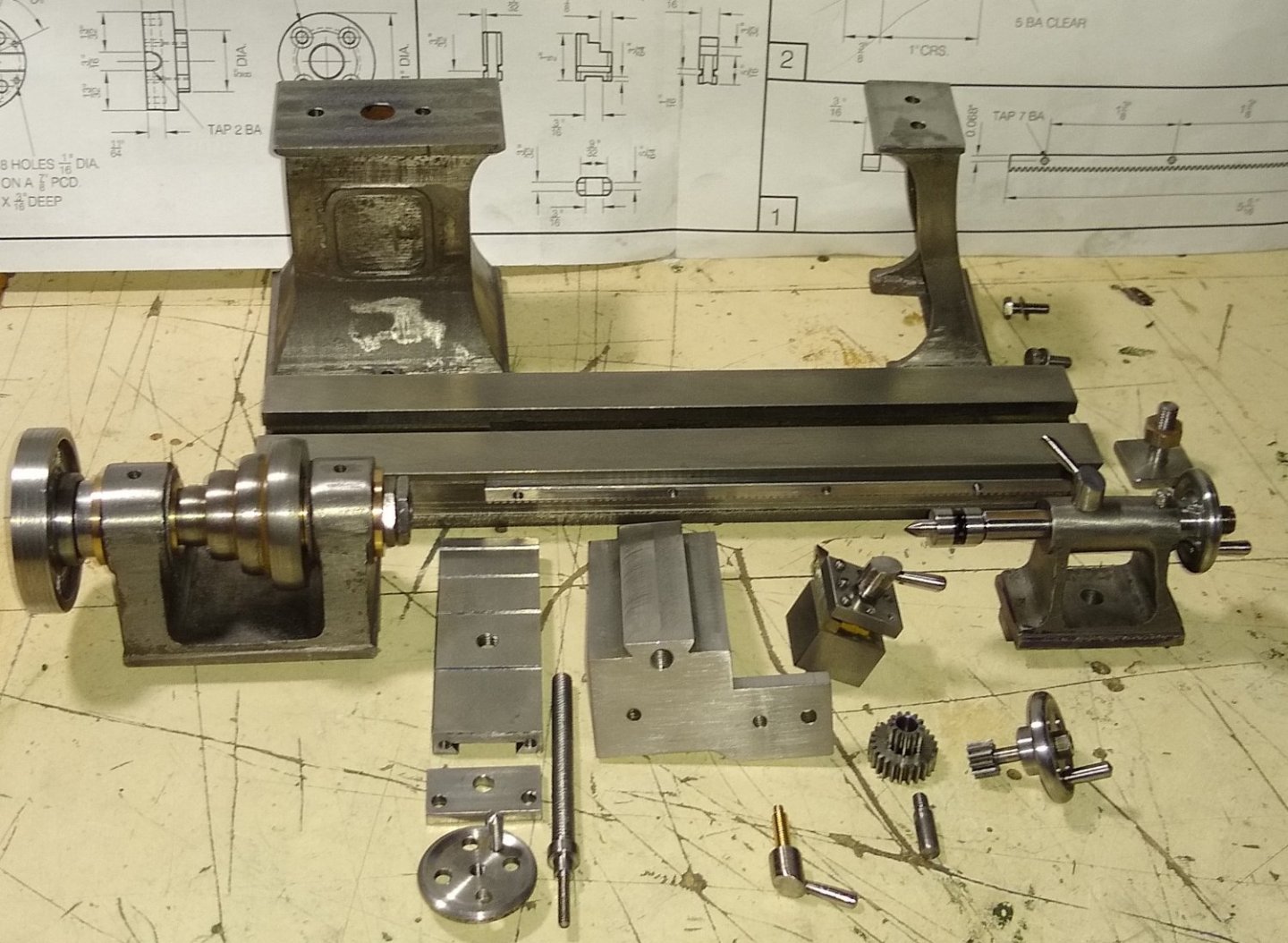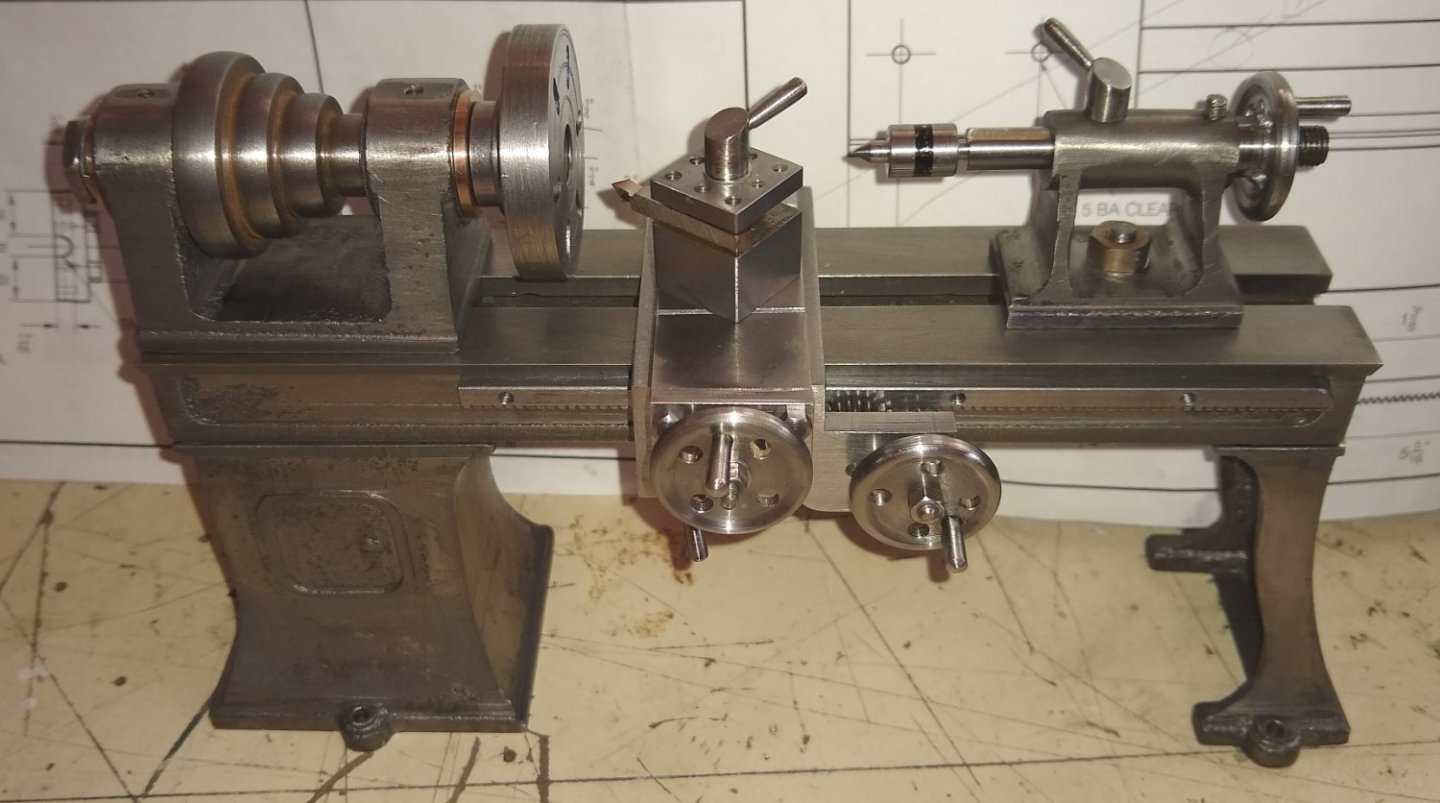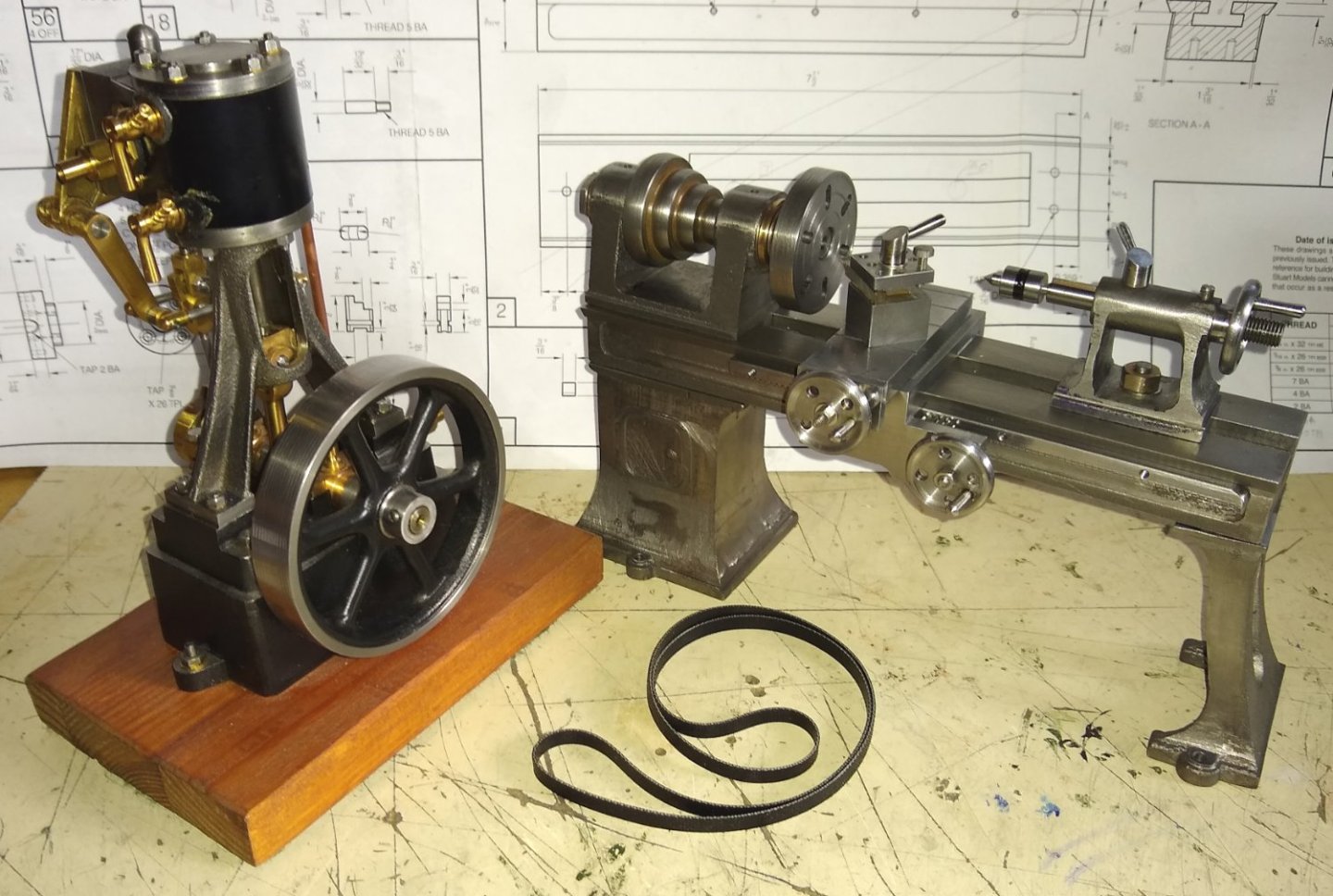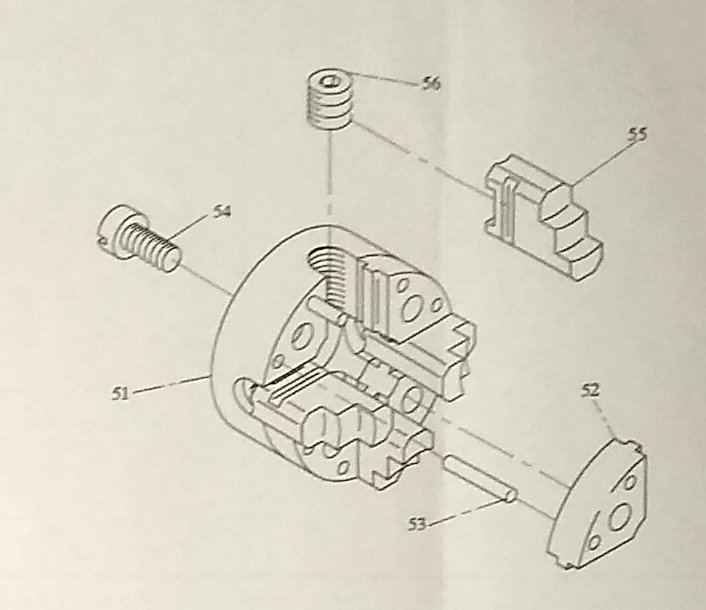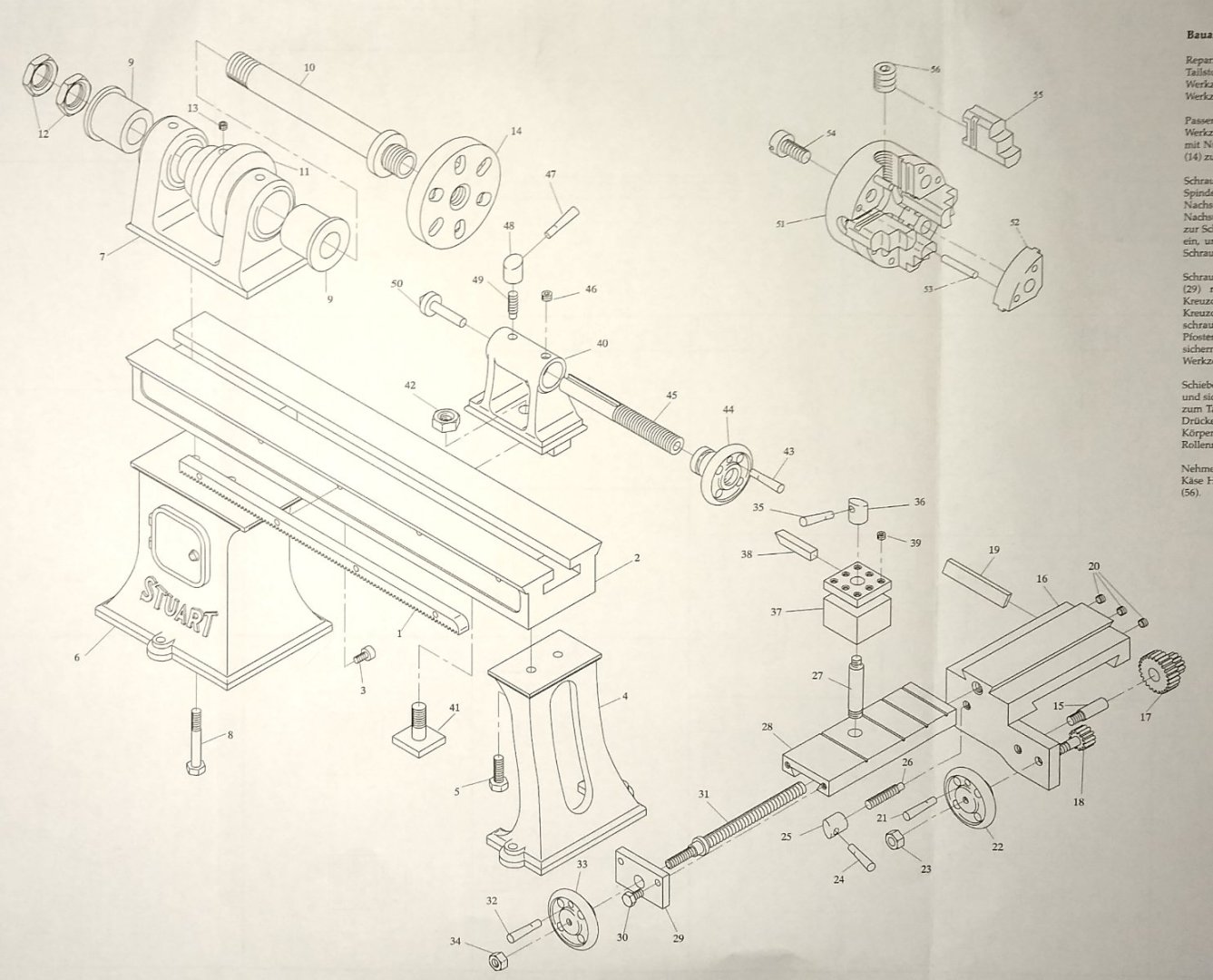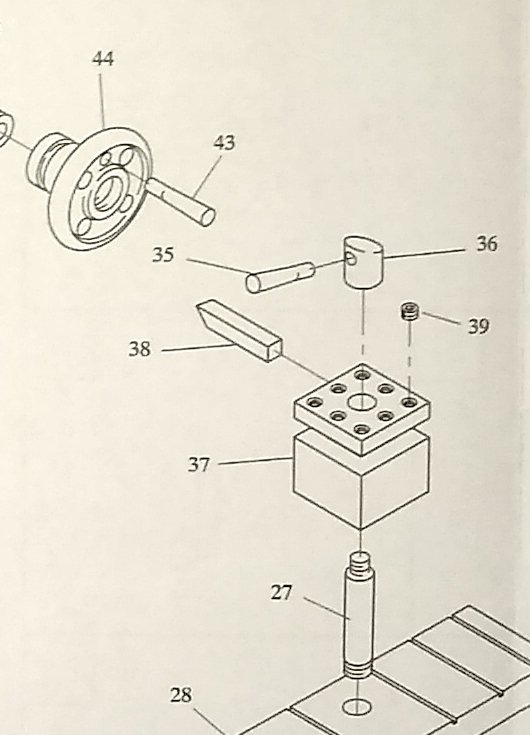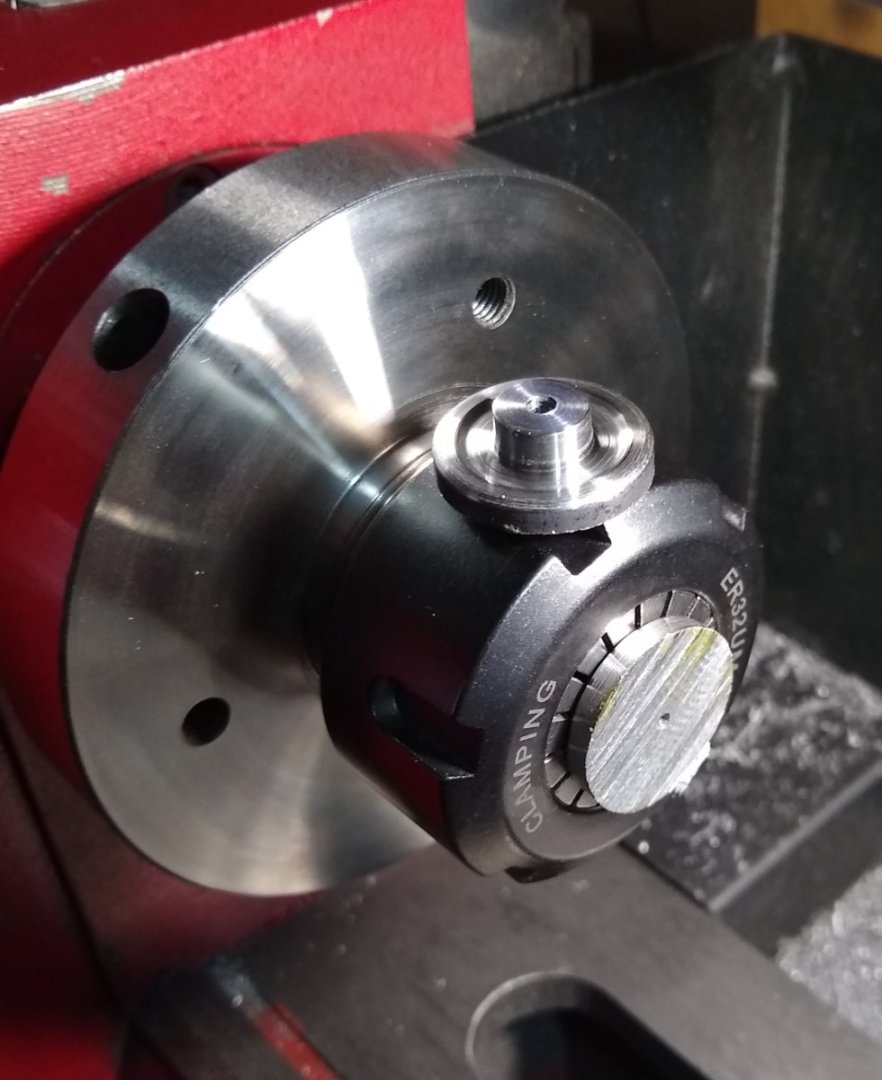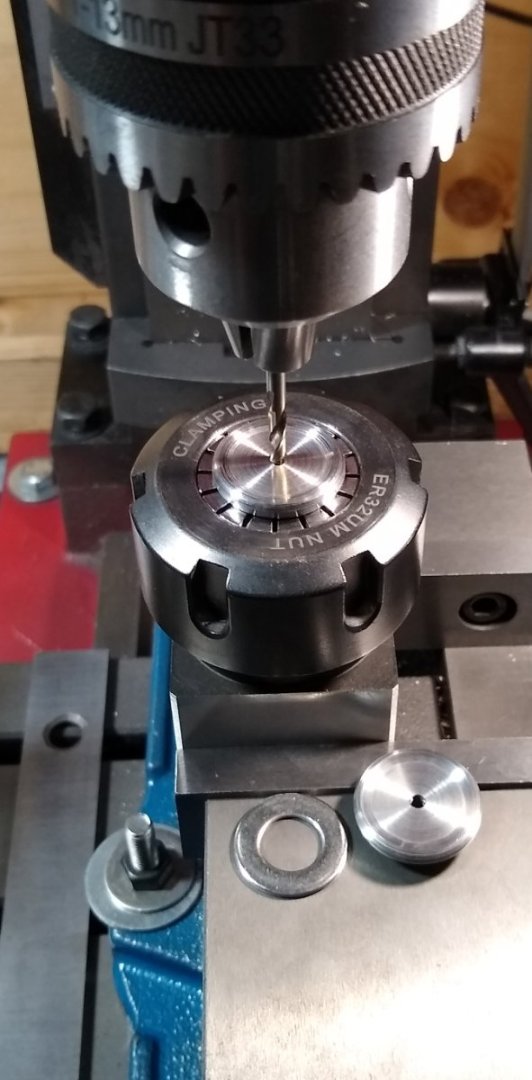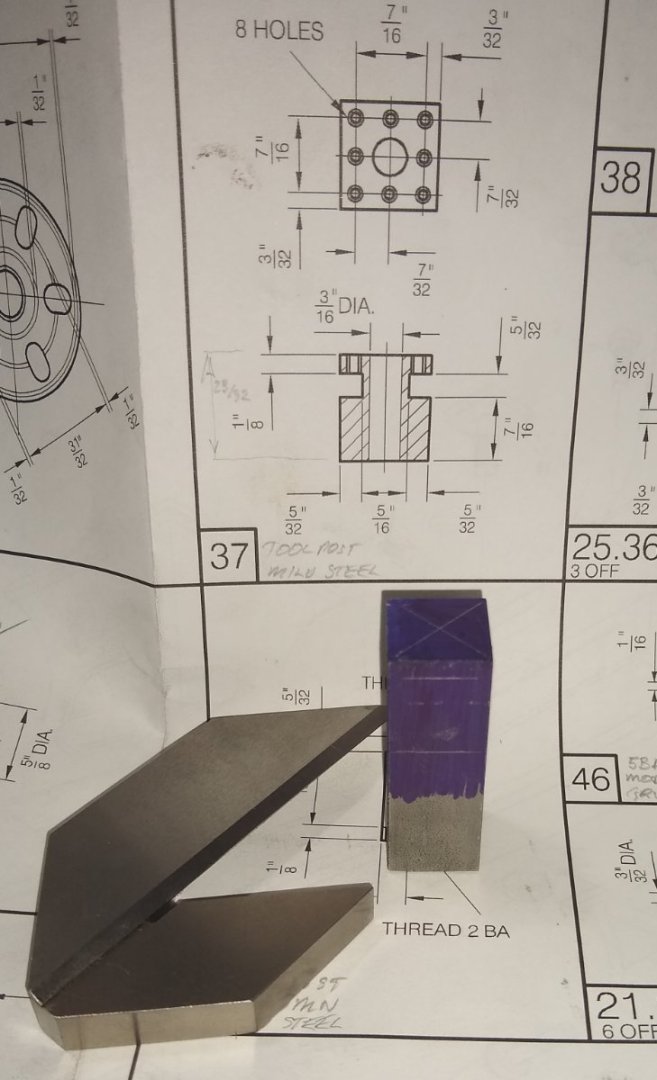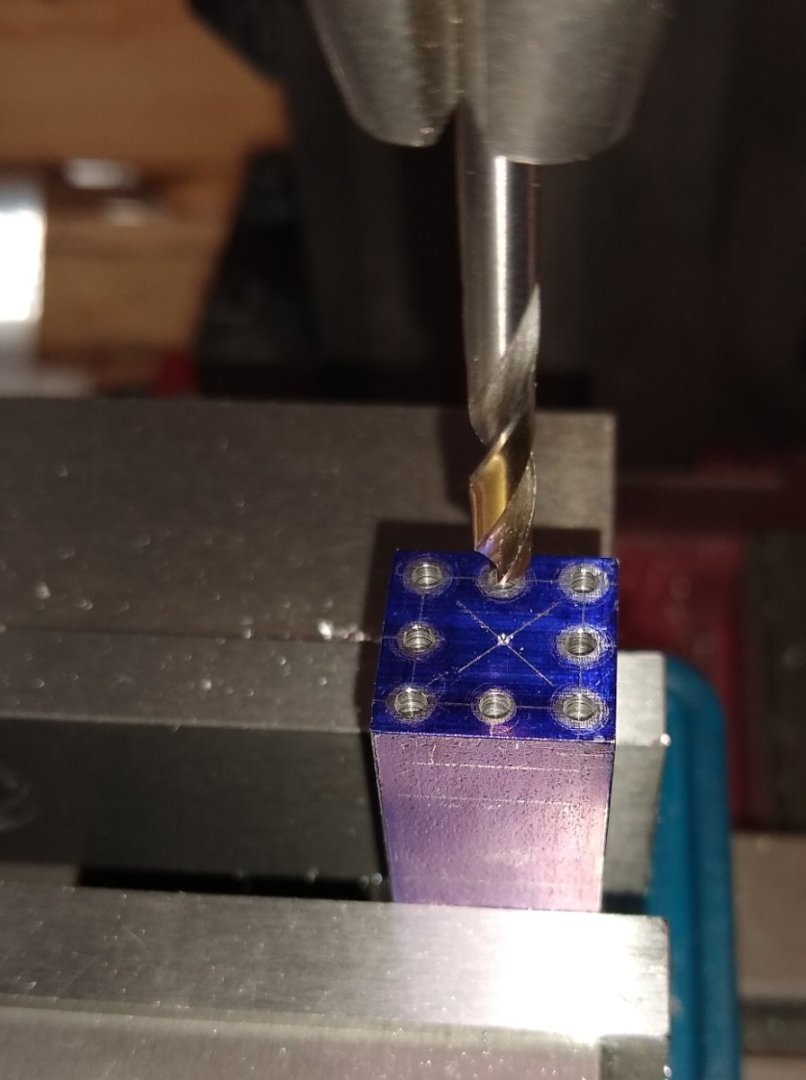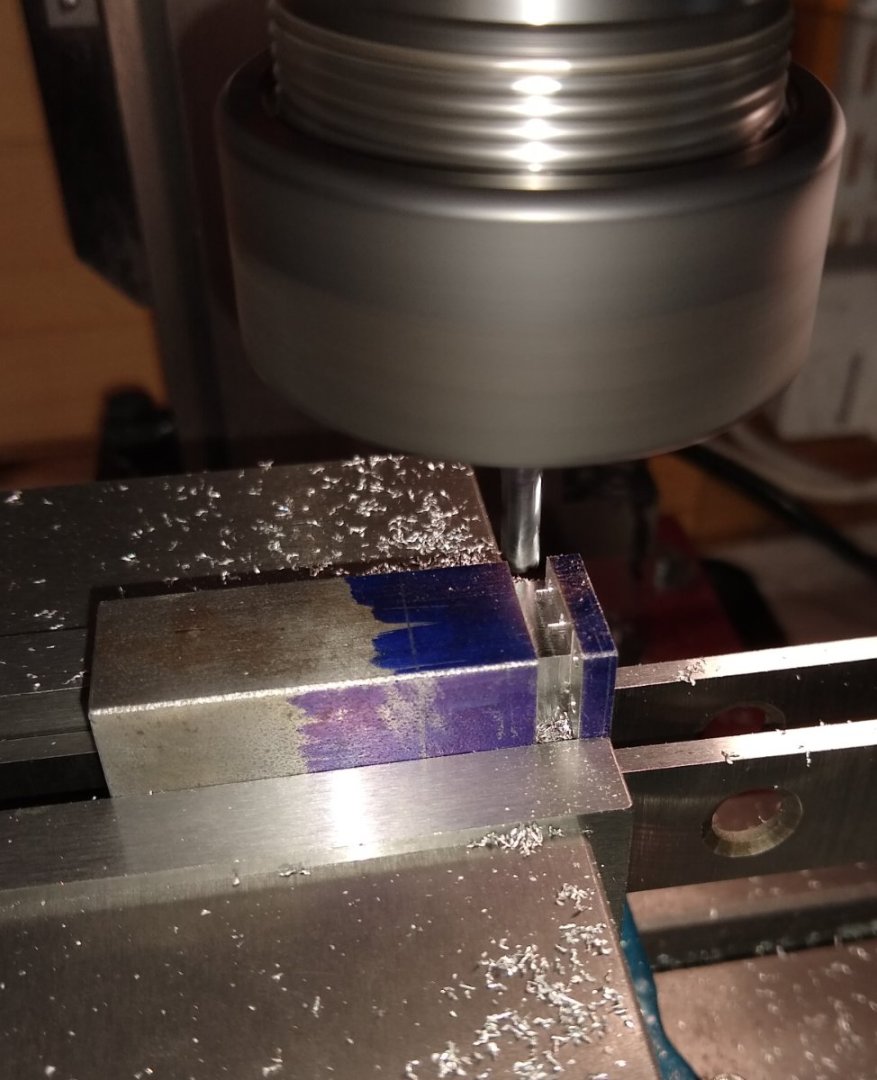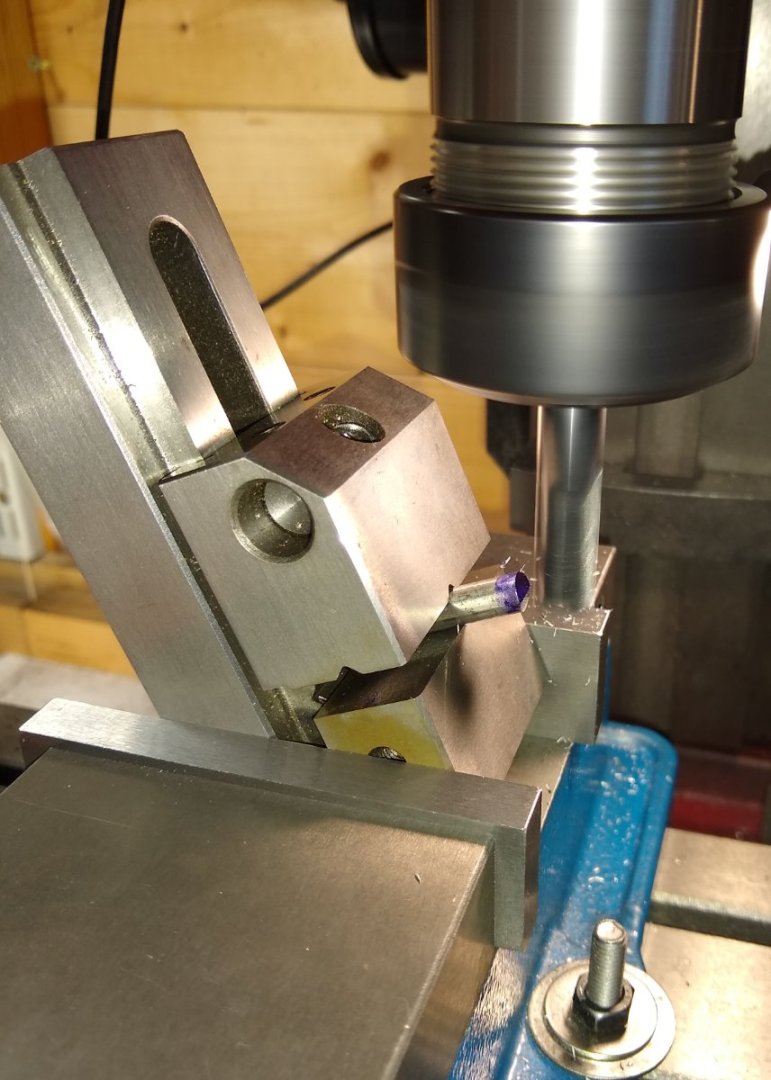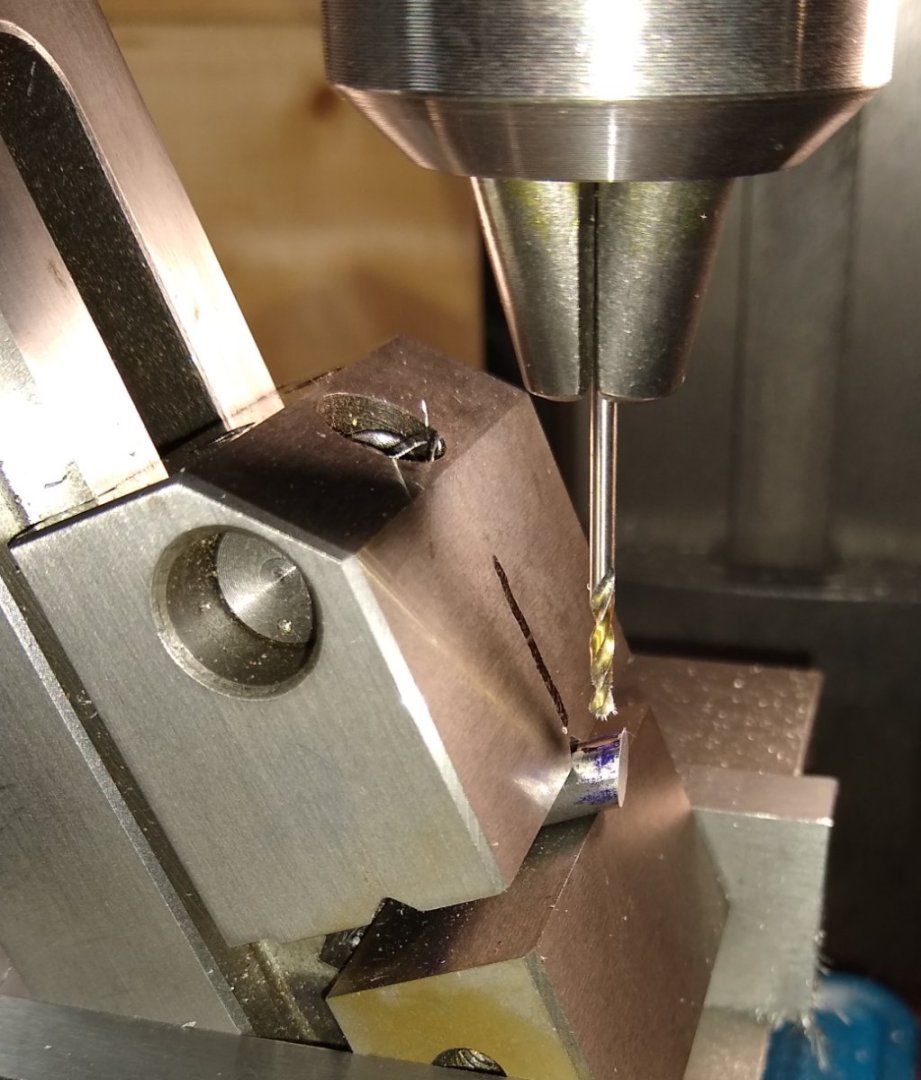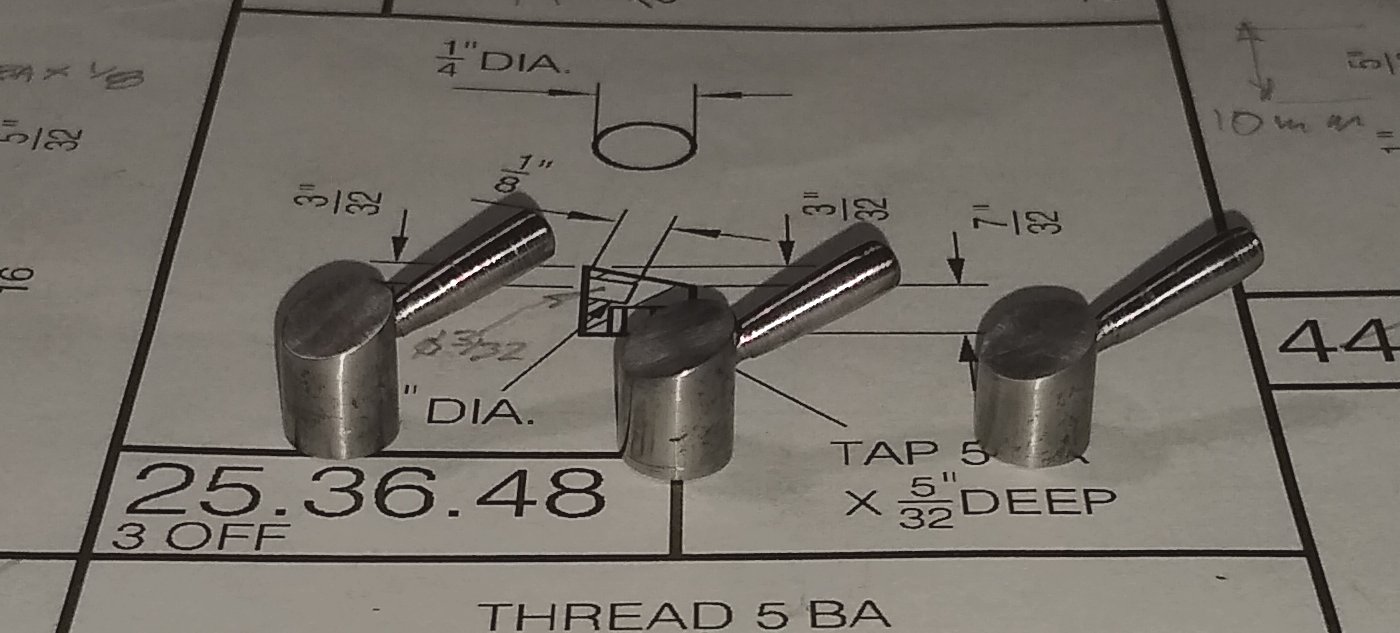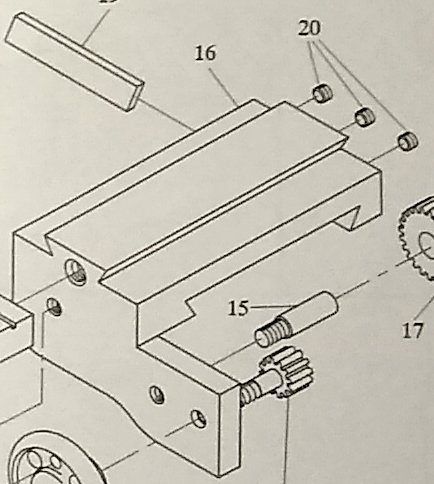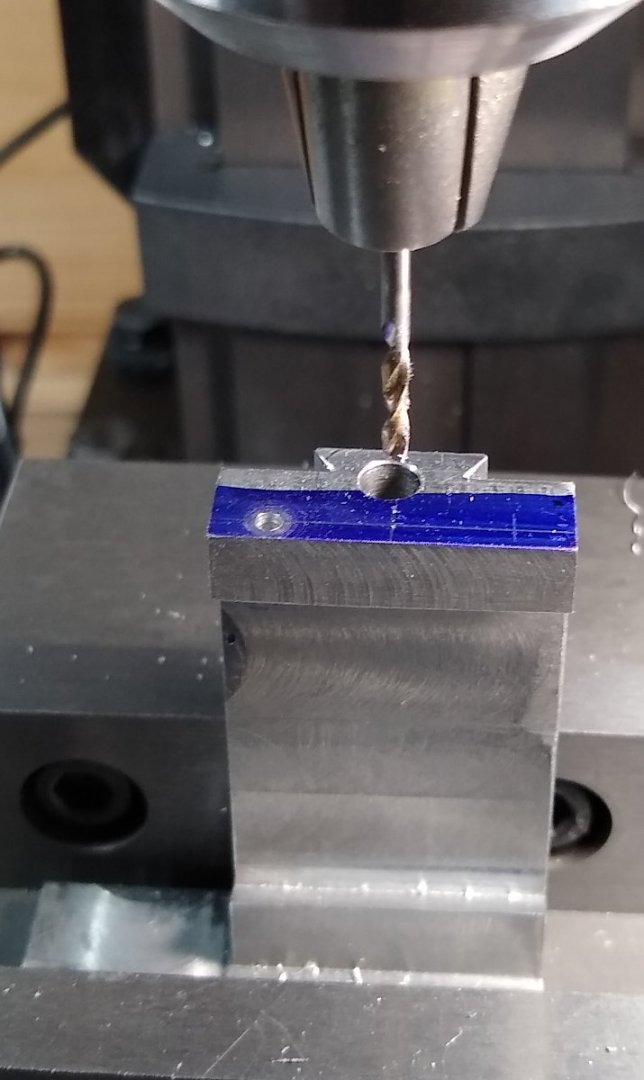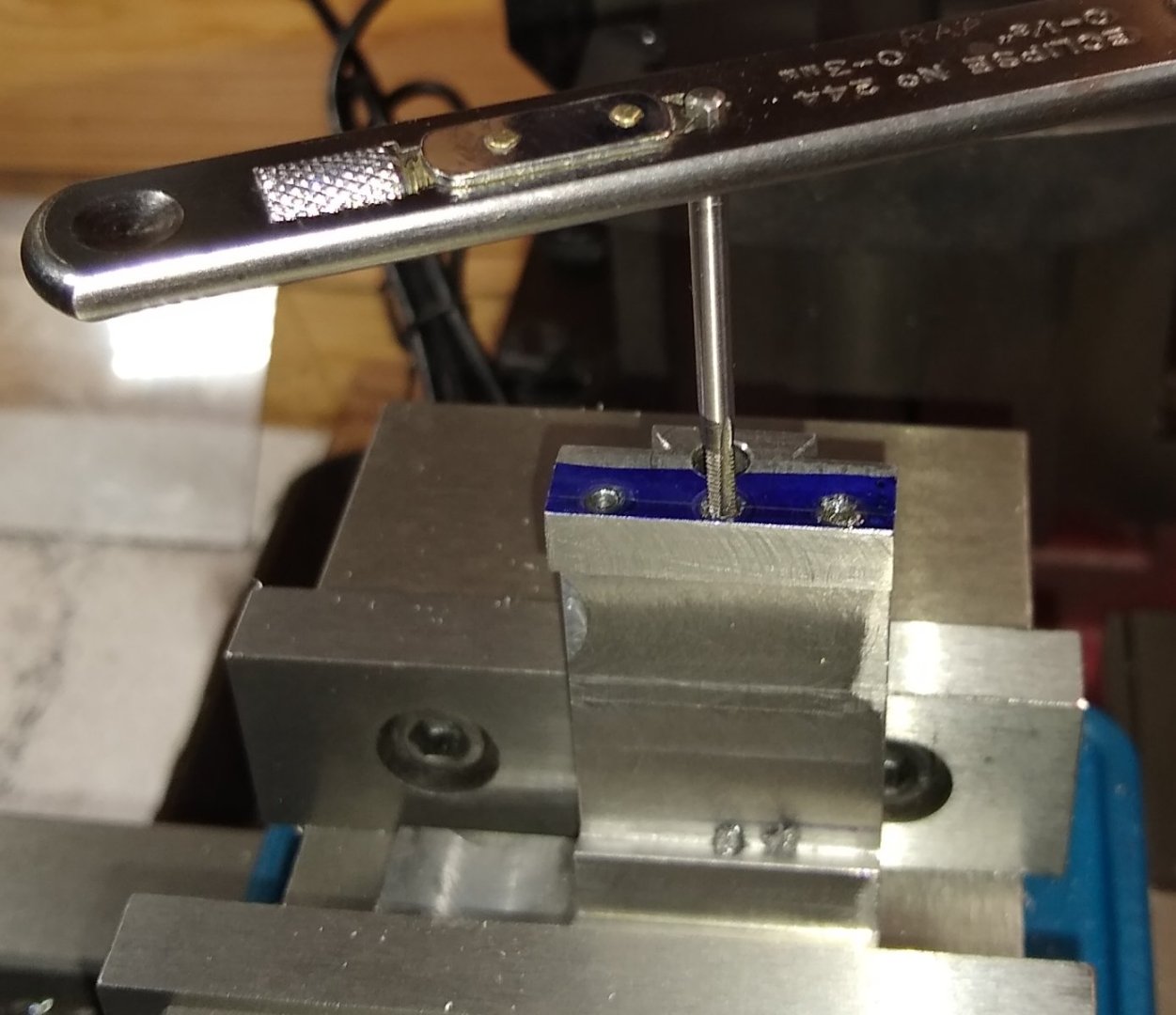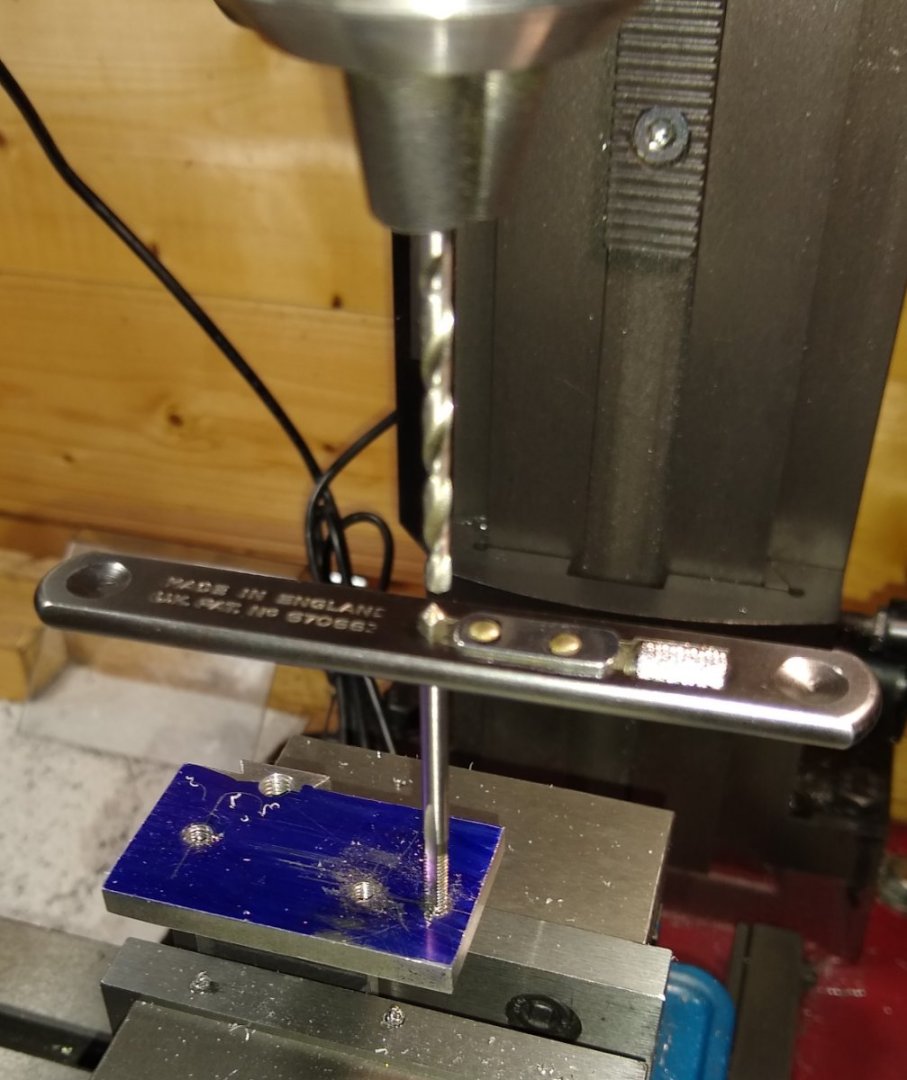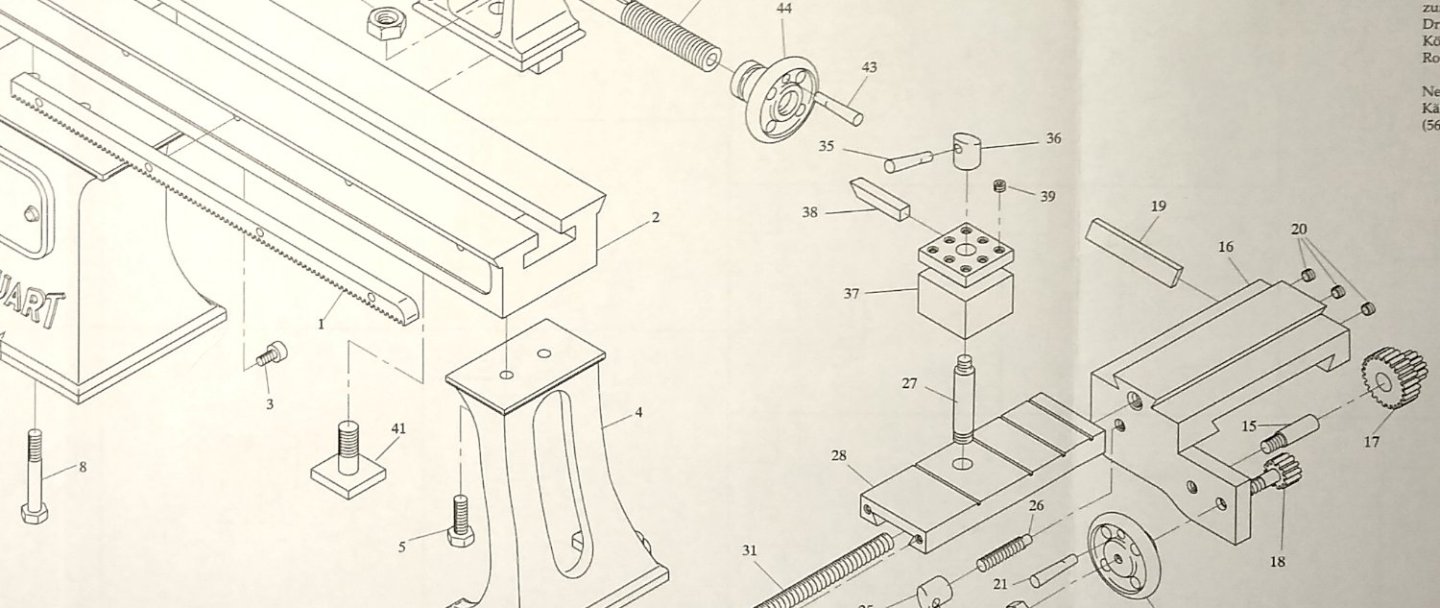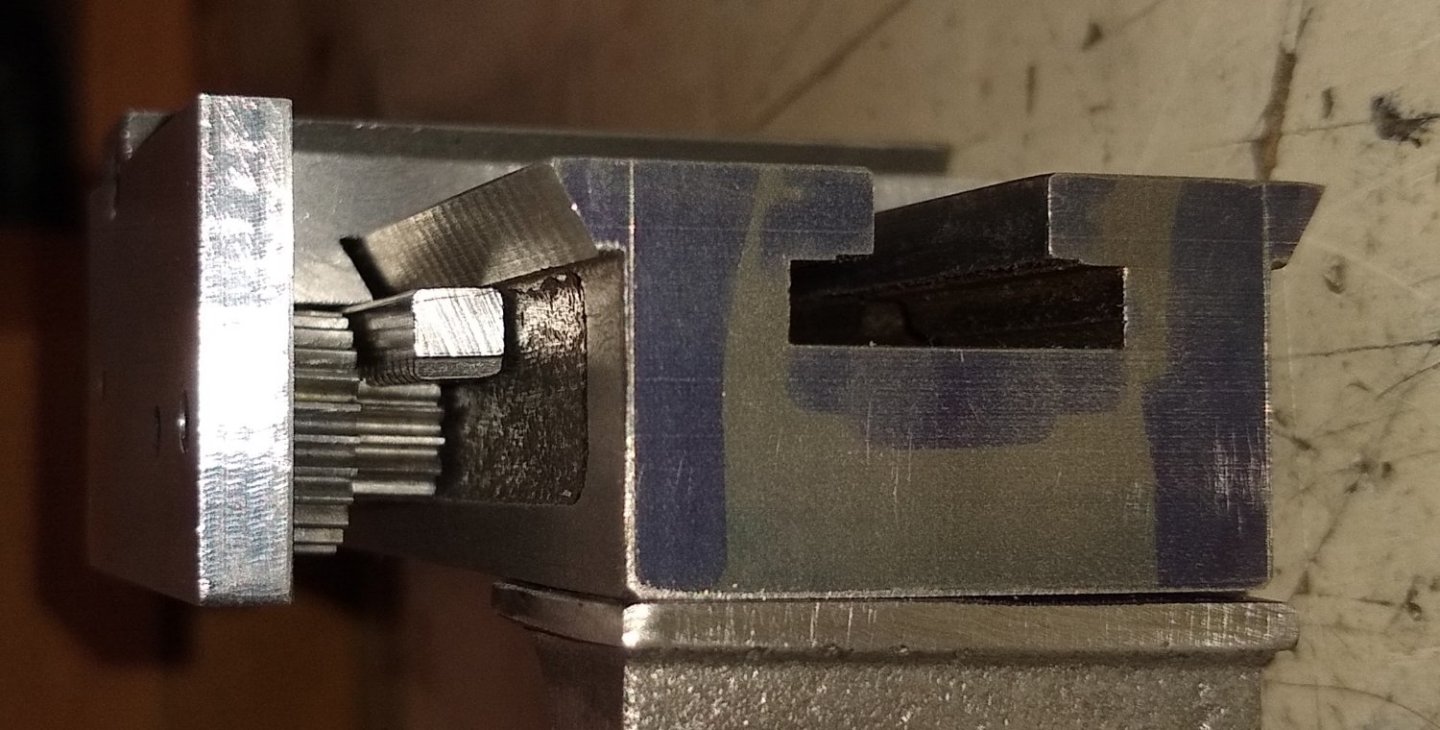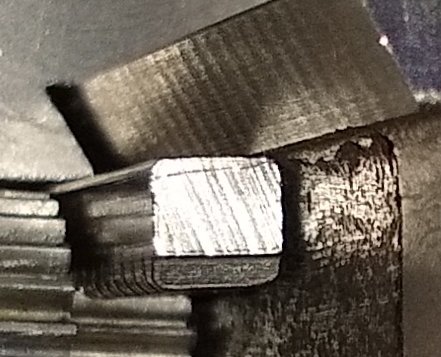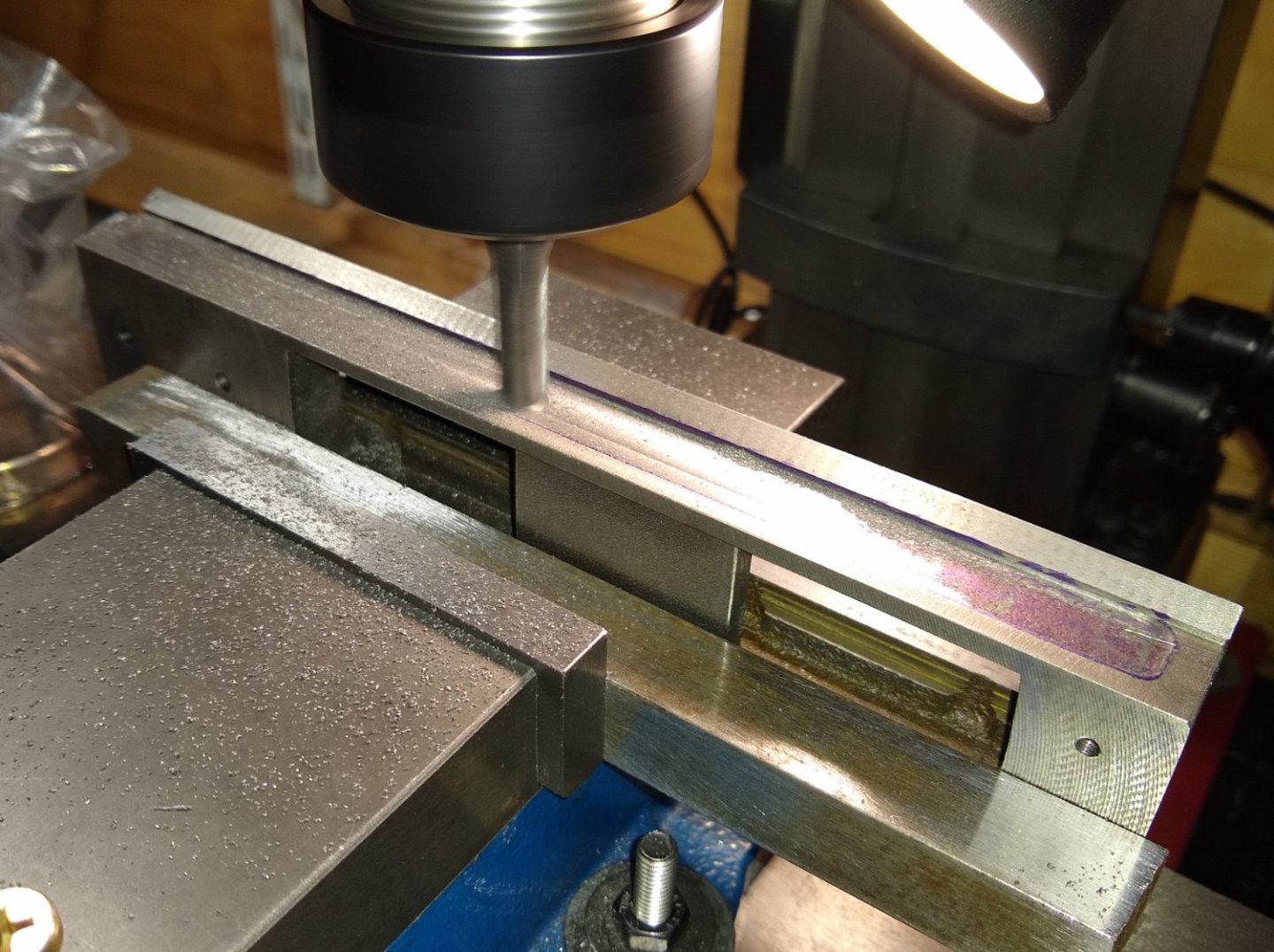-
Posts
864 -
Joined
-
Last visited
Content Type
Profiles
Forums
Gallery
Events
Everything posted by Rik Thistle
-

Corazal - the little Scots dredger that could - and did
Rik Thistle replied to druxey's topic in Nautical/Naval History
Found this 1911 report in the Wiki References .... The British-Built Dredger for Panama - Scientific American ... https://www.scientificamerican.com/article/the-british-built-dredger-for-panam/ Extract: - Steam manoeuvring winches are fitted at bow and stern, each driven by independent, two-cylinder engines, and each barrel is fitted with friction clutch and brake, to enable the to work independently of each other, or simultaneously, as may be required. Shoots are provided for loading into the vessel's own hopper, also overboard shoots controlled by independent steam winches, for loading into barges alongside. That seems to answer how it was secured and how the dredgings were unloaded. Richard -

Corazal - the little Scots dredger that could - and did
Rik Thistle replied to druxey's topic in Nautical/Naval History
This is a very interesting subject, about which I know nothing! But the picture from Wiki gets the grey matter going. [This is a photograph from the Freshwater and Marine Image Bank at the en:University of Washington. Materials in the Freshwater and Marine Image Bank are in the public domain. No copyright permissions are needed. Acknowledgement of the Freshwater and Marine Image Bank as a source for borrowed images is requested.] I had initially assumed the bucket chain would move clockwise, but of course all that would do is pull the dredger along. So the buckets travel ACW, which must mean there is a strong backwards force to be resisted. Would the dredger be chained to the shore or rely on engine power? I also wonder how the dirt/mud was removed to dry land. Off to have a 'dig' about this subject. Richard -
Mark, Ron, Thank you. I enjoy doing it and it isn't that different from model wooden ship building...the process is pretty much the same. And there are plenty of real experts out there for me to collect knowledge and tips from on both variants. I did find that the wood dust was giving me some issues (I'm slightly asthmatic) so that's one of the reasons I've stayed away from ships for the moment. The weather is headed to -5C over the next fortnight so the shed will be off limits .... I do have a card model ship in the stockpile so may look at that over the cold period/winter 🙂 Richard
-
Egilman, Thanks. Fortunately there are still a lot of home hobbyists practicing this branch of modelling. Cost effective Chinese machinery has helped make the hobby a bit more accessible - I'd still like a large purpose built, brick workshop filled with good quality traditional machinery but we accept what we can manage. Roger, Thank you too. Yes, your location is a tad chillier than mine 😉 .... I hope the winter isn't too bad for you and your folks. But to some extent, it all depends on what we are used to. When I was young, I don't remember a winter without decent snow, sledging, snowball fights etc...but these days British winter weather is warmer (and windier). Richard
-
Hi all, This will be my last 'full sized' post on the miniature lathe build. My long term plan is to mount the lathe and the 10V engine on the same base, possibly add an over head pulley system and get the engine to drive the lathe. I'll add pictures of that to this build when the day comes 🙂 Anyway, on with the final machining of the last part (the jaws) and assembly. A reminder of the chuck parts and today's machining focus, Pts 55 - the four chuck jaws. Those remaining machining operations on the jaws were - the 3/16" wide x 3/64" deep cut-out to make room for the 1/4" long grub screw (Pt 56) - curving two faces of each jaw and - adding a 45 deg chamfer to the clamping surface of the jaws. I'm not sure how a 1/4" long grub screw is meant to fit in a 3/16" wide gap, or how the same grubscrew's 0.185" outer diameter can nestle almost half that diameter into a 3/64" deep cut-out. It wasn't happening, so quite a bit of fettling was done. Maybe I'm missing something. Below, a 3/16" cutter creating the 3/16" cut-out. The four jaws were ganged together for this operation. I revisited this set-up a few times to make the slot became wider and wider and deeper and deeper making space for the 1/4" long grub screw. I did file about 15-20 thou off the head of each grub screw - the socket key hole was deep enough to lose some material. Adding the 45 deg chamfer to the jaw clamping faces. All 4 jaws were lined up in the vice, with a soft strip of Aluminium on one side to even out any irregular clamping forces. A moody close-up of the chamfering. And now adding the concave faces to the jaws. I did consider, as had been suggested earlier, reversing the jaws and cutting them as one on the lathe with a small boring bar. But there is a little bit of slackness between the jaws and their guide slots so did not want to risk it. After I had lined up the centre of the 12mm cutter with the centre of the jaw, and adjusted the cutter height, it was just a matter of moving the cutter in to the blue-marked jaw face till all the blue had been removed. I did all the 'ground level' steps first, then adjusted the cutter height and then curved the top steps - it was reasonably quick and painless. The finished 1" diameter jaw - next to a pencil sharpener, for scale. So, on to the final assembly. I had painted the parts a couple of weeks ago choosing black for the large structural pieces and khaki green for some highlights. I believe black would have been the most likely colour used around the 1890s and, with the khaki, I think it has a subdued but purposeful look 🙂 All parts function ie the chuck rotates and the jaws close in and out, the cross-slide moves in and out, the toolpost clamps and rotates as necessary, the saddle travels along the bed and the tailstock is full adjustable. Three painted and fully assembled images follow. I need to add a further five square headed clamping bolts to the toolpost to complete the picture. And a final farewell picture of the Stuart Models Engineering Lathe (https://www.stuartmodels.com/product/stuart-engineering-lathe-unmachined/ ). I started the project in September and finished early December. The shed today has dropped to -1.5C so my timing has been near spot on. Overall, a very enjoyable absorbing build, and with some challenges and puzzles. If anyone fancies building one feel free to ask any questions ... and also check out the other excellent builds on the web - there's not too many but enough to provide good info and a feel for what is achievable. I'm not sure what's next, but I feel I may not do a cast iron type kit next....rather one made of a softer material, say, aluminium. All the best, Richard
-
Roger, Thank you for the kind words, and sorry to hear about your difficulty in holding small parts. I'm no MD but I imagine 'exercise' is always a good thing. I remember reading about a circus strongman who badly damaged his spine and was told he would not walk again, never mind going back to his previous activities. But he was a stubborn, determined sort and undertook a very demanding, self-designed exercise program that, after a few years, did allow him to return to his previous life. It seems the 'messages' from the brain to the lower limbs re-routed themselves down different motorways. Yes, Jigs and Fixtures for holding is a demanding design craft in it's own right in the manufacturing world. Both for human and robotic applications. Richard
-
skim over the horizontal flats in situ I hadn't thought about doing that, ie clamp the jaws down on a 1/4" dia bar, say, and then take a fine cut off the surfaces. Bearing in mind the lie of the jaws, when slack, are determined by how well they fit on the rail on each chuck face (...reasonably well for a 1" dia chuck) so I'm not sure it would make that much difference, visibly or performance wise. And they are independant jaws so need to be 'clocked up' anyway. For a brief secend I thought that you were hinting at a way of adding the concave curvature to the outside of each step of each jaw ... 🙂 ...but alas, I'm going to have to align each jaw's step with the end mill and just gently touch it with a 1/2" (12mm) mill....that will take a little while. Richard
-
This post is to fill in some of the steps I held back from the last build post, and to get up to date on the 4 jaw chuck progress. To continue the manufacture of the chuck faces (Pt 52), I screwed the square plate to the chuck body and held that assembly in an Anderson block. I was now going to machine the 3/16" gap that simulated the 3/16" slot the jaws would slide in. The gap was machined in a cross pattern on both sides of the plate. To ensure the plate was being held square to the vice jaws, I fitted a long length of straight 2BA studding under the plate in the tapped holes, and aligned it by eye with the edge of the mill table. I also machined a 1/8" slot in the centre of the 3/16" slot - this would define the edges of the 'rails' that the jaws would slide on. I left a thin web to hold the four faces together until I had drilled the holes for the locating pins. I would then carefully saw through the web and hand file the rails to shape. With the assembly still in the Anderson block I drilled the holes for the eight off 1/16" locating pins. Holes drilled, the plate is now ready for sawing. I put a short length of 1/8" dia rod under the web to protect the 2BA thread when the saw broke through. The square plate is now in four separate quadrants (chuck faces). One face has had it's rail filed clean, and a second face is being gently prised off to have it's rail filed. A chuck face clamped in a mini vice and about to be hand filed. All four faces filed to size and re-installed on the chuck body. Sigh... 😉 ...now back to the Jaws. The 2 1/2" x 3/16" mild steel had arrived, so the slitting saw re-fitted and sitting comfortably above the vice top surface and the material firmly clamped in the vice jaws. (Edit: Welfalck noted a low profile saw arbor nut would have allowed me to earlier cut the slot above the vice jaws, rather than to the side. I had seen similar on a Joe Pie video but took the lazy route and ordered deeper 3/16" thick steel) Both sides of the material slotted, and the chuck doing a test slide on the slots. Some minor needle filing was required but a smooth action was easily achieved. A 1/16" radius is required on the edge that will run next to the 2BA grub screws. I used a 3mm diameter ball end mill. (Edit: This radius is in fact clearance for the 'chuck key'....there is no centre point given for the radius on the drawing and, as I've found a reasonably deep radius cut makes chuck key access easier). ) Close-up of the rounded groove. The slotted bar was then sawn to an approximately 1/2"+ deep length (leaving enough material for cleaning up on the mill). It was then again sawn in to four 3/8"+ long pieces. Below, one of the pieces (a jaw) being cleaned up to size on the mill. Below, the four jaws sitting in the chuck, with a spare bit of material hanging about just in case 😉 The jaws were then clamped in the mill vice as a gang, and the two steps milled to size. Below, two pics of the chuck as it now stands. Yes, I painted the lathe whilst I was waiting on some parts to arrive....it's black. The jaws still need to have the 3/16" wide cut-out milled to captivate the 2BA grub screw, the jaw steps need a slight curvature and the jaw edges need chamfering. And then that should be that 🙂 I'll post in a week or so how I get on. (Edit: the depth of the 3/16" cut out in the jaw is given as 3/64", but on assembly I find it should probably be a further 0.029" deeper ie almost 5/64" total depth. I'll need to double check those calcs but beware if you are making this project). The cold weather is arriving this week in central Scotland, so shed time may be restricted. However I do have a heater and can wrap up well so not really an excuse. The only bug bear is in handling very cold metal and tools. The heater can heat up the air but lumps of metal take a lot longer. Regards, Richard
-
change the name to “holding.” 🙂 Roger, absolutly correct. Work Holding is fundamental to removing material from parts. Not only regarding metal, but also wood on model ships, Even 'holding' a wooden part in your fingertips as you gently file it is a carefully calculated procedure .... it may feel instinctive but that is probably because we have used our fingers all our lives to hold things and don't realise the mental calculations and changes we do whilst holding the part to get that correct curvature. Richard
-
You didn't have an 1/16" end-mill ? I forgot to mention I did try a 1/16" end mill initially, taking about 0.002" - 0.003" cuts...it lasted one and a half passes before breaking...I was taking it very slowly, high rotational speed, lubricant etc. A 1/16" end mill would have allowed me to used Stuart's 3/16" x 3/8" supplied bar. I had bought two 1/16" mills for this job; they weren't the most expensive but I hoped they would have lasted longer. There may have been something in my set-up that caused the mill to break but I couldn't see what. So I switched to the slitting saw. My gut instinct made me wary that a 1/16" diameter cutter on Stuart's mild steel was pushing it. Richard
-
Hi all, A short post to cover some of the chuck activities, before an issue arose. Firstly, lets look at Pt 52, the chuck faces . There are four of these. They are screwed and pinned on to the chuck body. Pt 52 drawing, shown in the top left corner below. As with all these types of jobs the way they are tackled depends on the machinery available and the skills of the machinist. I decided to make the 4x faces out of one single, mild steel, square plate (shown on the right). First, prepare the chuck body to accept the 4x faces ie drill and counterbore the four off 5BA clearance holes. The Anderson blocks don't get much sleep on this project 🙂 Aluminium spacers used to lift the chuck away from the collet for when the drill broke through. Counterboring the holes. The drilled and c'bored chuck body. This was all reasonably plain sailing. Now the attention turns to the chuck face faces. To produce the 1/16" wide x 1/32" deep guides on the two edges of each chuck face, I firstly cut 3/16" wide channels x 1/16" deep on each side of the 3/16" thick plate. Then drilled the 3/8" diameter hole for spindle clearance. Using toomakers' clamps to spot through the chuck body 5BA holes onto the square plate. I don't have X&Y Digital Read Outs, or trust the tumblers on those axis to drill the parts independently. Edit: I will return to the completion of the chuck faces in a later post. I wanted to at least makes the grooves in Pt 55 (the Jawas) since they would be a sliding fit between the chuck faces. But now on to Pt 55, the four chuck jaws. Dimensions below. A sketch I made to help get my head round the best way to make these parts - there were lots of such sketches made. Basically, I'm trying to figure out the optimum order to machine the features, bearing in mind machining one feature (eg the steps) may remove work holding material for a later step. I decided to first machine the 1/16" x 1/32" slot that would mate with the chuck face. I would do this using a 1.5mm slitting saw. The only problem with that was that the slitting saw holder has a large deep nut on it's underside that would clash with the vice top. I had already replaced the Stuart supplied 3/8" deep bar with 1 1/2" deep bar (from my stock) that I hoped would allow me to machine above the centre of the vice. But not even 1 1/2" took me high enough above the vice. So I tried moving the bar out to the side braced by a large section tool steel bar. I managed to make the beginnings of a slot with the material out to one side of the vice, but it soon became apparent that the slot was deeper closer to the vice than at the other end which was 'flapping in the breeze'. So I pulled the plug and ordered a 12" length of 1 1/2" (Edit: 2 1/2") x 3/16" bar. This would allow me to machine the slot over the middle of the vice and be more firmly gripped with the vice jaws. The material took over a week to arrive, so I'll continue in the next post. All for now, Richard
-
A big 'like' for the cat ...and the boat 🙂 Richard
- 156 replies
-
- marisstella
- marisstella model ship kits
- (and 4 more)
-
threaded mount does not give concentricity, Yes, there can be a number of things wrong with an imperfect thread ie not concentric, bent, under size etc. So for true location the chuck does need to be accurately registered, and rely on the thread only for pulling the chuck home. As I'd like to eventually run the Stuart lathe from a 10V engine and turn some material, brass or nylon, it would be better if the faceplate and 4 jaw chuck is properly registered. I'll investigate the feasibility of this. Richard
-
Hi all, This week I was finishing off the tool post, and making a start on the final part, the 4 Jaw Chuck. Below, the Toolpost (Pt 37) and it's parts. I had completed the toolpost last week. It looked fine apart from the slotted head, 7BA grub screws holding the tool - these screws disappear down into the body of the toolpost, which looks kinda strange. So I decided to replace them with hex headed screws, but with the head machined square. Below, the hex screws held in an Anderson square collet block, and the mill taking shavings of the hex head till I got close to the thread but not too close. Without changing anything else, I then rotated the Anderson block in the vice to machine off the remaining 3 hex sides, to end up with a square head. Below, that looks much better ;-). I should really fit square headed screws to the remaining 5 tapped holes.... maybe once I've got all the other parts finished ... maybe. Now on to the 4 Jaw Chuck (Pt 51 etc). I studied this part for quite a while, thinking about machining sequences and workholding. And I got a lot of clues from Joe Pie's excellent video on his PM Research chuck.... https://www.youtube.com/watch?v=KtlXg-iU2XI&list=PL4wikbEbcE3LsyQ_ANNFxaCRs7qIQCvUc&index=4 Unfortunately I don't have a collet large enough to hold the 1" dia of the chuck body, but there is a 5/8" dia on the other side and I do have a 16mm collet which the 5/8" fits nicely in to. So that 5/8" dia was deliberatley made longer than shown on the drawing to give sufficient grip length in the 16mm collet. As a final operation I would machine that 5/8" to it's proper length. Below, the parts supplied by Stuart for the chuck. I replaced the two lengths of 3/16" x 3/8" MS with a length of 3/16" x 1/2" MS... a useful tip from Joe's video. To get a decent 5/8" dia length, I first used the 3 jaw chuck. Thereafter, only collets to maintain concentricity. Machining the 5/8" dia, and showing off the new Chip Guard that I fitted to the Compound Slide - it has proved quite effective, blocking about 80% of the hot chips headed my way. It pivots out of position when access to the toolpost etc is required - however it clashed with the 10mm square HHS tool, so I cut a piece out of the guard and solved that problem. Below, the chuck body now being held in the 16m collet. And then tapping the 3/8" x 26 TPI thread through the chuck body which allows the chuck to fasten on to the Headstock Spindle. The Stuart drawing recommends an 8.4mm tapping drill but I found that too much hard work on the tap, so I opened the hole out to 8.5mm. Note: Joe also correctly mentions that one should not rely on a thread for concentrically mounting one item (a chuck, say) on to another (a spindle, say).... so that is probably on the to-do list 😉 Transferring the 16mm collet back to the square Anderson block on the mill, and preparing the 4 off 2BA tapped holes that will be used to move the chuck jaws in and out. Again, rotaing the Andersen block 90 for each hole was easy - I used a Parallel as an end stop to butt the end of the Anderson block against for positional repeatability. Tapping the four holes. The Starrett T Wrench earns it's keep. It was then back to the lathe to skim off the face with the 4 off 2BA holes, and then back to the mill with the Anderson block now in the upright position. I used a long, straight length of 2BA studding aligned by eye with the edge of the mill bed to achieve squareness. A 3/16" cutter removing the top half of the 2BA threaded holes. And the last pic, showing the chuck body cleaned up and ready for whatever comes next 😉 I'll have a sit down and think about the next sequence of operations...I already have a plan mapped out, but as I work through the operations list I continually reassess the best way forward as further things come to light. If this was a Production item (ie large batch sizes) I would have a set sequence of operations, but as this is a one-off and this is my first time making it then slowly, slowly. See you all in a week or so, Richard
-

Camel by RGL - FINISHED - Machinen Krieger - 1/20
Rik Thistle replied to RGL's topic in Non-ship/categorised builds
Rob, After seeing yours and Greg's work I realise there is another unexplored world out there for me! I have casually watched quite a few YT videos over the years of people weathering models and was very impressed. However it wasn't that relevant to my pastimes, but now that I look closer I'm getting more interested. I'll have a further dig around the internet and see what else I can learn on the subject, thanks. Richard. -

Camel by RGL - FINISHED - Machinen Krieger - 1/20
Rik Thistle replied to RGL's topic in Non-ship/categorised builds
Greg, That looks amazing. I've never done 'weathering', or tried to turn plastic in to metal using paints etc. If I hadn't have known, I'd swear the three pictures above are of a metal device! It's got my interest twitching 🙂 I know there is a wealth of weathering info throughout this website, but I'd like to start at the beginning as a beginner.... so, is there a beginner's book you'd recommend or a 'weathering' beginners website I could visit to commence the learning process? Thanks, Richard -
Hi all, This update covers the installation and cleaning-up of most of the lathe's final parts, apart from the soon-to-be-made 4 Jaw Chuck. Below, as usual, a view of all the parts. So focusing first on fitting the Rack (Pt 1) to the lathe bed. The rack allows the saddle to move along the bed using a gear system that interfaces with the rack. Setting the rack up square, prior to drilling and tapping it's 4x 7BA threaded holes for attaching the rack to the bed. Rack teeth protected in the clamping vice using thin Aluminium foil (from a drinks can). The rack is attached using 4x 7BA x 1/4" long hexagonal head screws, seen below sitting next to the tapped holes on an underside view of the bed. The cast bed has reliefs to accommodate the heads of the 7BA hex head screws...however the reliefs do not line up with the tapped holes in the horizontal plane. Even if the reliefs did line up they are still not deep enough...hmm? I double-checked the drawings and my measurements and can't see where I went wrong. Anyway, a solution is always at hand. I decided to mill out larger reliefs for the screw hex heads. That worked fine, but it meant there were now sharp cornered pockets for the Tailstock Clamp (Pt 41) to find as it slid back and forth in the T-slot. I'll try radius'ing the clamps' corners to see if that helps. The saddle has two profiled edges machined on it's front side that have been held back till now since it was useful to have long square edges on the saddle for clamping during other earlier operations on it.. So off to the mill to do the profiling. First profile below. And the second, stepped profile. The Stuart drawing calls up a 1/16" thick mild steel gib (Pt 19) for the saddle. I ordered a 1mm thick piece of brass from eBay instead. An underside view of the bed and saddle's brass gib and the adjusting grub screws. I felt the screws were too short so replaced them with longer screws, to which I also added mildly pointed ends to. I also hand drilled location dimples on the gib to retain the gib in the dovetail...it would fall out otherwise. Below, the brass gib and longer screws assembled in position. Now a look at all the parts made so far. I've still to add oil cups to the headstock, I'll replace the Toolpost tool clamping screws with square headed screws rather than the supplied slot head grub screws, for more realism. I bought a piece of 3mm x 3mm HSS tool stock and then made up a tiny cutting tool for the toolpost. I've mimicked a revolving centre on the tailstock but I wonder if it looks a bit too modern... I'll research if they had those in the late 1800s...surely they must have had something, even if only using plain bearings? Below, the parts assembled together. Everything runs fine...some parts are still a little tight eg the saddle gears, but I have not yet added lubrication. I'll do that after painting, which I think will be Black - but not 100% settled on that yet. My eventual grand plan is to run the lathe using my Stuart 10V engine. I've got the Stuart drive belt but need to figure out a way to add a drive pulley to the 10V crankshaft for the belt to run on. Adding the Reversing gear to the 10V used up the last remaining protruding section of the crankshaft....thinking...I may be able to grab back a few millimetres from the shaft by reducing the lengths of the flywheel bosses, and shaving a bit off the bearing boss next to the flywheel. Yup, still thinking... Next post should concentrate on the final part, the lathe's four jaw chuck. It looks like a mini-project in it's own right 🙂 Well, that's it for this week, Take care, Richard
-
Speakers' Corner etc - I seem to remember there were also impromptu 'art galleries' in that locality where artisits would hang their for-sale paintings on the park railings, and pavement artists used chalk to amazing effect. It was really quite pleasant, especially on a busy summer's day. I stayed initially in Highbury, and then Wembley. But i also haven't been back for many years, apart from a couple of day trips. All towns/cities change as time goes by, some more than others. London seems to now have more than it's fair share of high rise buildings in the centre, but that will be because land is so expensive and the technology to build them high is now refined and cheap. Thankfully the heart of Edinburgh is reasonably untouchable, in spite of the money-peoples' best efforts ....new tram system notwithstanding! As you say, every is in flux 🙂 Richard
-
Welfalck, Your website contains a lot of very interesting information. I remember looking at it a year or so ago, particularly your photographs of London eg Speakers' Corner (1973) and wondered if we may have stood there at the same time listening to who ever was on the soapbox that day. I was a 'Londoner' from '73-'83. Anyway, I read through your details on the ball handle manufacture. Very fine workmanship, in both senses. Once I have gained a bit more confidence/expertise from my machining adventures I may attempt similar...but you do work at a level of detail much smaller than I am used to. Your 24/02/18 video addendum is good. It gives a feel for the scale and precision of your projects. Thanks, Richard
-
Wefalck, Thanks for the link. I'll examine the info on your website tomorrow on my large destop screen (...on a laptop at the moment). turning sleeves on the handles of crank-wheels - that's what's on my Sieg kit. Fortunately the Sieg plastic wheels, have large knurling on the perimeter which gives some degree of fine control, but does get tiring fairly quickly. Richard
-
Maybe cast iron handwheels, at 25mm diameter appx, are probably not worth the casting complexity. I'm not sure if the PM Reseach ones are cast, but they would be made from Aluminium which may be easier and cheaper to cast. As a side note, machining cast iron is a dirty business...my benches are stained with cast iron dust in spite of very regular cleaning by me. That is one advantage of the Aluminium PM Research models that I won't underestimate in future 🙂 Yes, ball handles are a delight to use....much easier to control wheel movement than a single shaft sticking out. I noticed, IIRC, Joe Pie did ball handles on his PMR lathe. My Sieg lathe and mill have the single shaft handle design, which is hard on the hands, lacks feel and, one day, will be replaced by more ergonomic wheels. Richard
-
Hi all, A short update on progress over the last week or so on the Stuart Engineering Lathe model. Below, a reminder of the lathe parts. Firstly, let's look at the remaining two Handwheels (Pts 33 & 22, for the Cross Slide and Saddle) that were still to be made ...they are the same as the Tailstock's wheel, Pt 44. I probably should have made all three at the same time but was keen to get the Tailstock finished a few weeks ago. The final two Handwheels followed exactly the same procedure as the first one ie turn to shape on the lathe... ...and drill the holes on the mill using a square Anderson block for the four equi-spaced 1/8" dia holes. Shown is the central hole being drilled before tapping. The washer was used to space the wheel away from the collet for when the drill broke through. The Toolpost, Pt 37, was made from a piece of 5/8" square mild steel. Below, I'm marking up the positions of the 8 holes for clamping the lathe cutting tool, and also marking the undercut below those holes that the cutting tool fits in to. I found the 'circular rod centre marking' square quite useful for finding the centre of square bar. Below, all 8x clamping holes drilled, and the hole for the Toolpost Column (Pt 27) about to be drilled using a stub drill. And milling out the slot for the lathe's cutting tool to sit in. All pretty straightforward stuff. Once that Op was finished the 5/8" square length was sawn almost to length and then cleaned up on the mill. There are three identical handles used on the lathe (eg Pts 35 and 36). Here is the handle body having it's sloped top milled on. And drilling the hole to accept the handle lever. Yup, I decided to make all three items (...the handles) at once this time. Although it slows down the flow of the particular area I am working on, it means I don't have to set up the tooling more than once and also don't have to re-remember what I did the first time round 🙂 Yup, one of the handle bodies is a bit shorter than the other two...I ran out of material....cough. And the lathe assembly with the new Toolpost (+ handle + grub screws for clamping the tool) and the cross slide Wheel fitted. Now, returning to the Saddle (Pt 16). There is still a bit of machining to do here, mostly involving drilling and tapping (some) holes. Below, drilling and tapping the 3x holes for clamping the saddle Gib (Pt 19) in place. The 1mm thick brass for the gib arrived today so it should get machined to size in the next few days. Note: the central, long through-hole that was drilled from the other side last week, to give clearance for the leadscrew can be seen to have wandered slightly off-centre...but the leadscrew still cleared it, so all OK. Below, fairly standard pic of the gib screw holes being tapped. They did seem to emerge in the middle of the internal dovetail slope, so hopefully the screws won't impose any tilting action on the gib when the time comes. Sigh... 🙂 ... another tapping picture...this time for the saddle handle (Pt 25) and the Saddle Gear (Pt 17). Also drilled was the hole for the Rack Gear (Pt 18). I was now getting to the stage where it was time to try a dry fit of the Rack (Pt 1) to the Bed (Pt2), and then run the Saddle over the rack with it's gears fitted to see if there were any fitting issues before screwing the Rack in place. Below, an image of the dry assembly. It initially did feel that all ran smoothly up and down the length of the lathe bed.... there isn't a lot of clearance between the parts but just enough to prevent interference .... almost. A close-up of where the Rack tucks up in to the undercut on the lathe bed shows a slight, raggedy burr running along the undercut. This needed to be removed to make doubly sure the rack sat down completely square.. I also thought it prudent to slightly chamfer the top corner of the rack where it tucks in. Cleaning up the burr on the bed. The middle of the bed was slightly higher (to the cutter) so a little more metal was taken off, but nothing to worry about. It may be the 'spacer' (still left in position from a few weeks ago, just in case) was pushing the bed sides out, or perhaps more likely the casting had expanded in the middle due to earlier metal removal. Finally, a dry assembly pic of the rack and saddle gearing before it is drilled and fastened in to place. I still have to clean up a lot of faces, radii etc but that will be left till I get close to the painting stage. That's it for this week. See you soon, Richard.
-
BE, Although I haven't commented on this built I've keenly followed it. Apart from the wonderful craftsmanship, I think you have got the art of displaying models nailed. Too often I see lovely models swamped inside an overbearing display unit....not the case here! The eye is drawn immediately to the model. And the book is a wonderful idea, which I've seen you do on your other models. I imagine there is no little amount of work required in laying out the book prior to it getting published. I can visualise you sitting in that comfortable armchair, next to the displays, flicking through the pages of the book with a suitable beverage in hand ...and a big smile 🙂 Kind regards, Richard
- 857 replies
-
- Sphinx
- Vanguard Models
-
(and 1 more)
Tagged with:
-
Wefalck, Yes, that long hole was a bit of a 'fingers crossed' moment .... I started it off with a stub drill, pecking and carefully going as deep as the drill could, then followed up with a standard drill with just enough length sticking out of the chuck. The hole emerged at the other end slightly off-centre but as good as I could have hoped for. No gib on the cross slide, but there is one between the saddle and the lathe bed dovetail. And well, yes, the thread cut directly into the saddle...so lots of compromises in the kit design. I haven't yet checked Joe Pie's build of the PM Research lathe to see if that design incorporates a cross slide gib. However, this German gentleman has built the Stuart lathe with a brass gib in the cross slide and added a Compound Slide...... https://www.ekt-modelle.de/Stuart-Drehbank.htm This is by far the best interpretation I've seen of the Stuart lathe. He also has a number of other models on the site that I will, no doubt, spend a fair bit of time today looking at and admiring. Richard
About us
Modelshipworld - Advancing Ship Modeling through Research
SSL Secured
Your security is important for us so this Website is SSL-Secured
NRG Mailing Address
Nautical Research Guild
237 South Lincoln Street
Westmont IL, 60559-1917
Model Ship World ® and the MSW logo are Registered Trademarks, and belong to the Nautical Research Guild (United States Patent and Trademark Office: No. 6,929,264 & No. 6,929,274, registered Dec. 20, 2022)
Helpful Links
About the NRG
If you enjoy building ship models that are historically accurate as well as beautiful, then The Nautical Research Guild (NRG) is just right for you.
The Guild is a non-profit educational organization whose mission is to “Advance Ship Modeling Through Research”. We provide support to our members in their efforts to raise the quality of their model ships.
The Nautical Research Guild has published our world-renowned quarterly magazine, The Nautical Research Journal, since 1955. The pages of the Journal are full of articles by accomplished ship modelers who show you how they create those exquisite details on their models, and by maritime historians who show you the correct details to build. The Journal is available in both print and digital editions. Go to the NRG web site (www.thenrg.org) to download a complimentary digital copy of the Journal. The NRG also publishes plan sets, books and compilations of back issues of the Journal and the former Ships in Scale and Model Ship Builder magazines.

